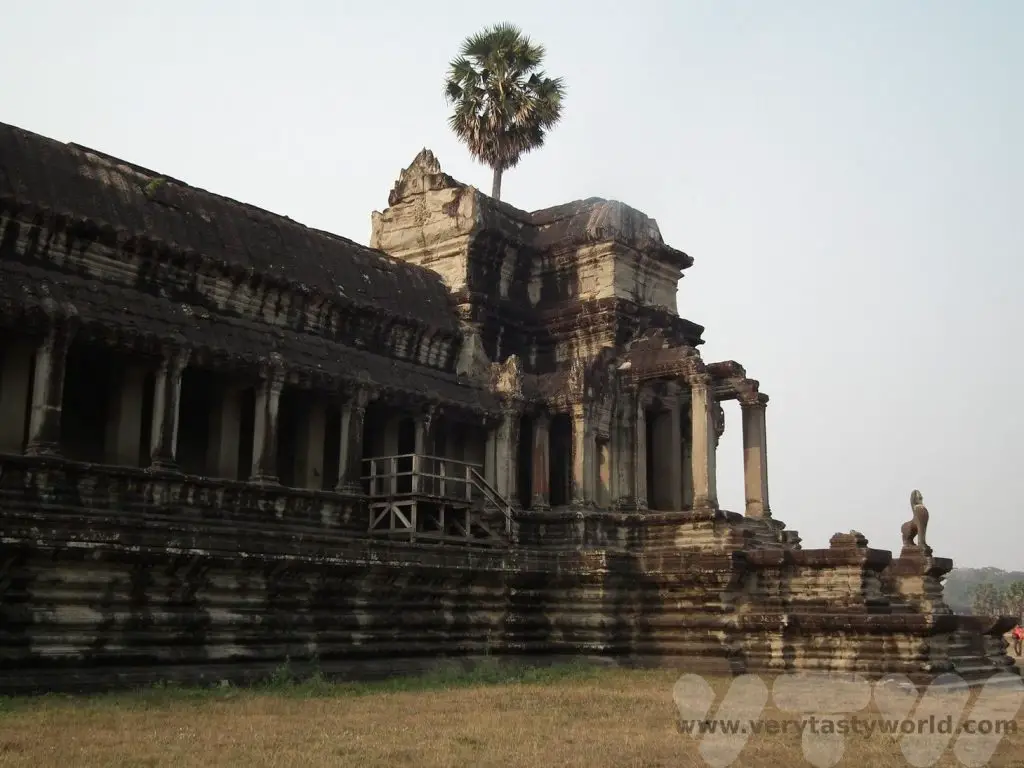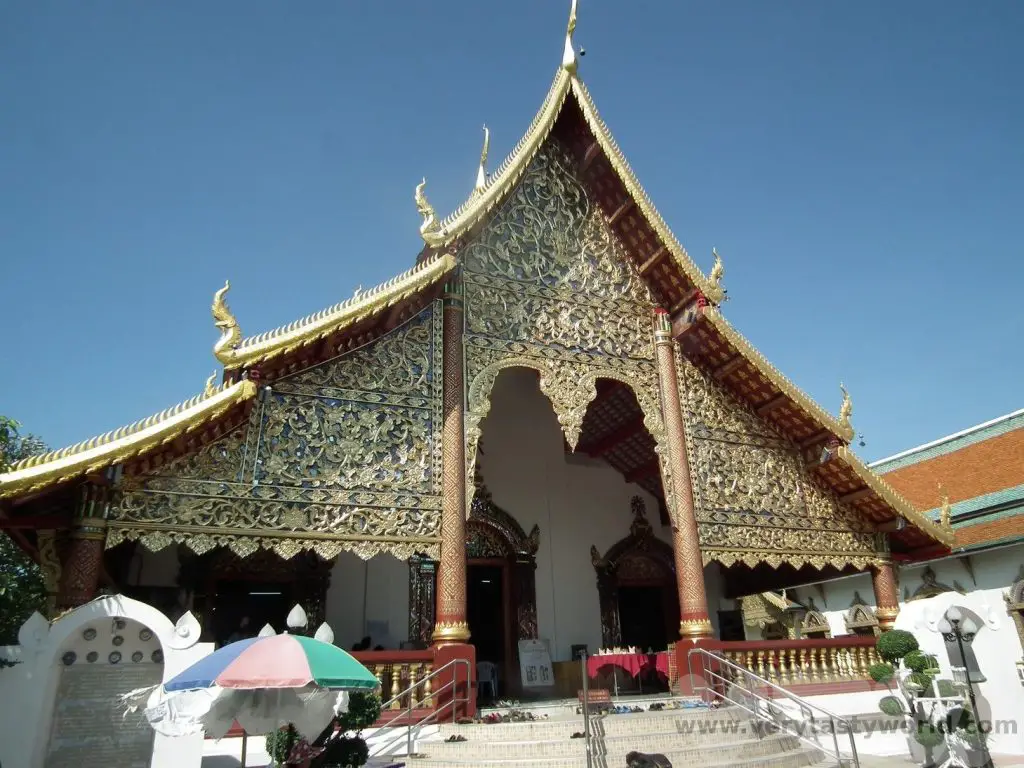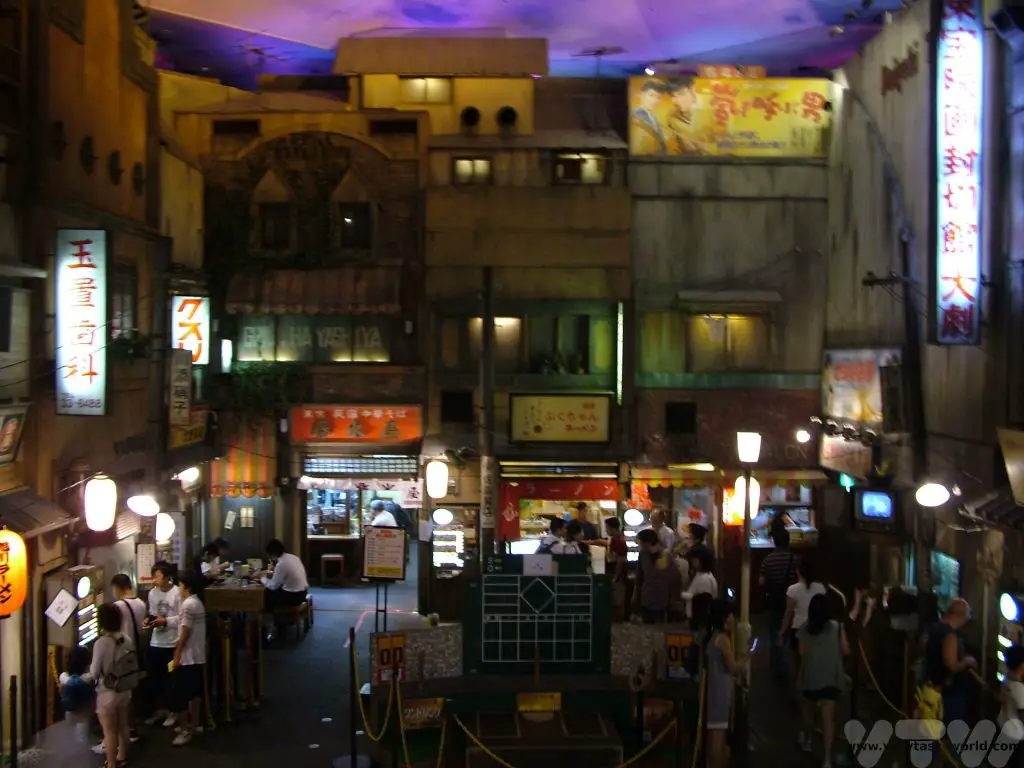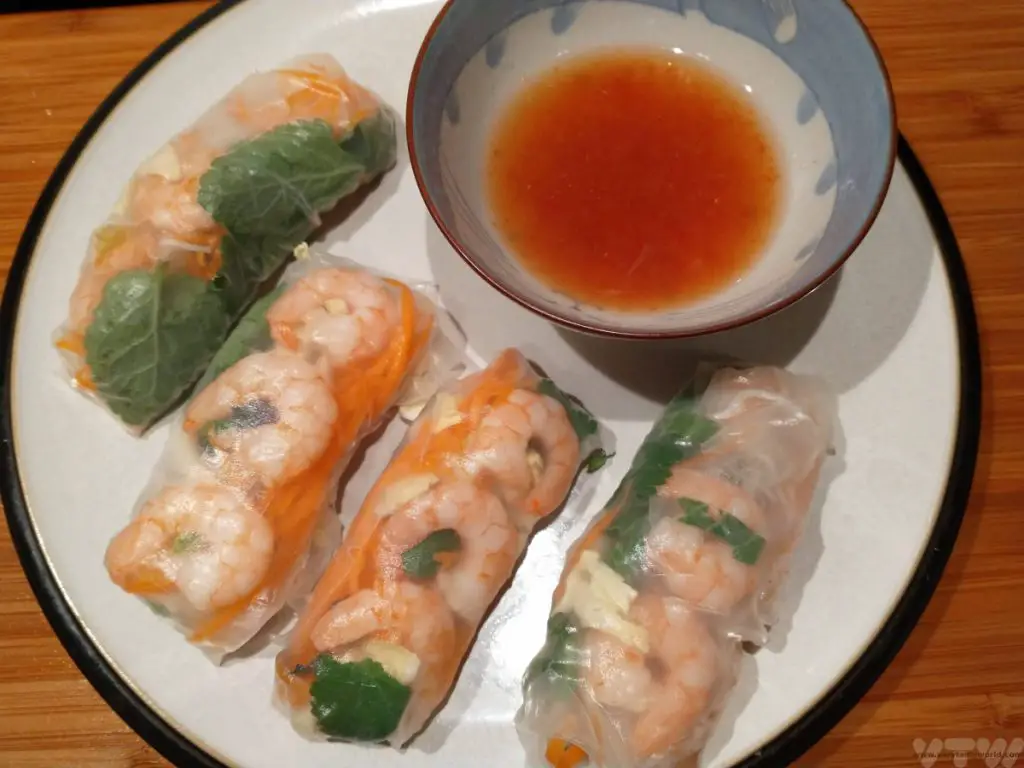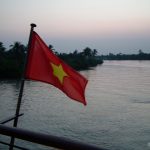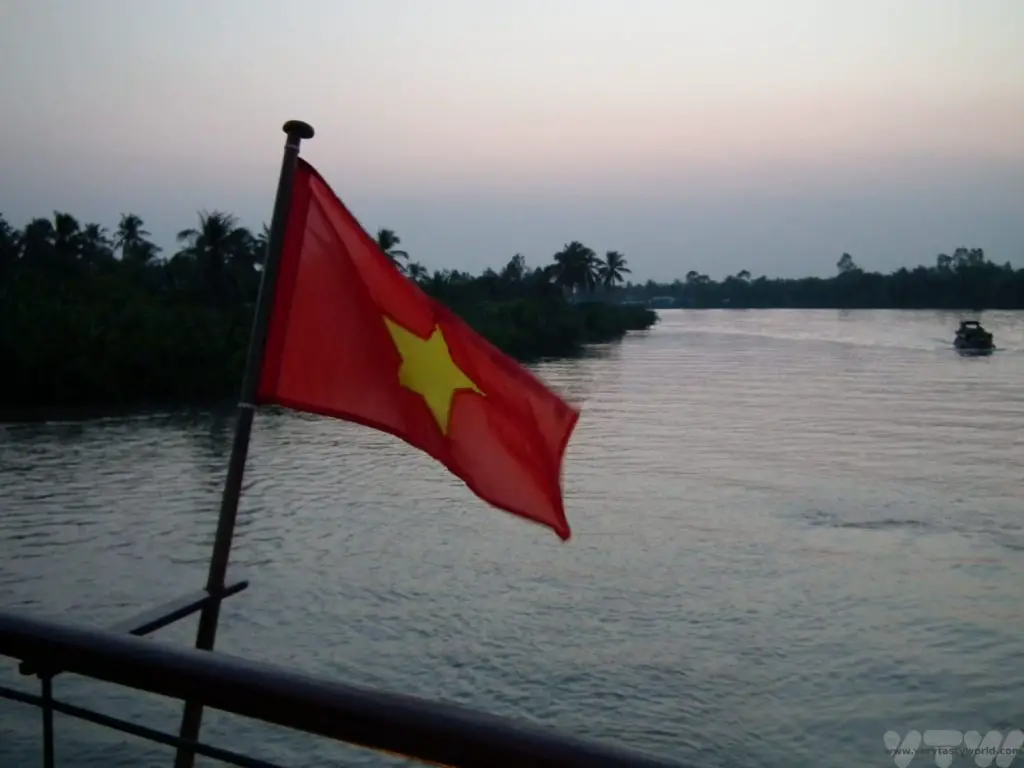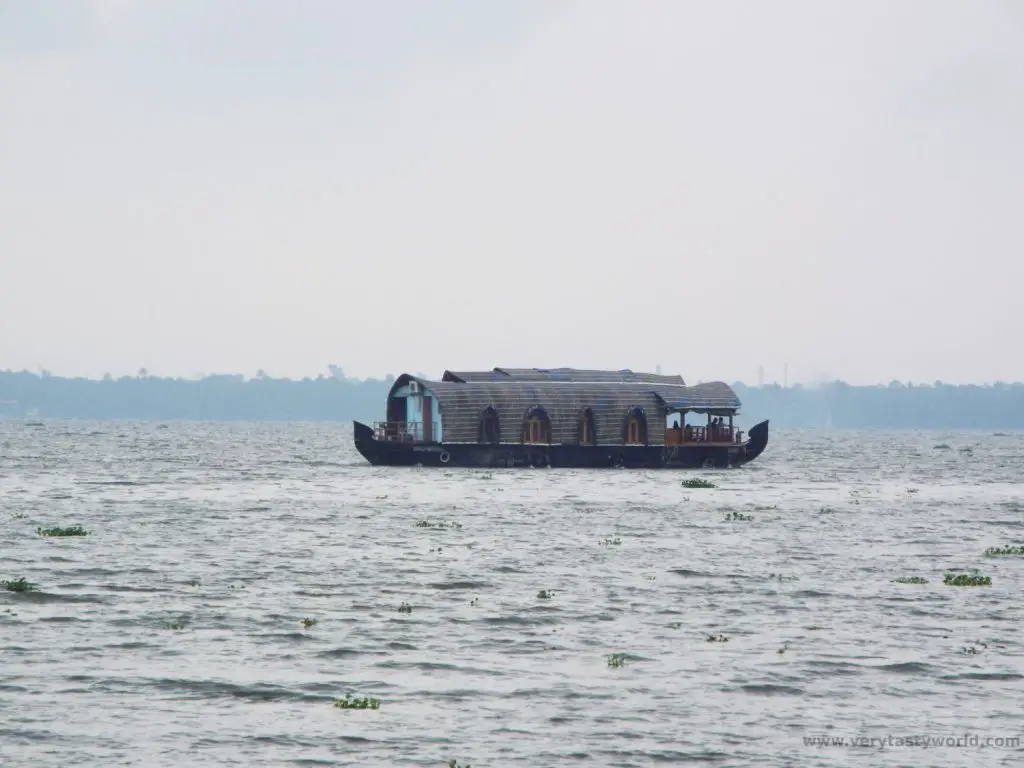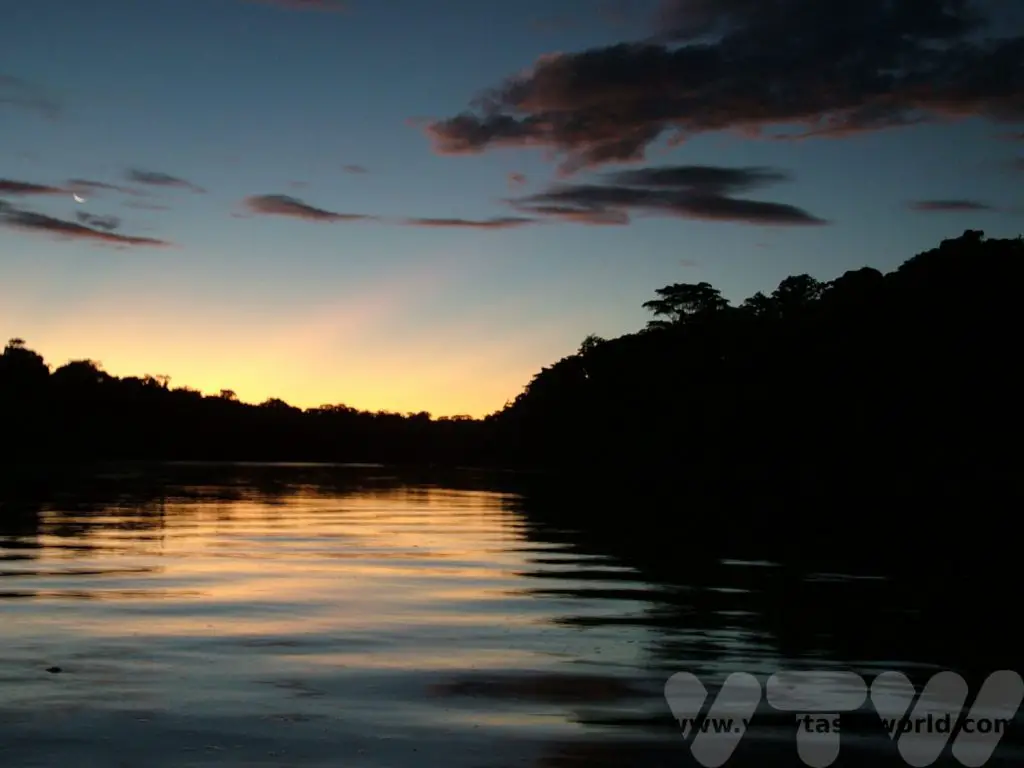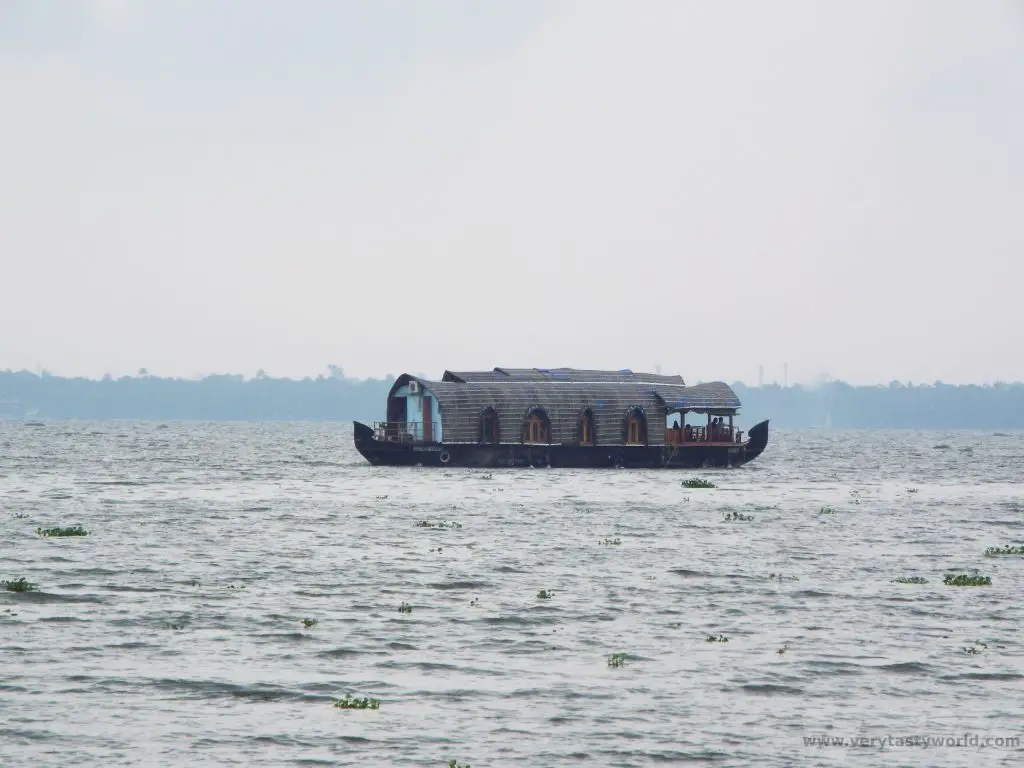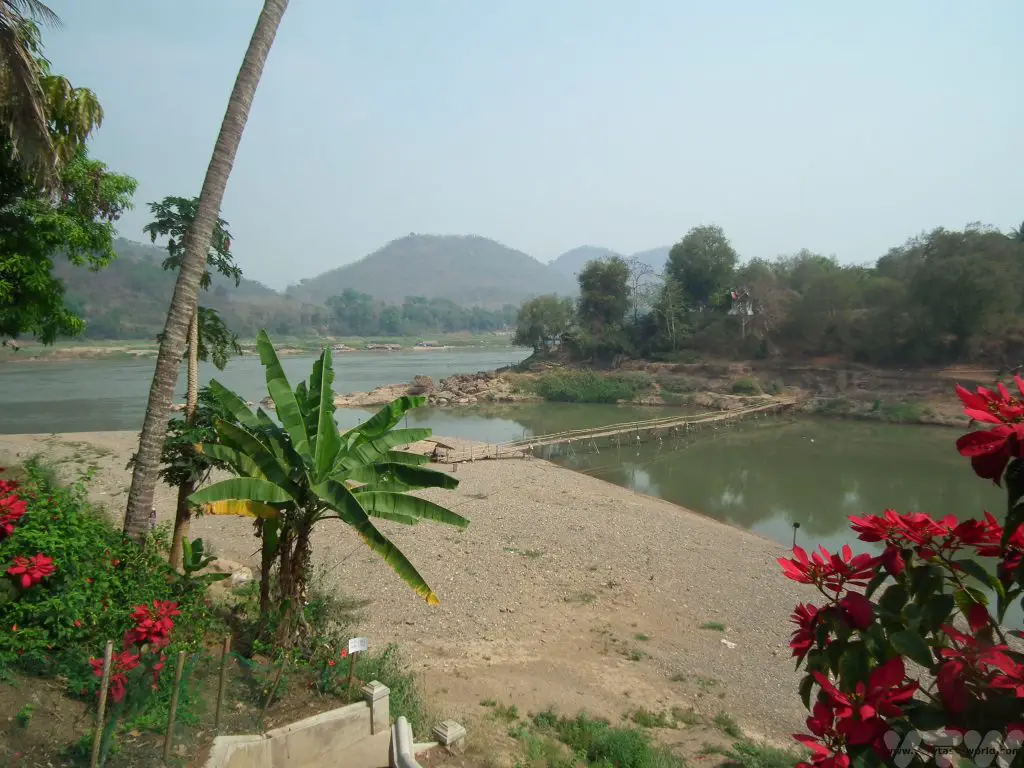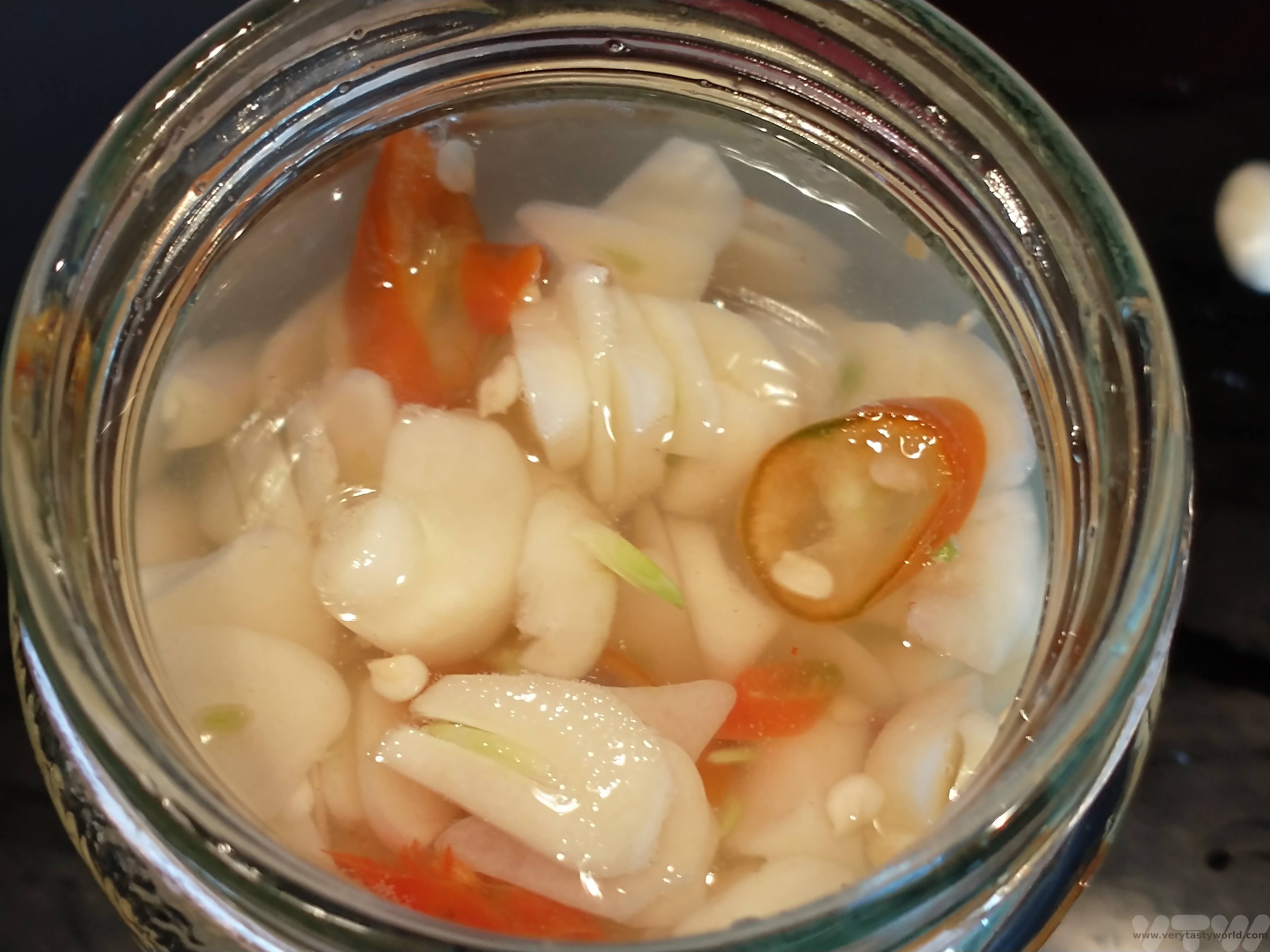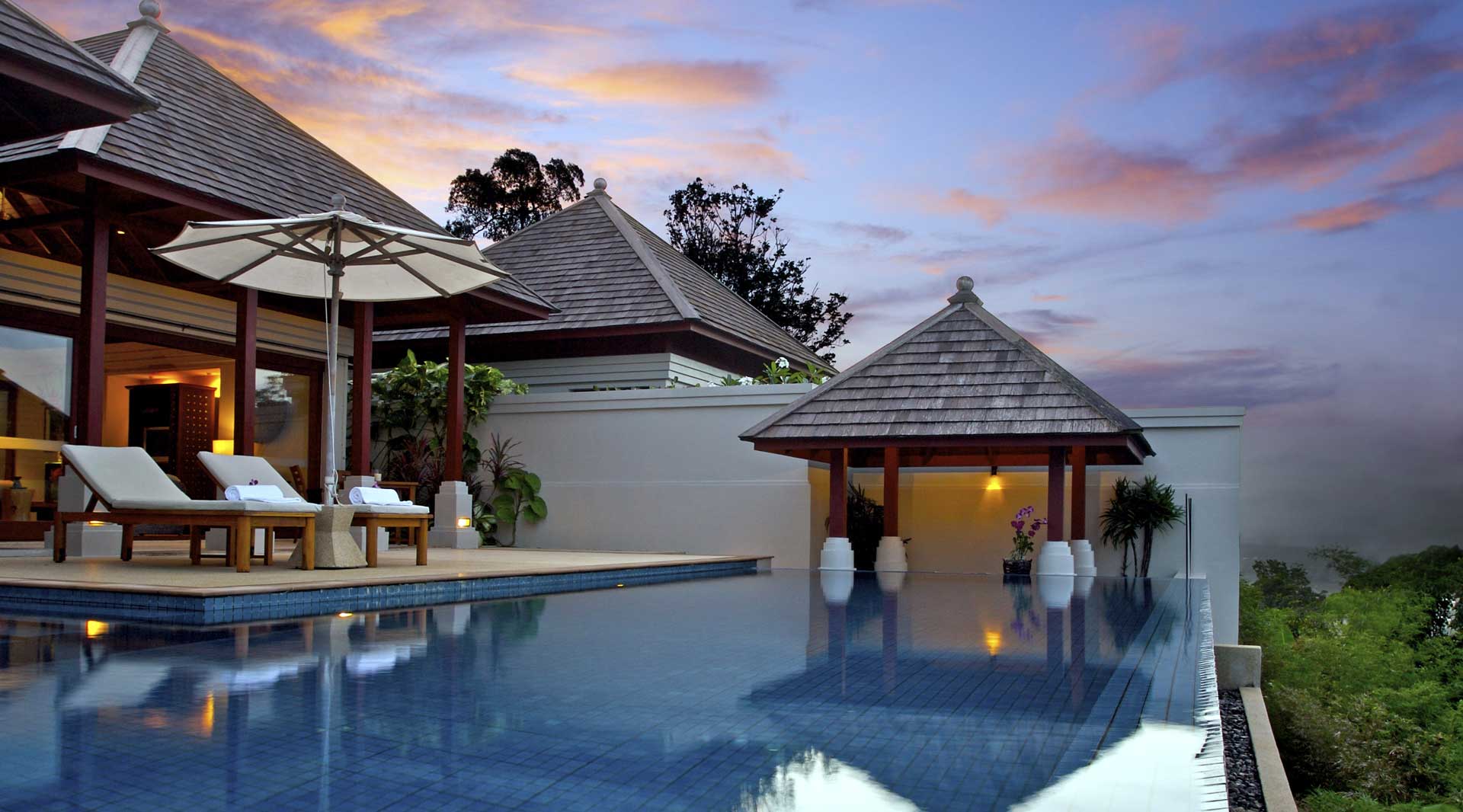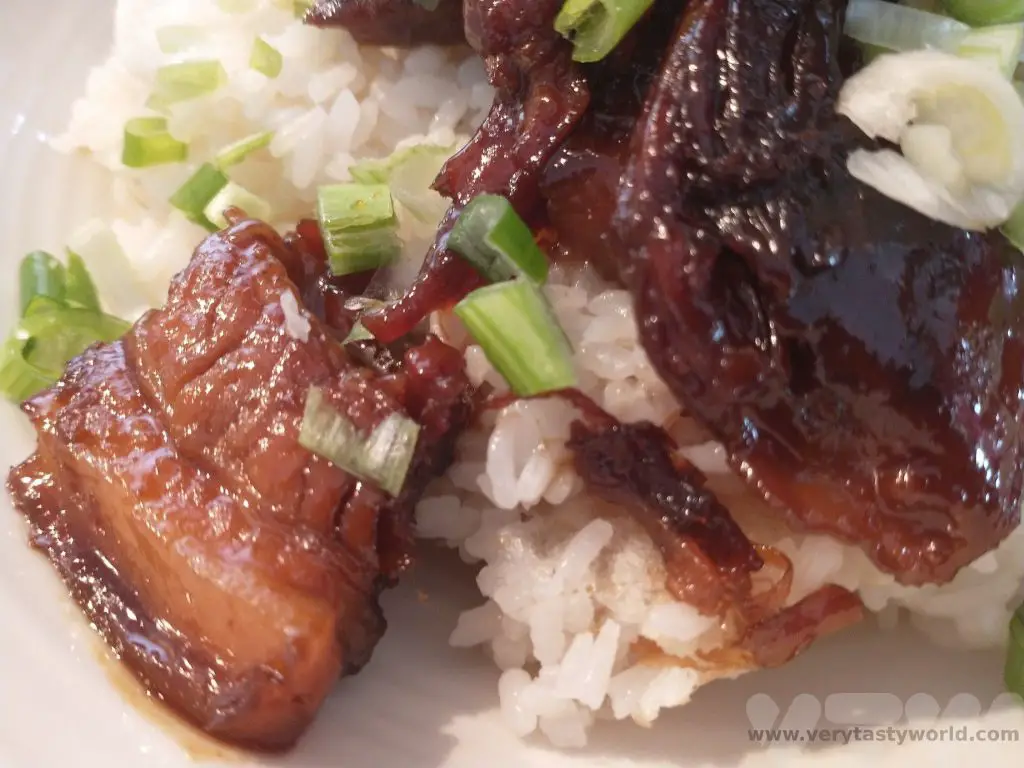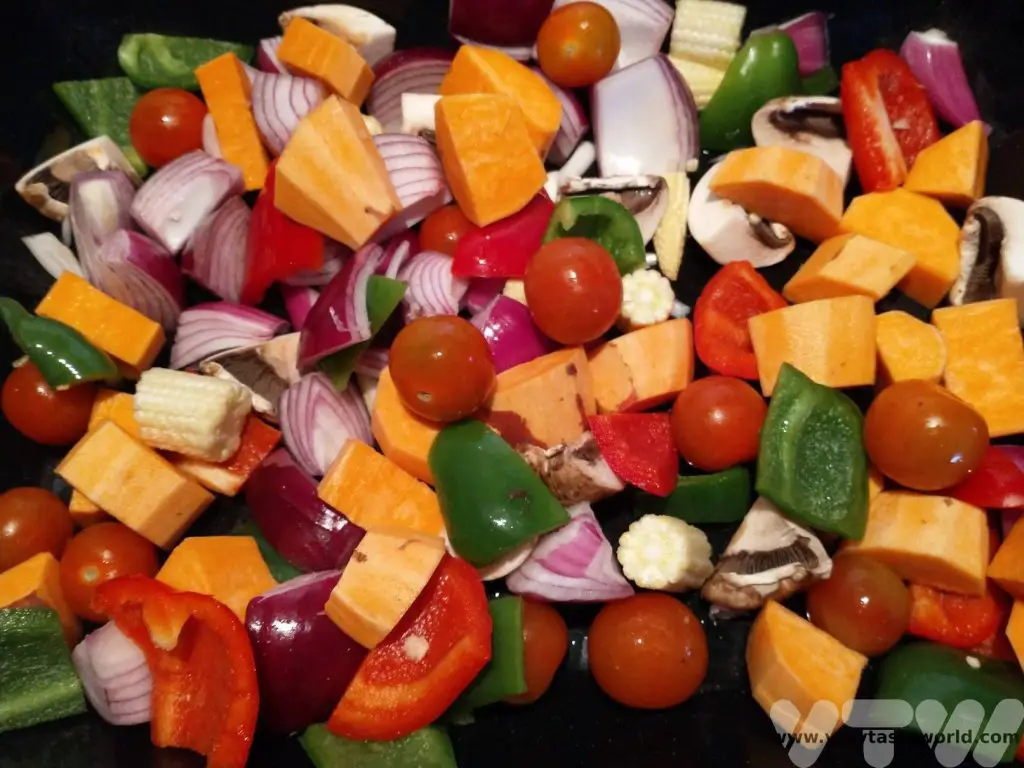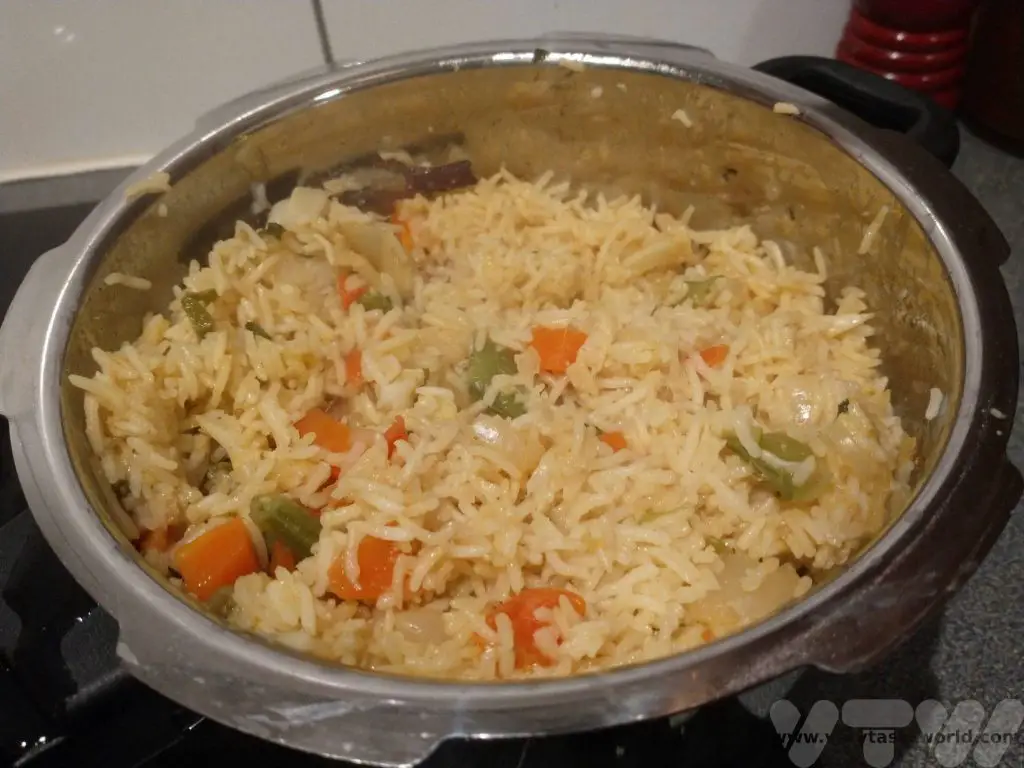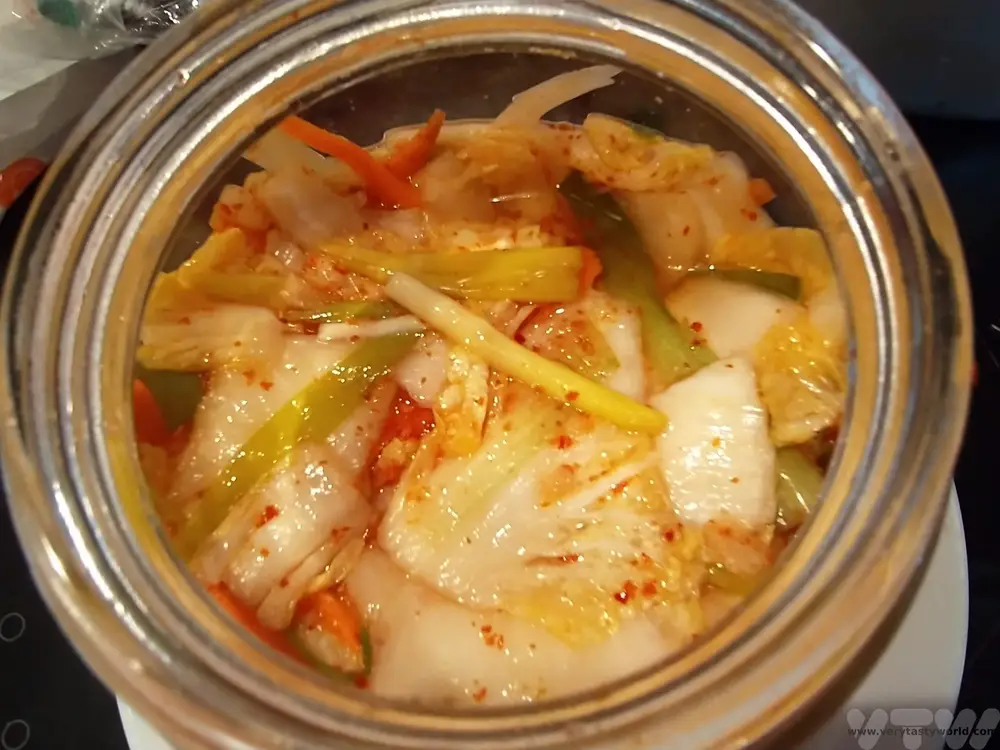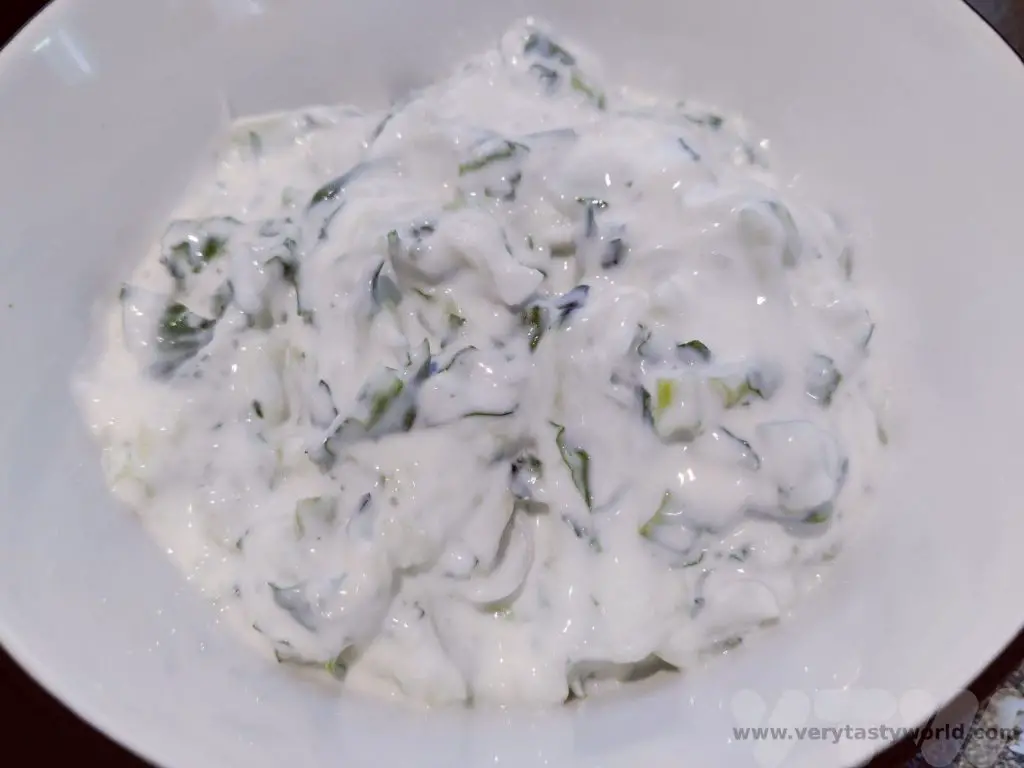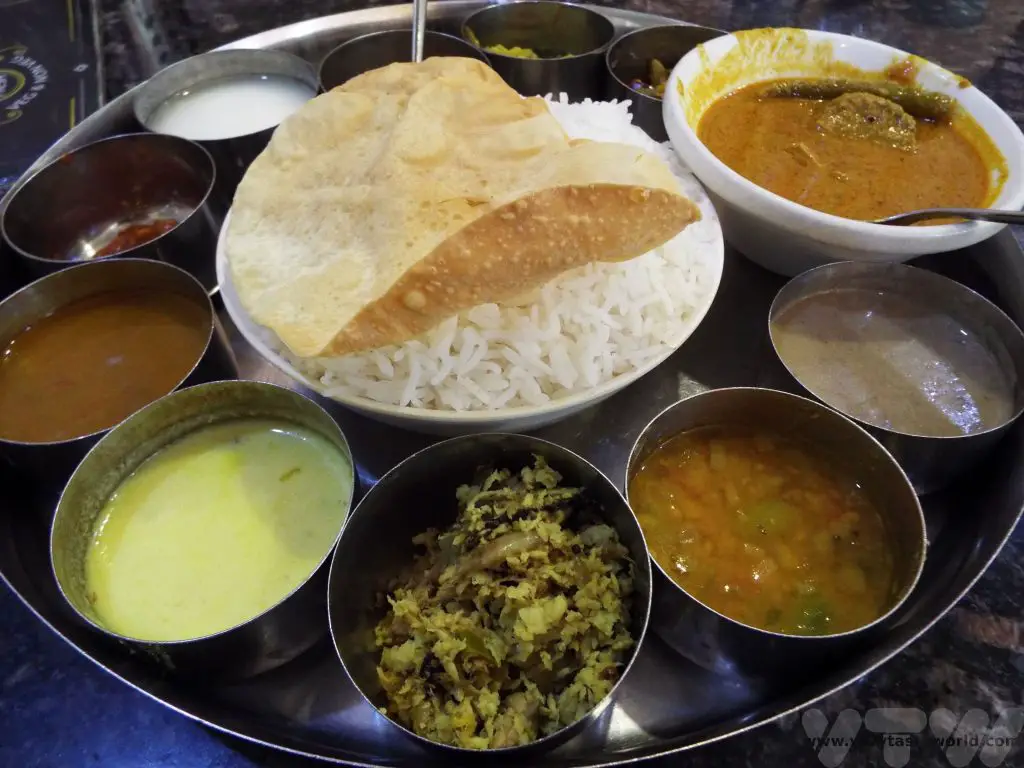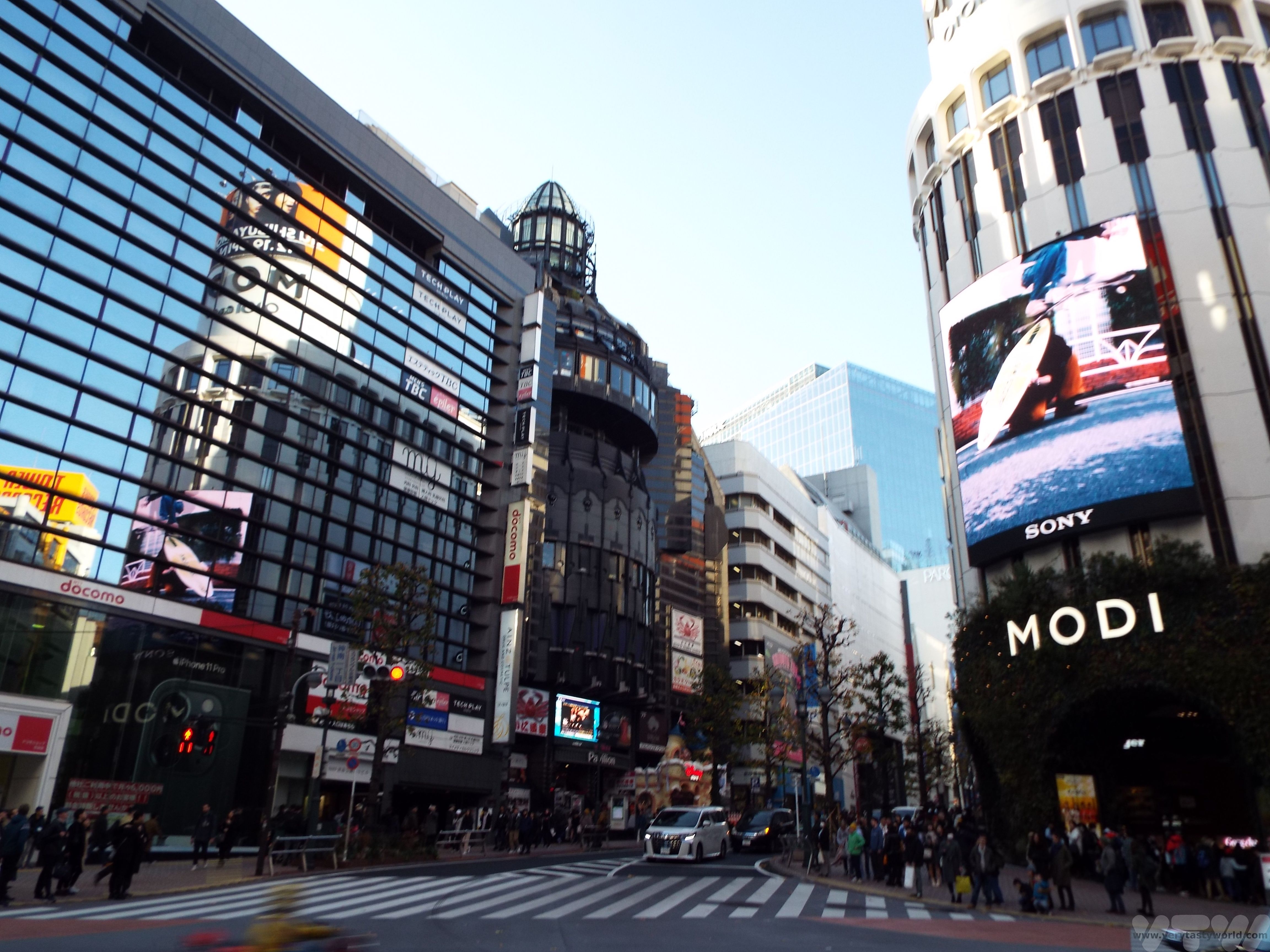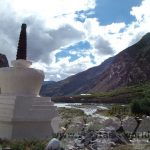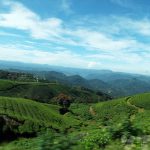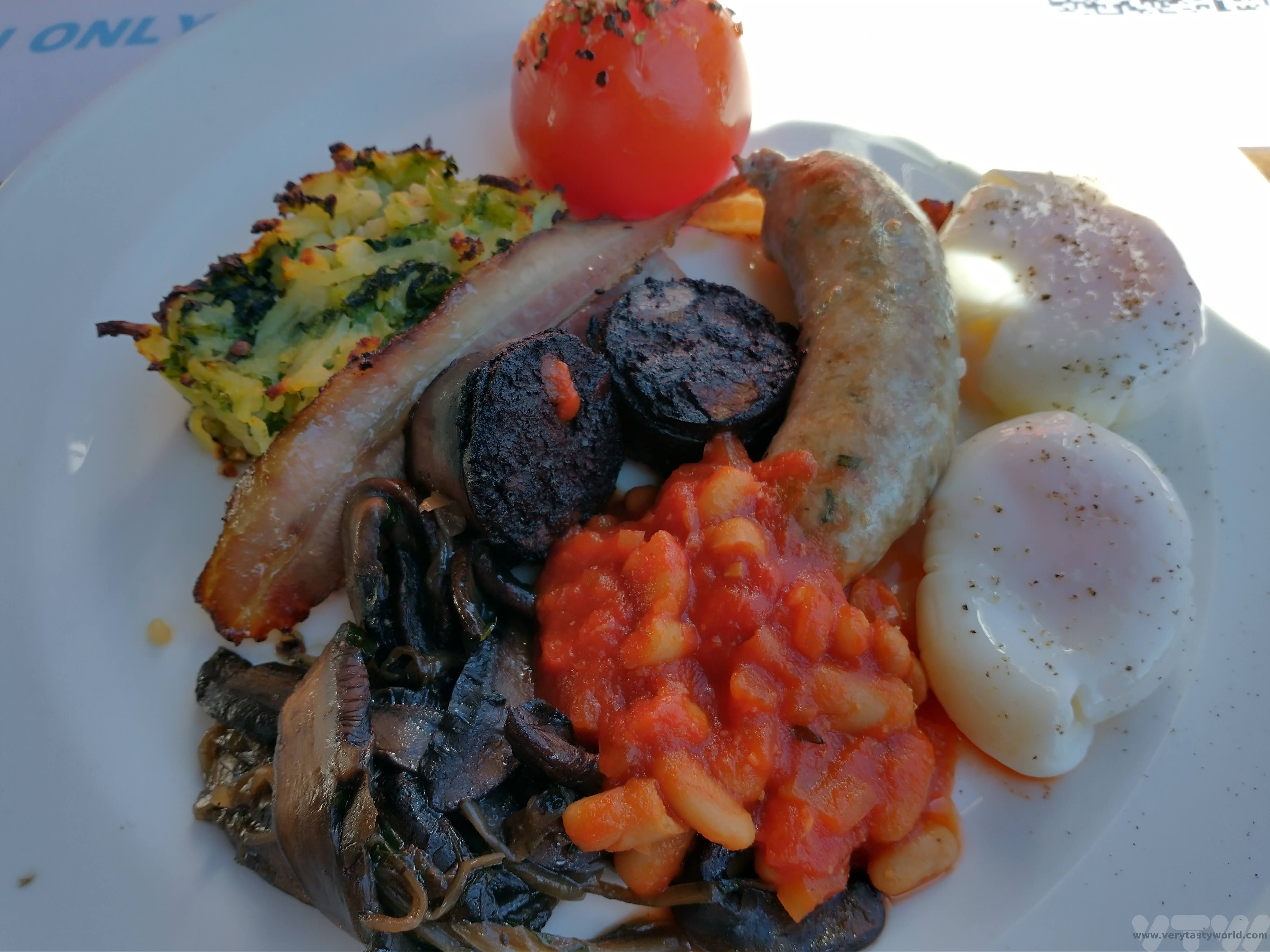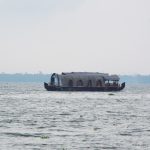A One Day Hanoi Itinerary
The northern city of Hanoi is an essential place to visit on a trip to Vietnam. It’s a city we would describe as ‘shabby chic’ compared with the ‘bling’ of Ho Chi Minh City (aka Saigon) in the south. Hanoi has a long and interesting history and lots of fascinating sights. Many are located within a reasonable distance of each other, close to the old part of the city. Here are our suggestions for a one day Hanoi itinerary.
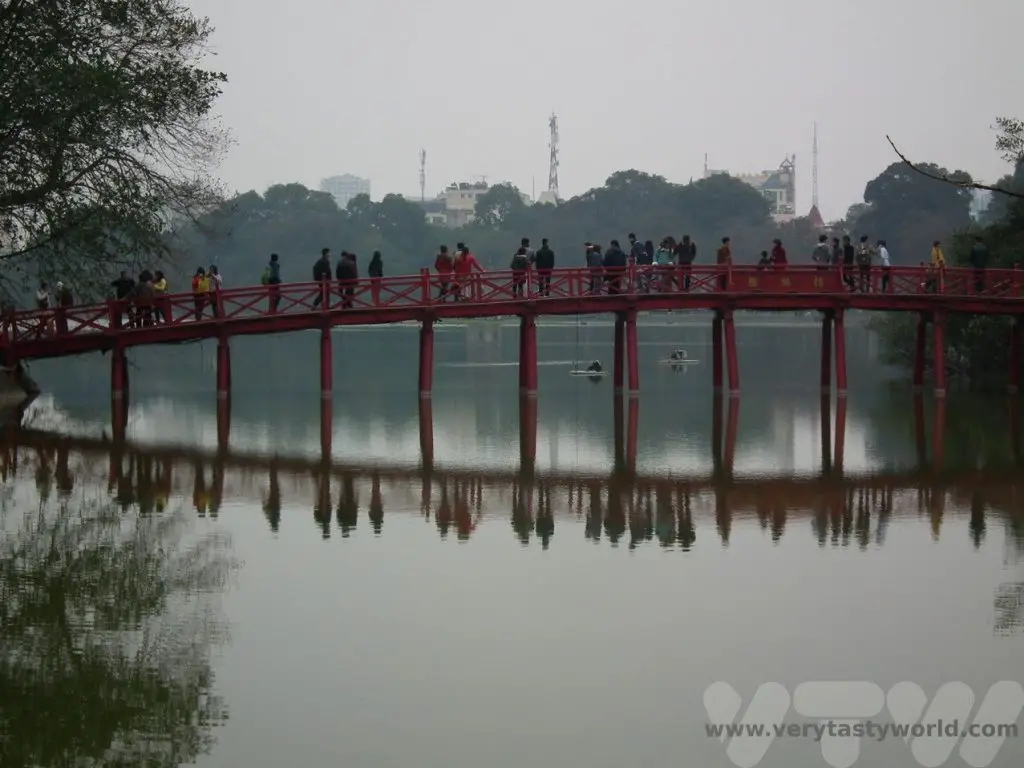
A Brief History of Hanoi
The location where the city now stands has been populated for around 5000 years, and was the capital of the Au Lac, the Vietnamese nation during the 3rd century BCE, but the area was conquered by the Han Dynasty and ruled by China for hundreds of years. In 939 the Vietnamese Ngo dynasty was founded when Ngo Quyen conquered the Chinese in the Battle of Bach Dang River. The last king of this dynasty, the sadistic Le Long Dinh died in 1009.
Power transferred to a palace guard chief called Ly Cong Uan who became Emperor Ly Thau To, founding emperor of Ly dynasty. He established a political centre in the north of the country, naming it Thang Long which means ‘ascending dragon’. Highly revered, he was the emperor who established an era of prosperity for the city. Thang Long was the capital of Vietnam until 1802 when the Nguyen dynasty moved the administration to Hue. In 1831 Thang Long was renamed Hanoi, which means ‘inside the rivers.’ Vietnam was colonised by the French in 1873 and they designated Hanoi to be the capital of the whole of French Indochina. The French abandoned Vietnam during World War 2.
Ho Chi Minh, leader of the communist revolutionary party the Viet Minh, declared Vietnamese independence on the 2nd September 1945 and established Hanoi as the capital of the Democratic Republic of Vietnam, an independent country. The city endured turbulent times during the last half of the twentieth century – the French returned in 1946 so Ho Chi Minh led a guerilla war and defeated them in 1954 in the First Indochina War.
The Second Indochina War, better known as the Vietnam War (although in Vietnam, local people refer to it as the American War) followed immediately and was fought from 1955 to 1975, eventually leading to the reunification of Vietnam. Since 1976 Hanoi has been the capital of the Socialist Republic of Vietnam.
Getting Around Hanoi
There are plenty of options for getting to Hanoi’s attractions. We stayed very close to the Old Quarter which was perfect for exploring the area. Most of the attractions mentioned here are within walking distance. Although beware, the very first thing that will strike you about Vietnam is the sheer number of scooters and motorcycles. They are everywhere!
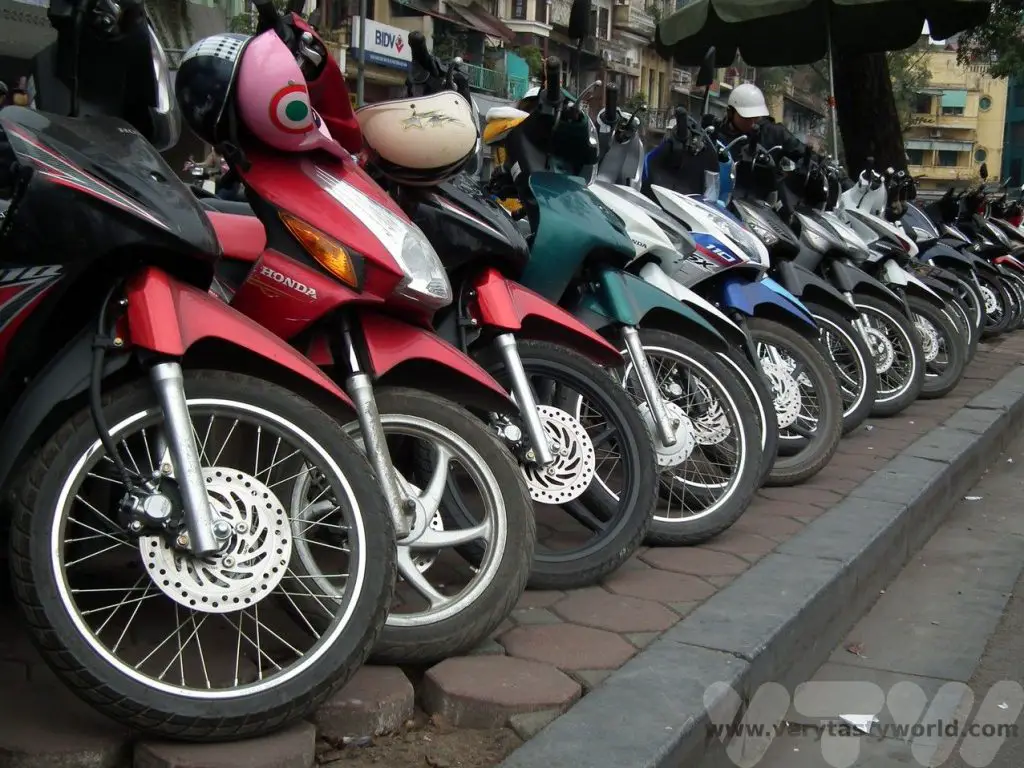
The next thing that will strike you is – how do you cross the road? We have a helpful video guide in this post. Wandering around Hanoi is a pleasure in itself – an undeniable assault on the senses perhaps, but walking in this city is a great way to discover its marvellous nooks and crannies.
Alternatively, there are buses and taxis available for transportation.
One Day Hanoi Itinerary – Morning in The Ba Dinh District
Ho Chi Minh – The Father of the People
The morning started with a visit to the Ho Chi Minh Mausoleum on Ba Dinh Square, the final resting place of the highly revered Vietnam revolutionary leader. Inspired by Lenin’s tomb and other communist leaders, the body of Ho Chi Minh has been embalmed and lies in state, guarded at all times. It is possible to visit the grand marble construction and file past the body.
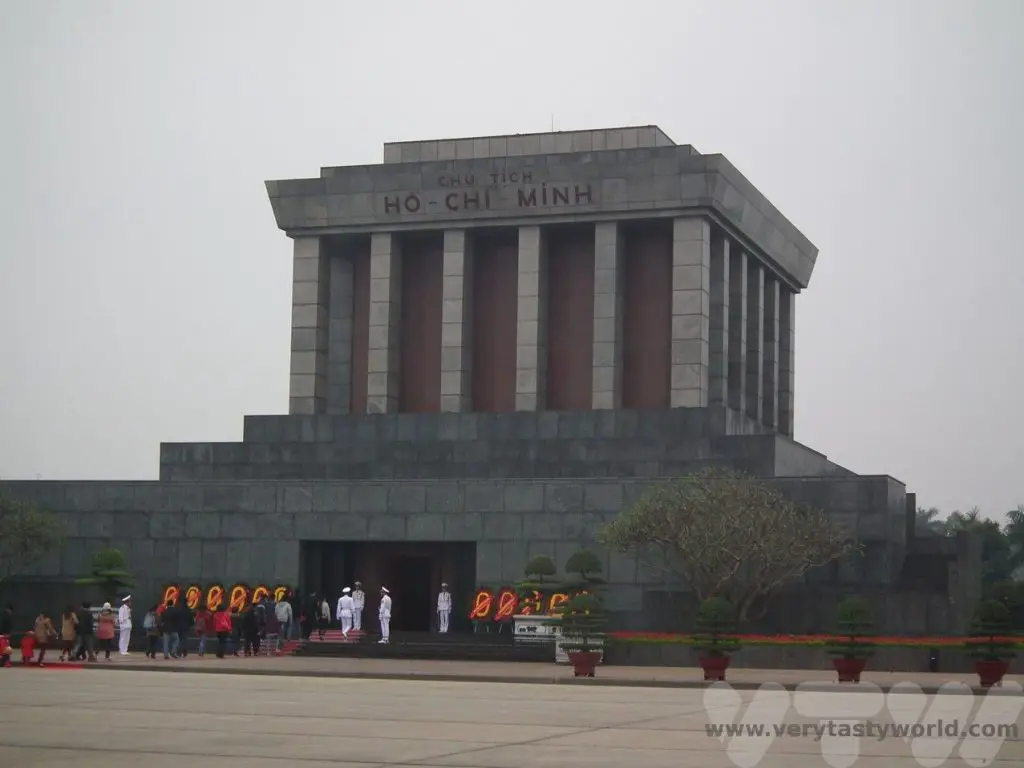
You will most likely need to queue to enter the mausoleum. Respectful dress is required (sleeveless shirts and shorts are not allowed) and you may need to leave your backpack in a locker. You are also expected to pass by the body in silence as a mark of respect. If you are visiting the mausoleum between the 4th of September and the 4th of November, the body will not be available for viewing because it goes to Russia for maintenance at this time.
Interestingly, Ho Chi Minh himself wanted to be cremated and have his ashes distributed through different regions of Vietnam. But the communist party wanted to celebrate and commemorate him, so the mausoleum was constructed in his honour. His wish seemed, to us, to be a much more humble approach.
Our next stop was the presidential palace and former residence of Ho Chi Minh.
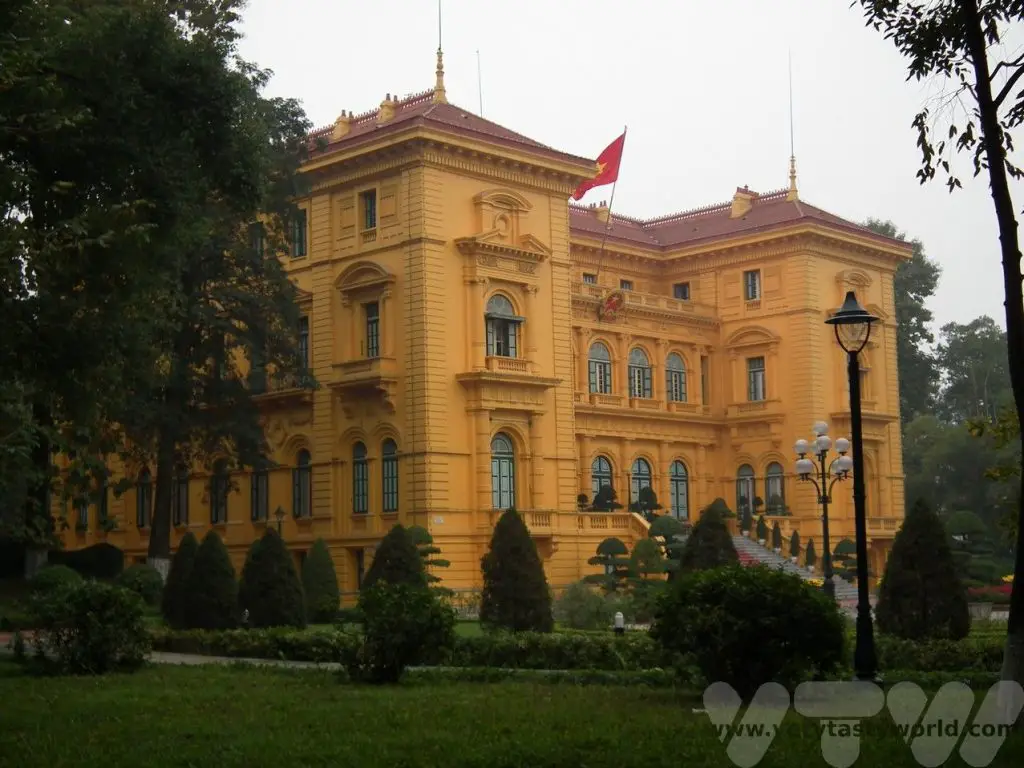
Although Ho could have used the opulent presidential palace as a residence he chose to live somewhere much less ostentatious. The two room stilt house, set amidst a pretty garden with a carp pond, was his ostensible home from 1958 to 1969. A simple traditional building with minimal facilities. It’s possible to look through the windows to see how Ho lived.
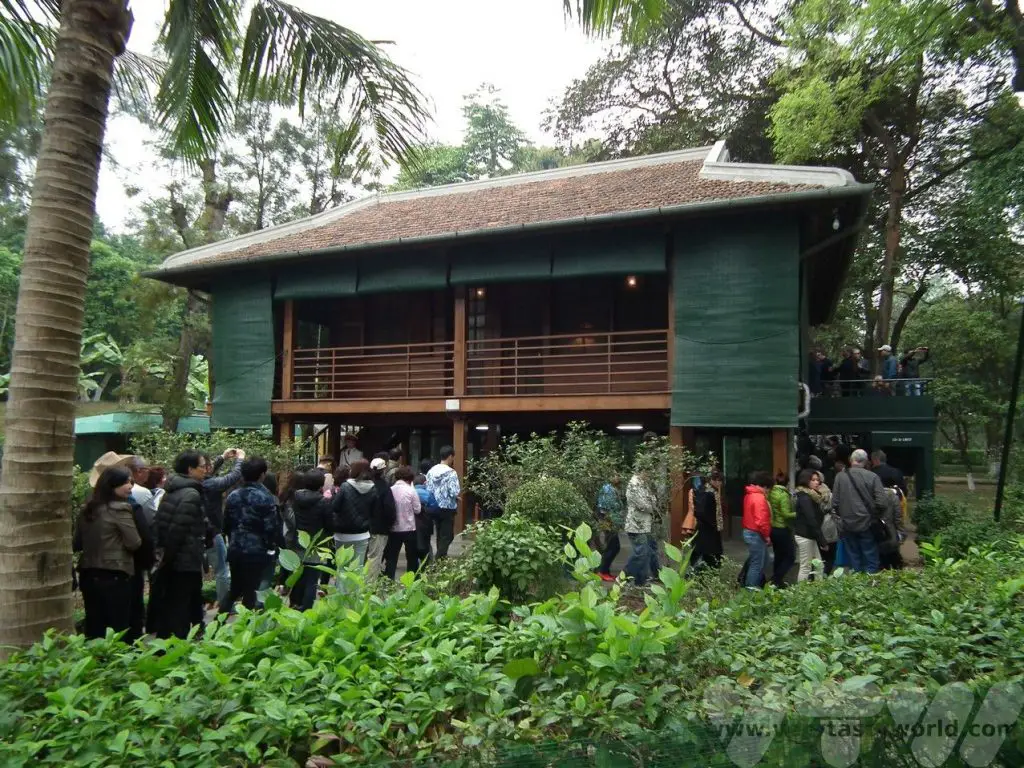
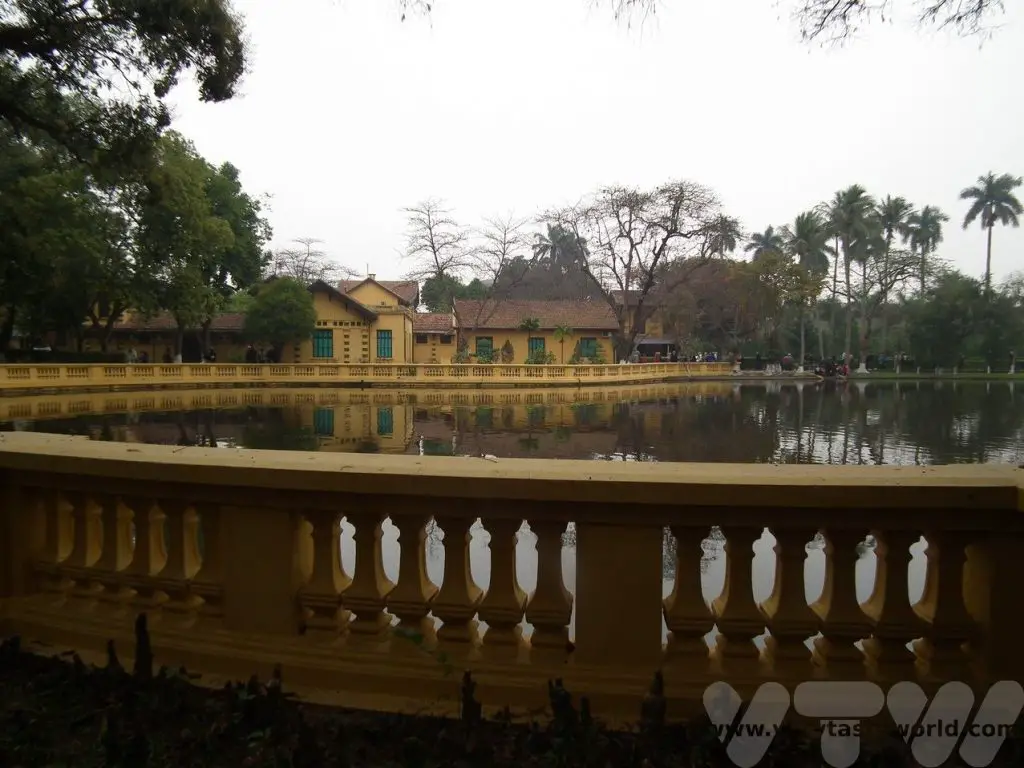
It was fascinating to learn about Ho and quite easy to understand how he was – and still is – revered by the Vietnamese people in Hanoi.
One Pillar Pagoda
Just to the south of the complex is the One Pillar Pagoda (note this is open every morning but closed on Monday and Friday afternoons). It is a wooden pagoda built on a single stone pillar that sits in the middle of a serene lotus pond that is designed to give the appearance of a lotus flower emerging from the water. It is a Buddhist pagoda and was constructed in 1049 by Emperor Ly Thai To apparently to celebrate the birth of a male heir.
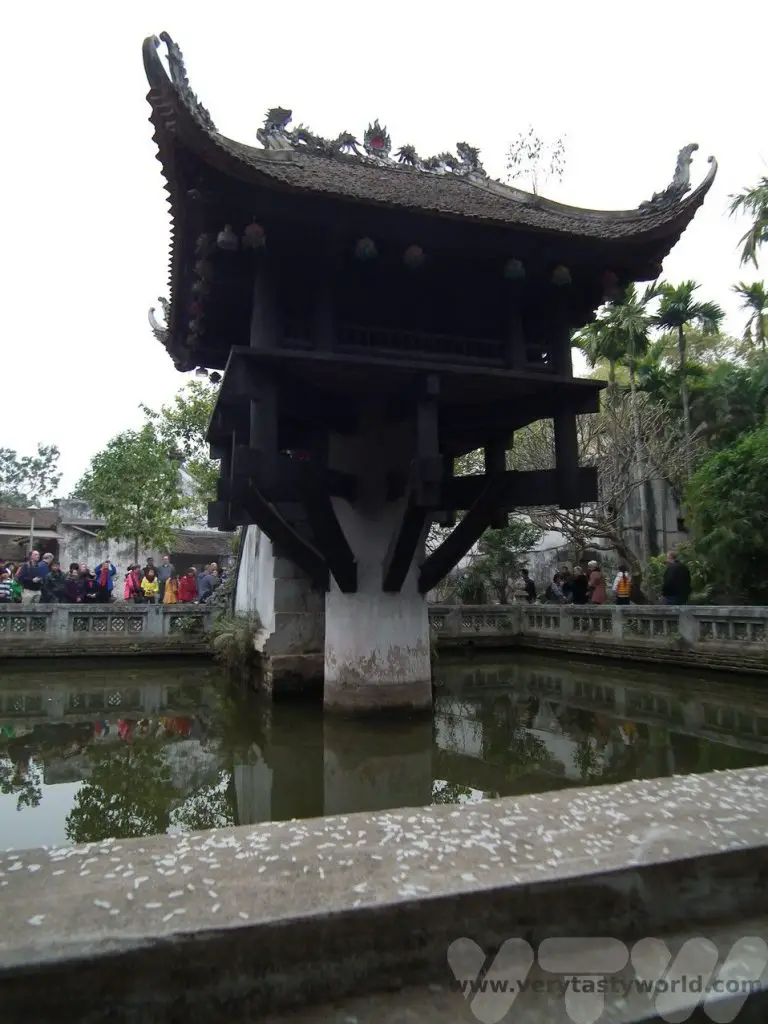
The Temple of Literature
Moving south again, the morning concludes with a visit to the remarkable Temple of Literature. It was constructed in 1070 to honour philosopher Confucious and went on to become Hanoi’s first university in 1076, a prestigious seat of learning. It is another legacy of the Ly dynasty. Students learned mathematics, literature and calligraphy. Although it is no longer a university (and hasn’t been since 1779) it is a monument to education. Even today, Vietnamese students often visit the temple to receive blessings for their own studies.
A beautiful site to visit it has five courtyards.
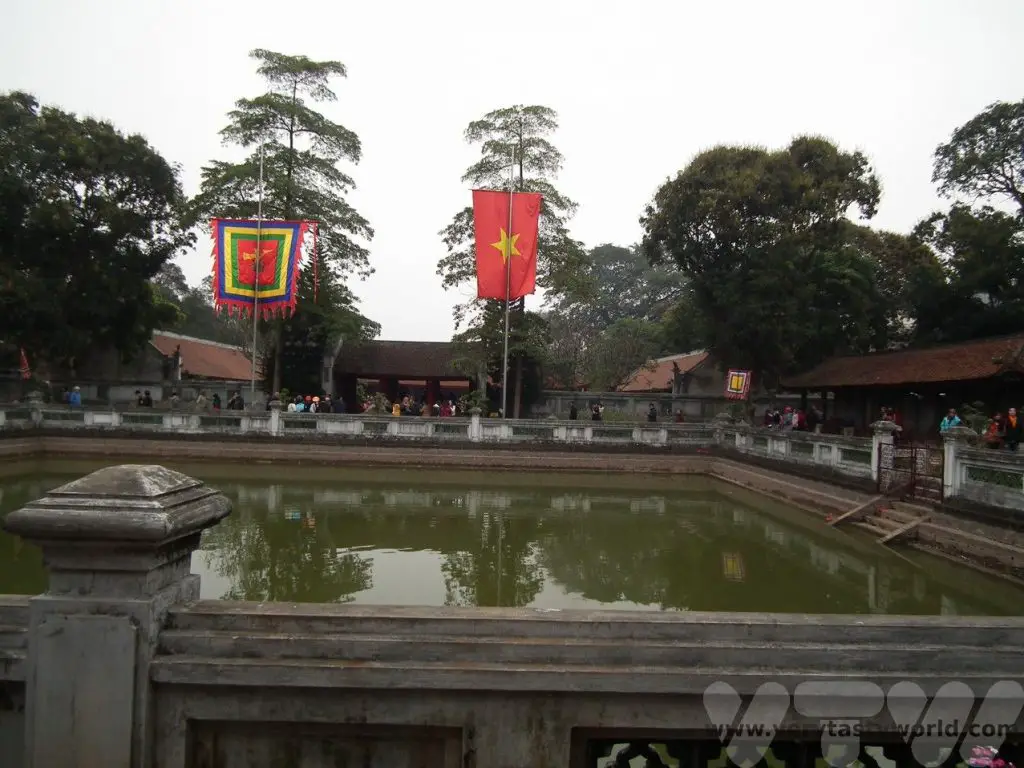
In the centre is a pool, the well of heavenly clarity. It can be seen on the 100,000 dong note.
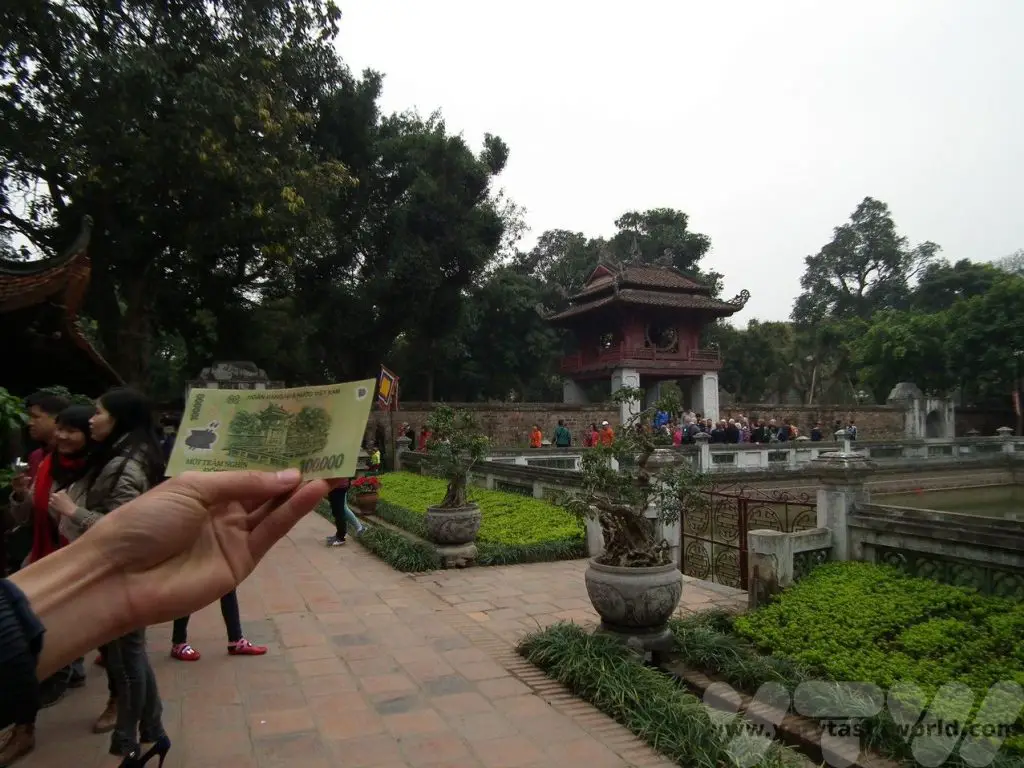
You will see many tortoises throughout the temple – these represent wisdom. There are multiple stelae onto which the names and birthplaces of graduates of the university (renowned for its incredibly difficult exams) are carved. The crane standing on top of a tortoise is a symbol of longevity.
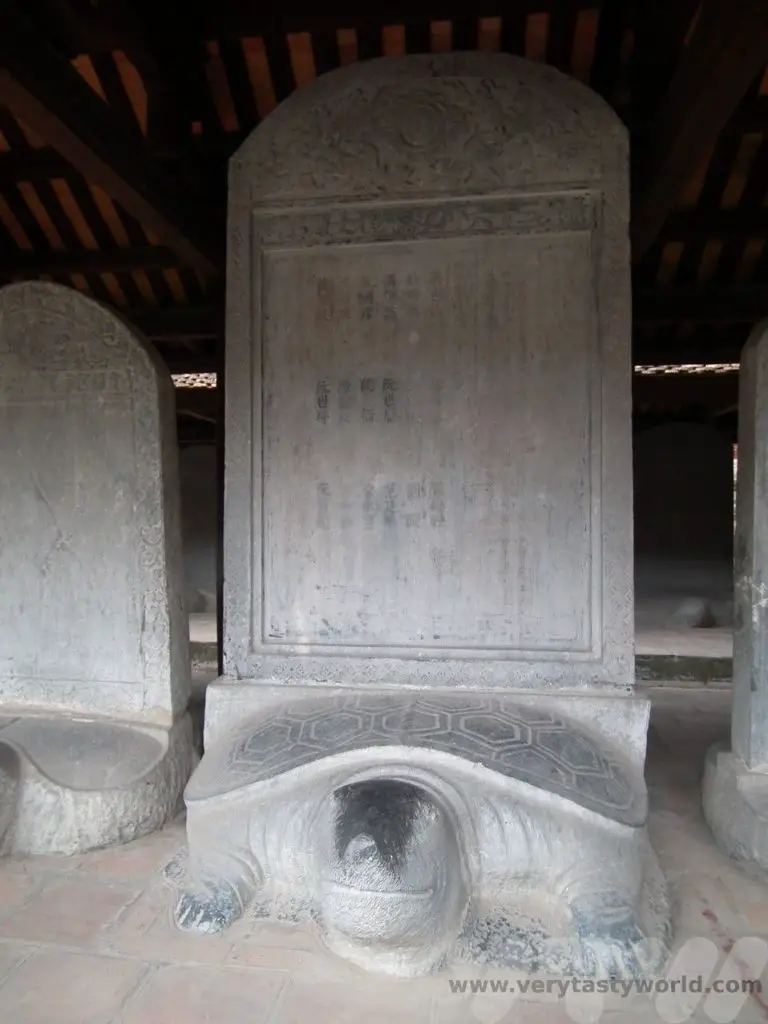
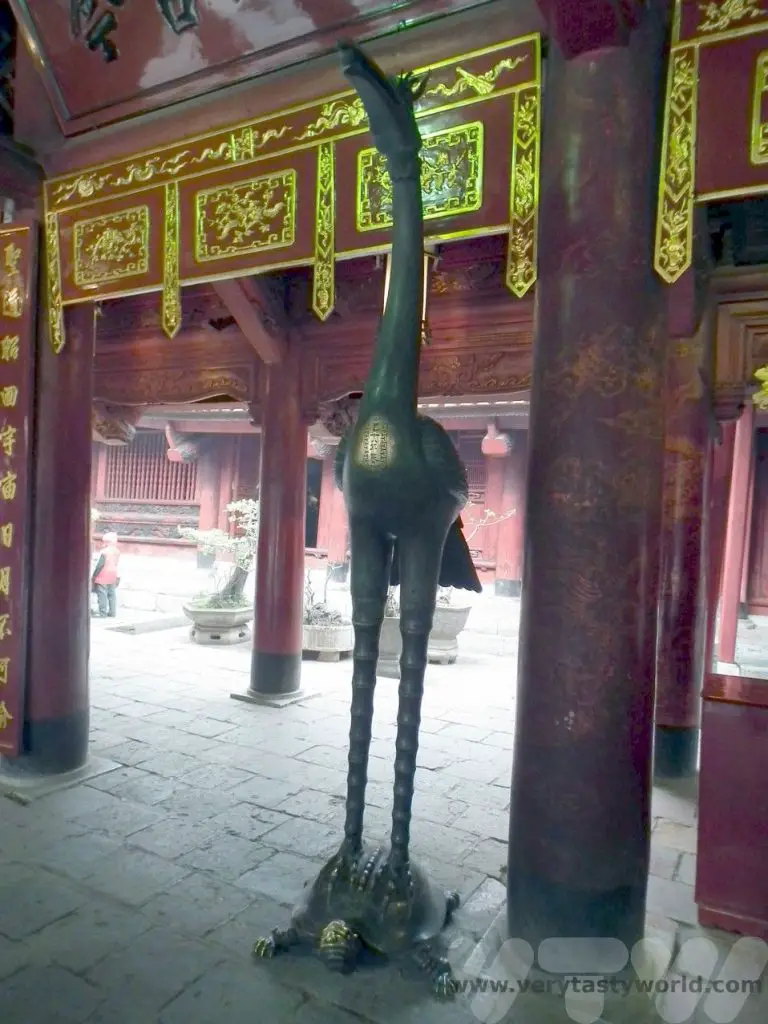
Again, this is a site that is considered hugely culturally important so it is important to behave respectfully. There are even rules about not stroking the tortoises’ heads (quite right too!).
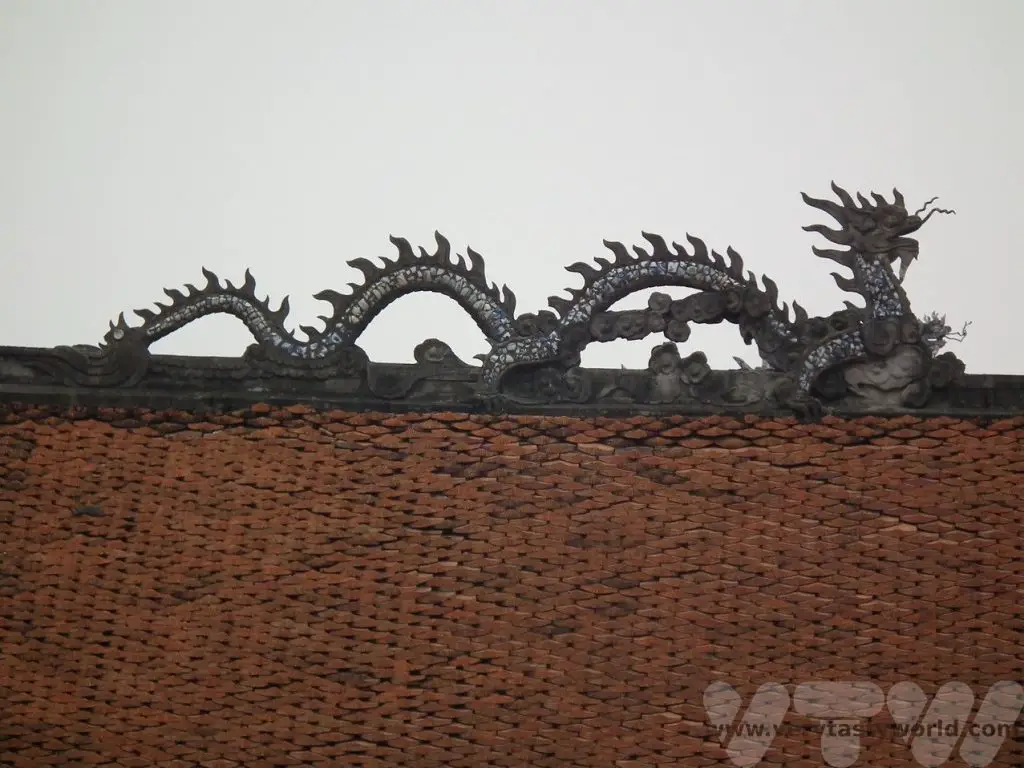
The street on the eastern road adjacent to the Temple of Literature has a large number of restaurants. There’s a great variety of local food here, perfect for stopping for lunch.
One Day Hanoi Itinerary – Afternoon In The Old Quarter
Just up the road from the Temple of Literature is the Vietnam Museum of Fine Arts. If you like art, especially discovering local art, this is definitely a must-see attraction. It’s perfect for a leisurely after-lunch visit.
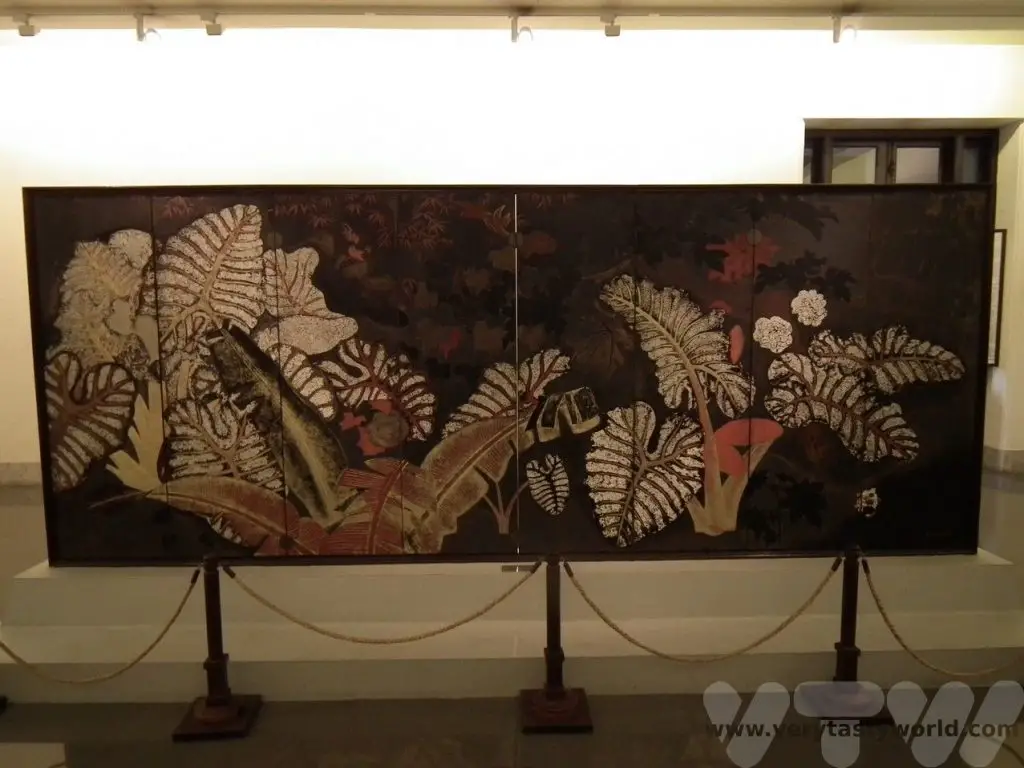
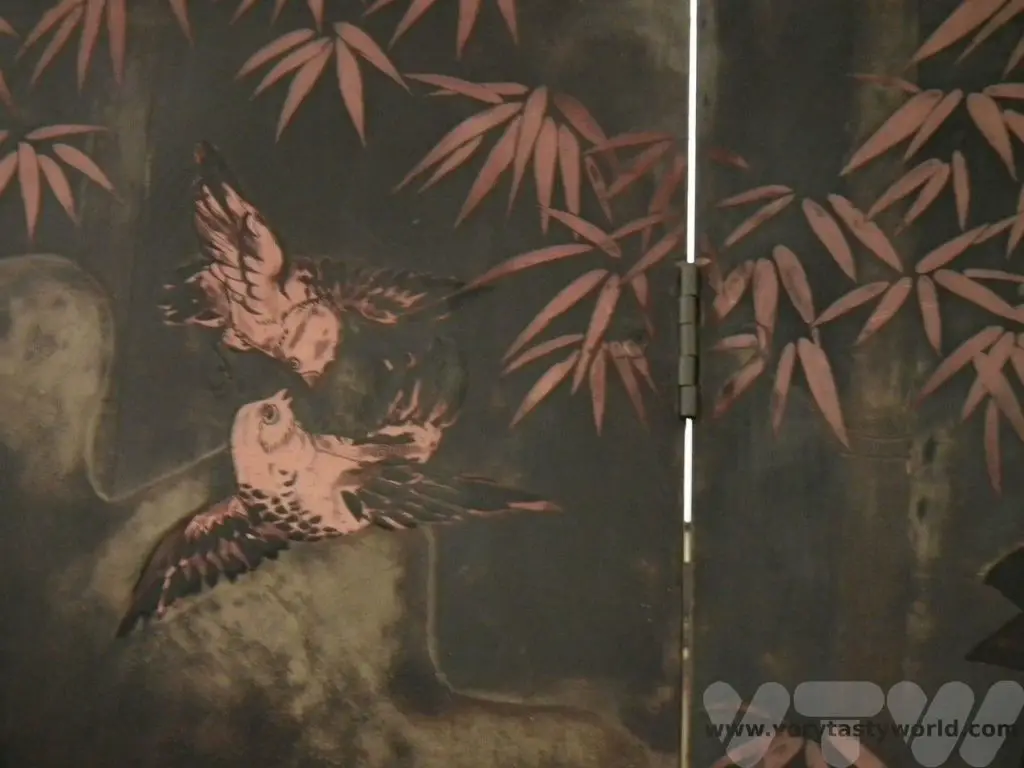
Hoan Kiem Lake
Visiting Hanoi’s old quarter, which lies around a kilometre to the east of the museum. Follow Trang Ti to reach Hoan Kiem Lake (also known as the Lake of the Restored Sword) and the Ngoc Son Temple.
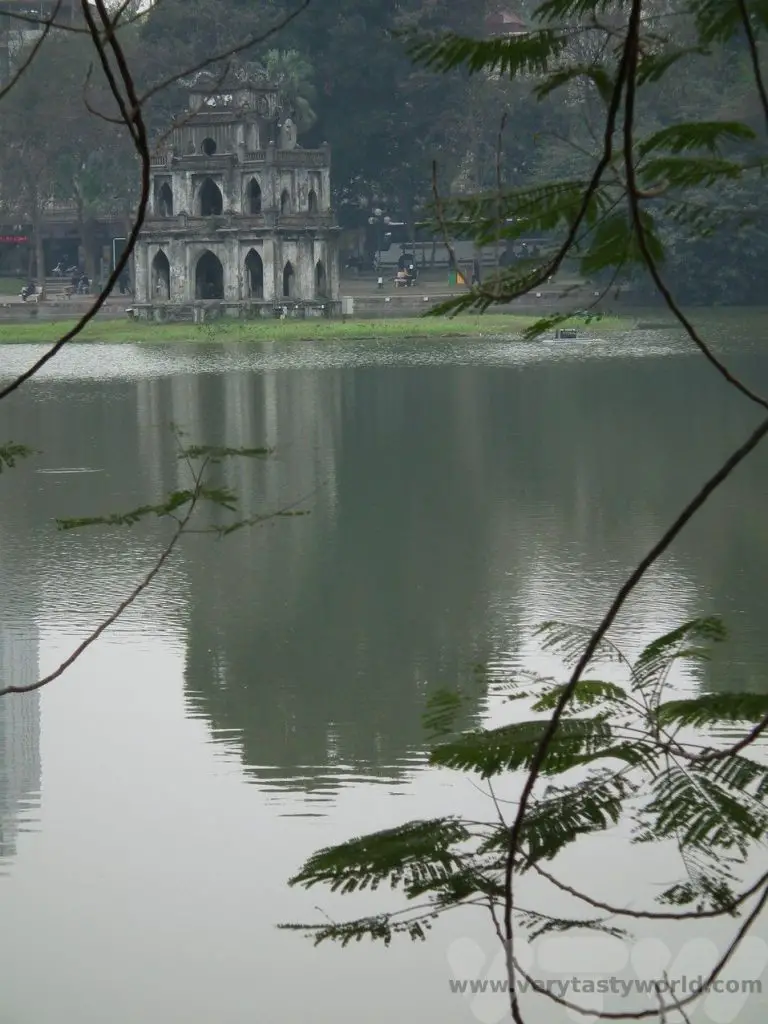
Again, this is a hugely important historic area with a legend that dates back to the founding of Hanoi (as Thăng Long) by Emperor Ly Thai To. A giant golden turtle lived in this lake and gave the Emperor a magical sword which he used to defeat the Chinese occupiers. As soon as he had won the battle, Ly Thai To respectfully returned the sword to the turtle, who dived back into the lake in order to give it back to the gods. It’s very pleasant to walk around the lake.
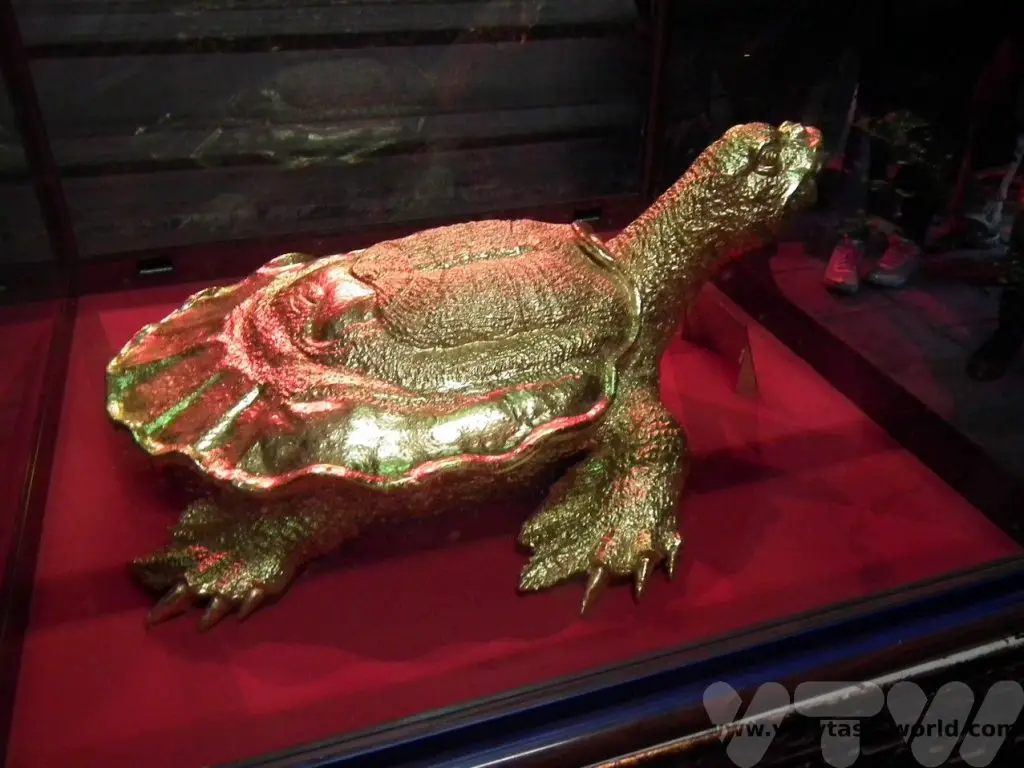
The lake has an island where the Ngoc Son Temple, also known as the Temple of the Jade Mountain, is situated. It is accessible via a vermillion bridge.

It celebrates Van Xuong who was a revered scholar, La To, and General Tran Hung Dao who defeated the Mongol invaders in the 13th century, a glorious victory.
A Cyclo Tour
An enjoyable way to explore the old town is via a cyclo tour. An hour’s tour takes in the atmosphere of Hanoi’s old quarter and is a relaxing way to end this busy day of sightseeing. You also get to experience the thrill of being on the road amidst all those scooters – an experience in itself.
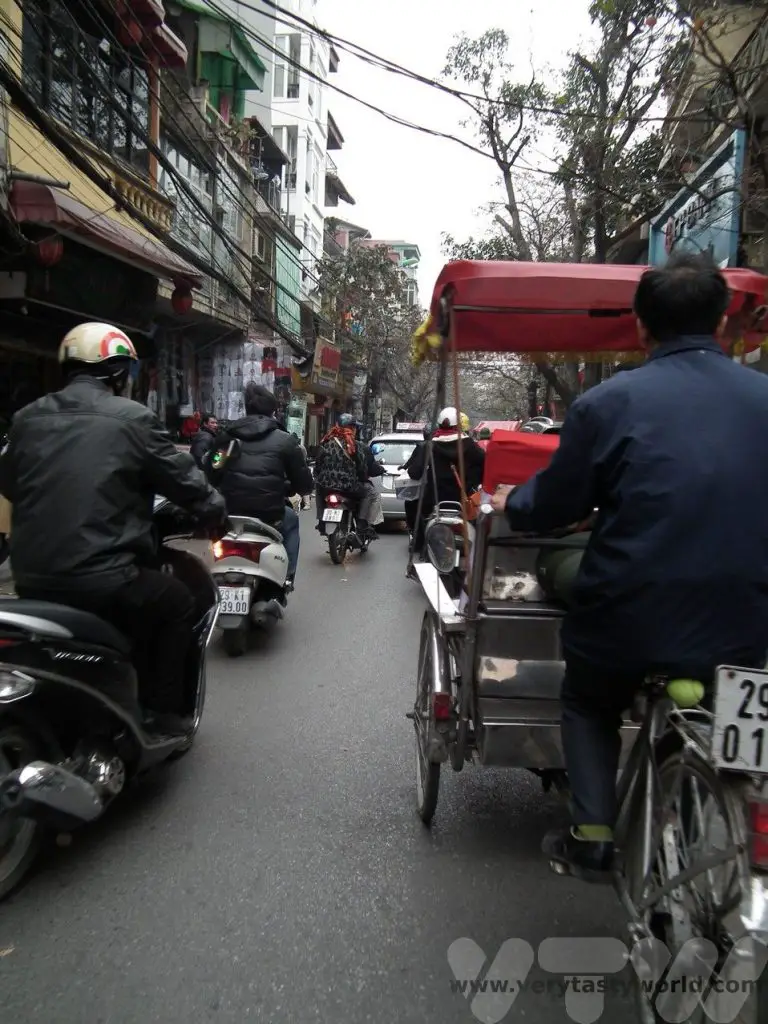
The old quarter is comprised of 36 streets located within a square kilometre just north and west of the lake. The streets have been named for the artisans and craftspeople who traded specific merchandise in that street: bamboo street, silver street, decoration street and silk street to name a few.
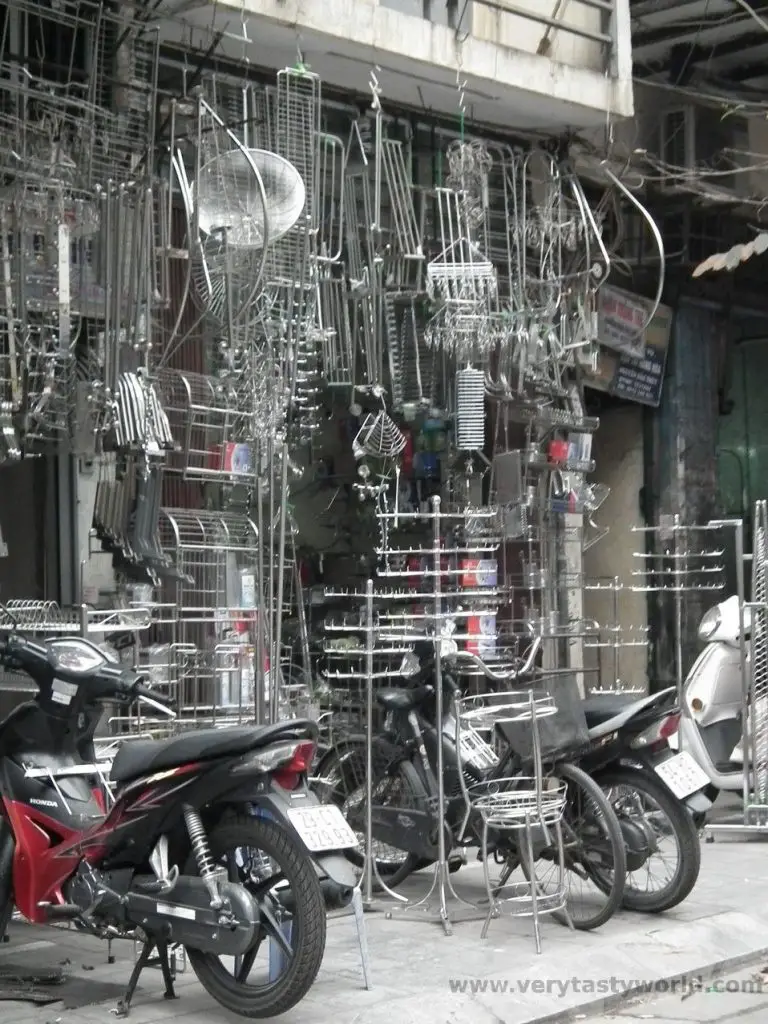
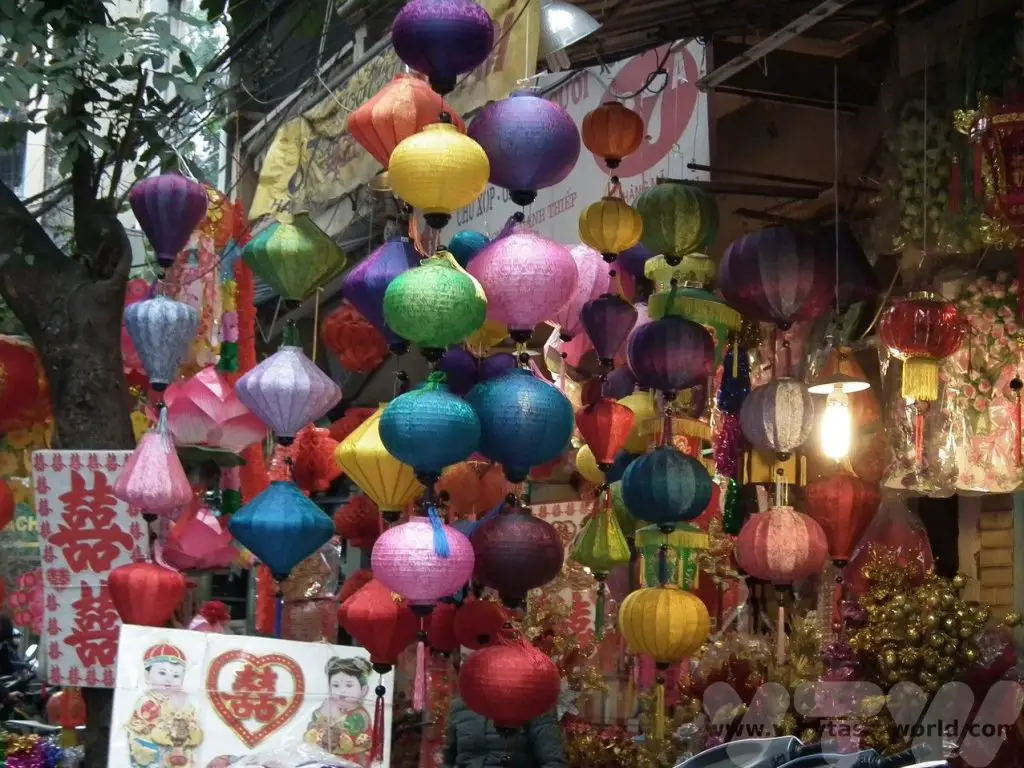
Part of the tour can include a visit an ancient Vietnamese ‘long house’. One of the characteristics of the architecture in Hanoi is that the houses are very thin and tall. The width can be as short as just 2.5m, sometimes up to 5m. However, when you go inside the houses seem to stretch forever. This is because properties used to be taxed according to the amount of façade on the street, so they were constructed this way to minimise costs. This house had a lovely open feel to it thanks to its open balconies, despite the narrow width.
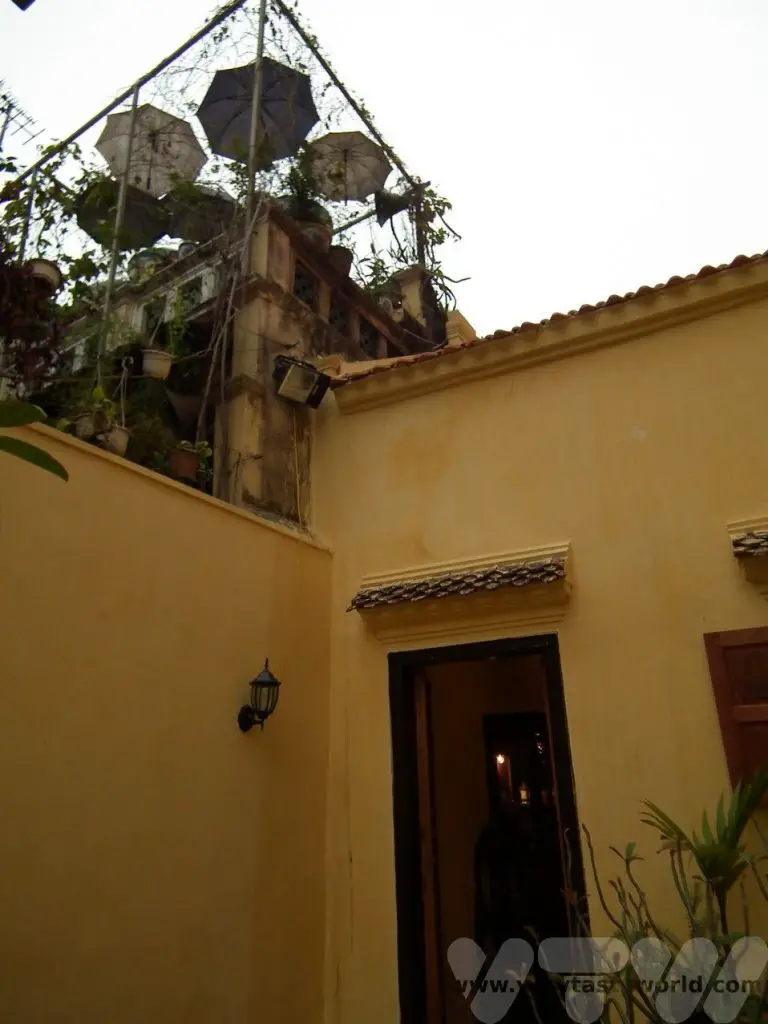
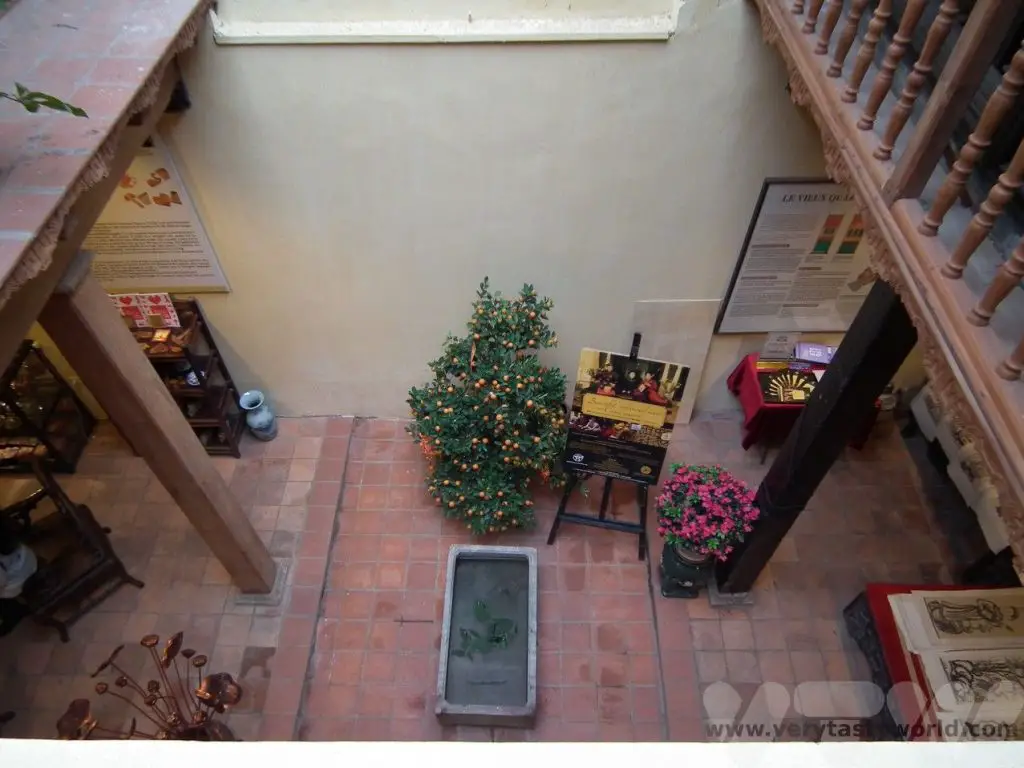
Evening in Hanoi
There are lots of places to eat in Hanoi, ranging from posh dining to street food. The old quarter is a perfect place to hang out in the evening. There is a night market right in the heart of the area. Another popular place is the Bia Hoy Corner which is frequented by both tourists and locals. Be prepared for plastic seats, street snacks, cheap beer and a chance to get chatting with new friends.
The Water Puppet Theatre is a popular attraction, and it’s worth making a booking. It’s located by the north side of Hoan Kiem Lake.
While this is a pretty intense itinerary, it is possible to make the most of a single day in Hanoi.
Vietnamese Food
Just as there are differences between the culture of north and south Vietnam, the cuisine reflects this as well. Food from northern Vietnam is subtle with a balance of flavours, whereas southern dishes are often more spicy. And even though regional variations exist, pho can be found all over Vietnam and is the country’s national dish.
There’s No Business Like Pho Business
Pho is a noodle soup – soft rice noodles served in a warm, very slightly spicy, bone broth with thin slices of meat such as beef (pho bo) and chicken (pho ga). These are the traditional varieties of pho in Hanoi.
Pho is a staple of Vietnamese cuisine. Its pronunciation is like the French word, feu (fire), which is appropriate because it’s thought that the name derives from the term ‘pot au feu’, or French beef stew. It’s so good that you can have it for breakfast, lunch or dinner. Or indeed breakfast, lunch and dinner if you feel so inclined. Yes, we did. In Vietnam it is primarily a breakfast dish – healthy and hearty – it truly sets you up for the day ahead.
The soup is meant to be drunk. Like Japanese ramen, the broth is absolutely key to the flavour. The best broths will have been simmered for hours. A beef stock will use the bones, a chicken stock often uses an entire chicken. Spices such as cinnamon, ginger, cardamom and cloves may add a subtle heat in addition to flavour. The soup should be clear.
The noodles are soft but with a bit of bite. They are cooked separately inside a wire basket that is plunged into boiling water for a few minutes. These are then added to the serving bowl before the broth and meat are added.
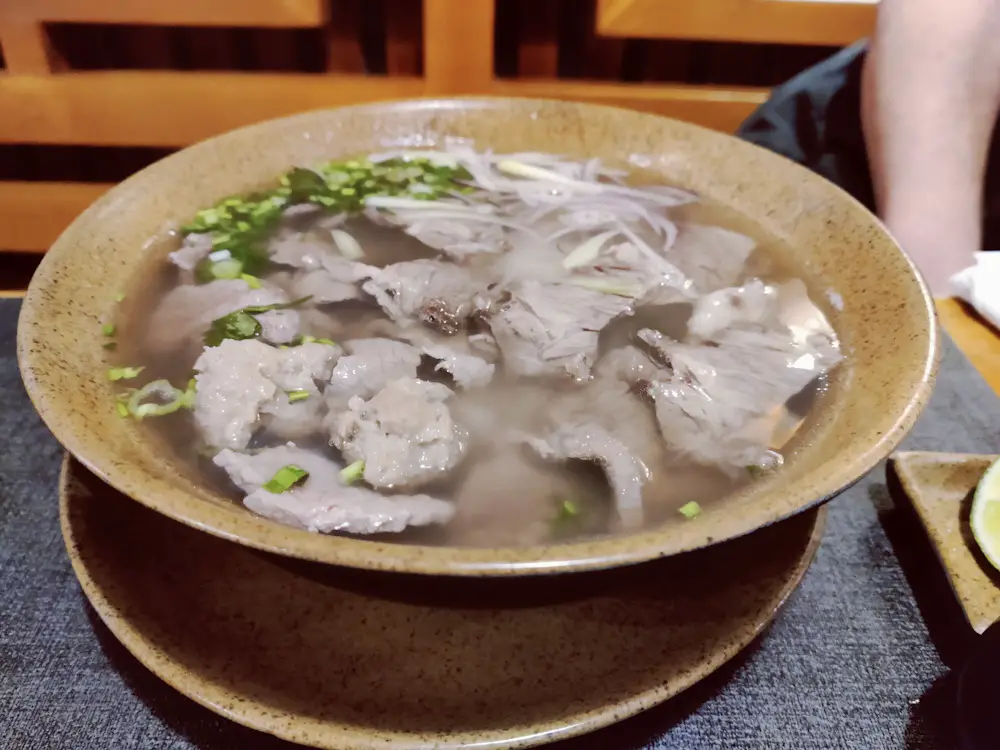
One of the best things about pho is that you can flavour it to your own taste. Alongside each nourishing bowl of pho a plate containing all sorts of potential flavours and textures will be served. Want heat? Add chilli (the smaller the chilli, the hotter the spice). Like sour flavours? Squeeze in some lime juice.
Texture and crunch? Add beansprouts or green onion. More flavour? You’ll be offered a variety of aromatic herbs, commonly coriander, holy basil and mint which can be added in whichever ratio you desire.
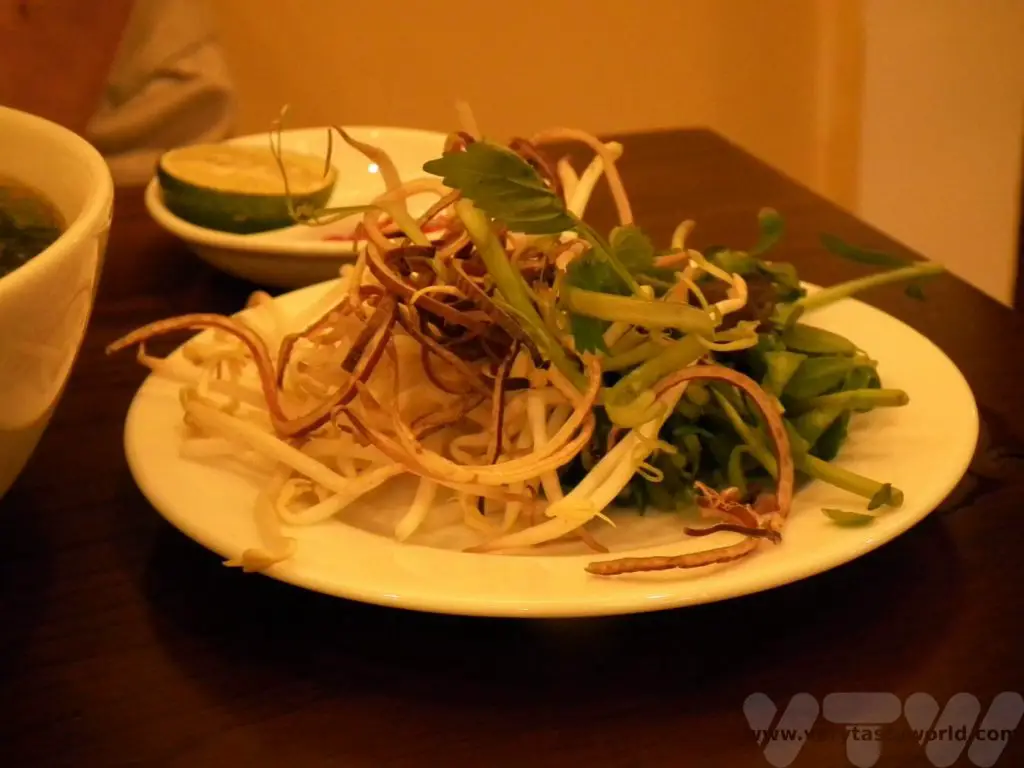
But the key is making sure that you taste the broth before you start wading in with additional garnishes. And, while Vietnamese pho restaurants in other countries often offer sauces such as hoisin or chilli to add to the soup, it is unlikely that you would ever see this in Vietnam. It would be a shame to add sauce which detracts from the delicate flavour of the broth.
You eat pho using chopsticks to pick up the meat and noodles. There is usually a spoon available to sip the broth. Actually, it’s okay to bring the bowl to your lips and drink directly from it. Slurping is fine. For British people who were brought up to believe that it’s rude to slurp your soup, it’s actually quite difficult to do this without spilling the broth or accidentally spluttering! A very positive side effect of consuming so much pho was that we were kept well hydrated in the warm, humid climate.
Bun Cha Ha Noi
Another typical dish from the northern region is Bun (noodles) Cha (grilled pork). It is a delicious combination of grilled pork slices and/or meatballs accompanied by rice noodles and herbs, in a spicy and flavoursome sauce. It is thought to have originated in Hanoi.
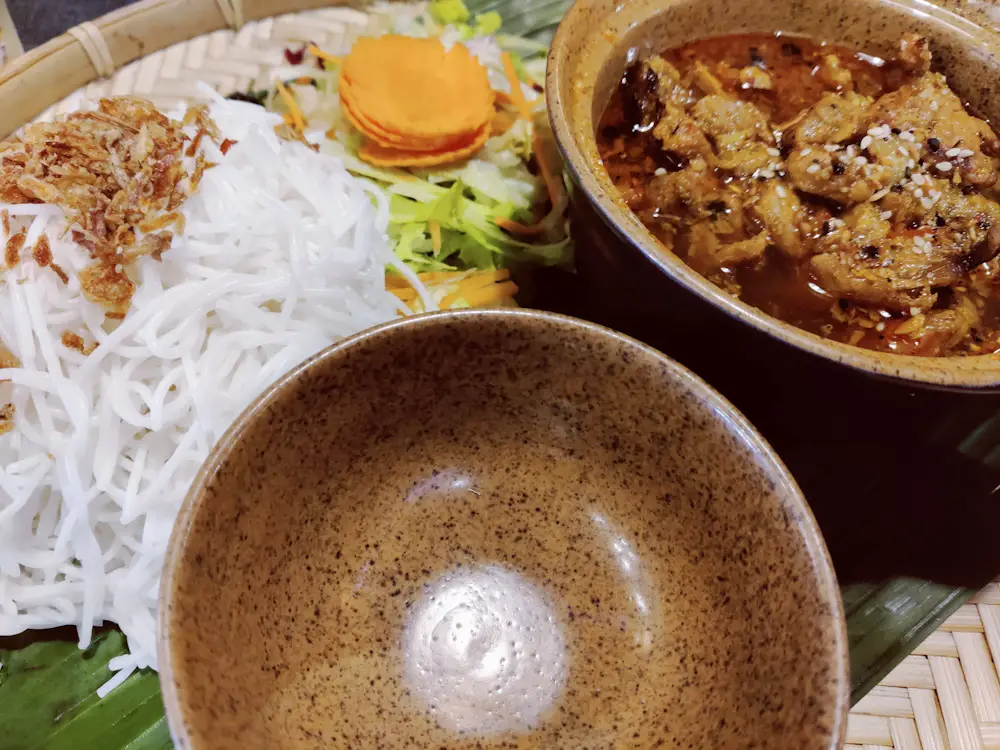
Bo La Lot
Another delicious dish is Bo La Lot – grilled beef balls wrapped in betel leaves. Served with a sweet and fragrant dipping sauce, these are juicy, full of flavour and make for a brilliant starter or snack.
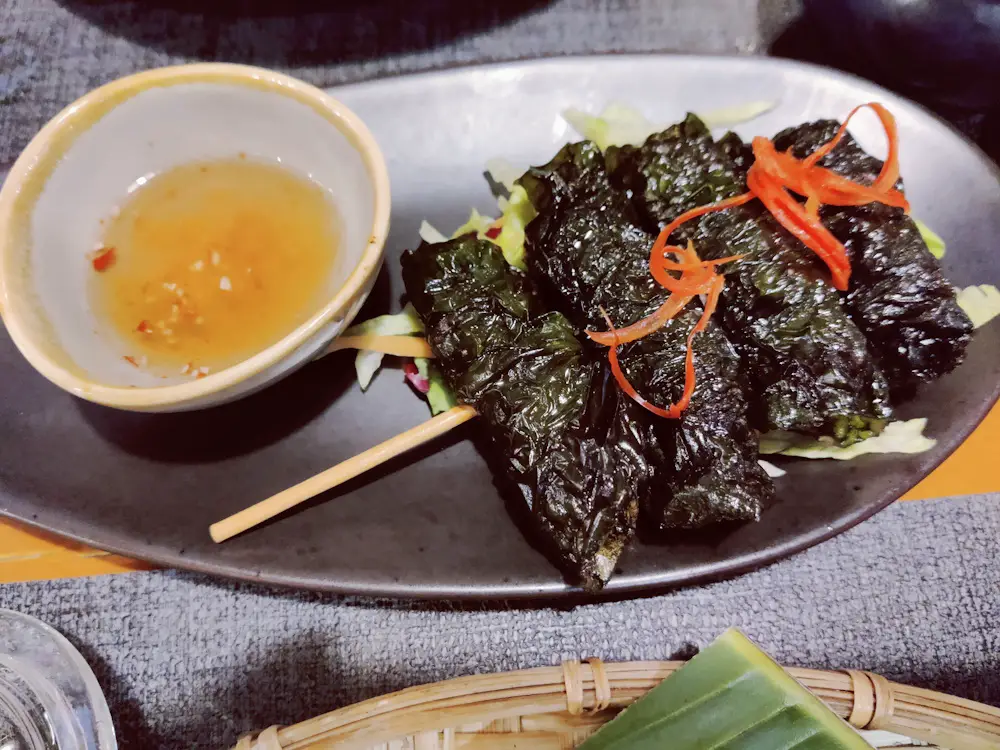
One of the best garnishes is Vietnamese pickled garlic, a zingy condiment. We have a recipe for this – it’s great for accompanying Vietnamese food but really versatile for other dishes as well.
Related Posts You May Enjoy

Mekong Meanderings
The mighty Mekong river is the 12th longest river in the world. We have been lucky enough to have encountered it many times over the years as it has meandered through our journeys across South East Asia over the course of two trips in Lao PDR, Cambodia and Vietnam. And we learned some interesting facts about the Mekong river along with way.
The Mekong rises in Tibet and flows for nearly 5000km through China, Myanmar, Lao, Thailand, Cambodia and Vietnam, where it runs into the South China sea. It’s a river that clearly has an enormous impact on the people who live on and around it. From a geographical perspective it has some amazing features. And, if you’re lucky, you can get to see some really special wildlife, notably the Irrawaddy dolphins that live in the river. Many people’s livelihoods depend on it. It also provides a rich source of food for the local people that live along it whether that is bounty from the river itself or the irrigation it provides for the farmers who work the land alongside it.
Lao – Luang Prabang
Our northernmost encounter with the river was when we started our journey through Lao PDR. Luang Prabang is a lovely laid-back town at the confluence of the Mekong and the Nam Khan rivers. Each year, when the rivers flood, the bridge across the Nam Khan is washed away and it is reconstructed when the waters subside.
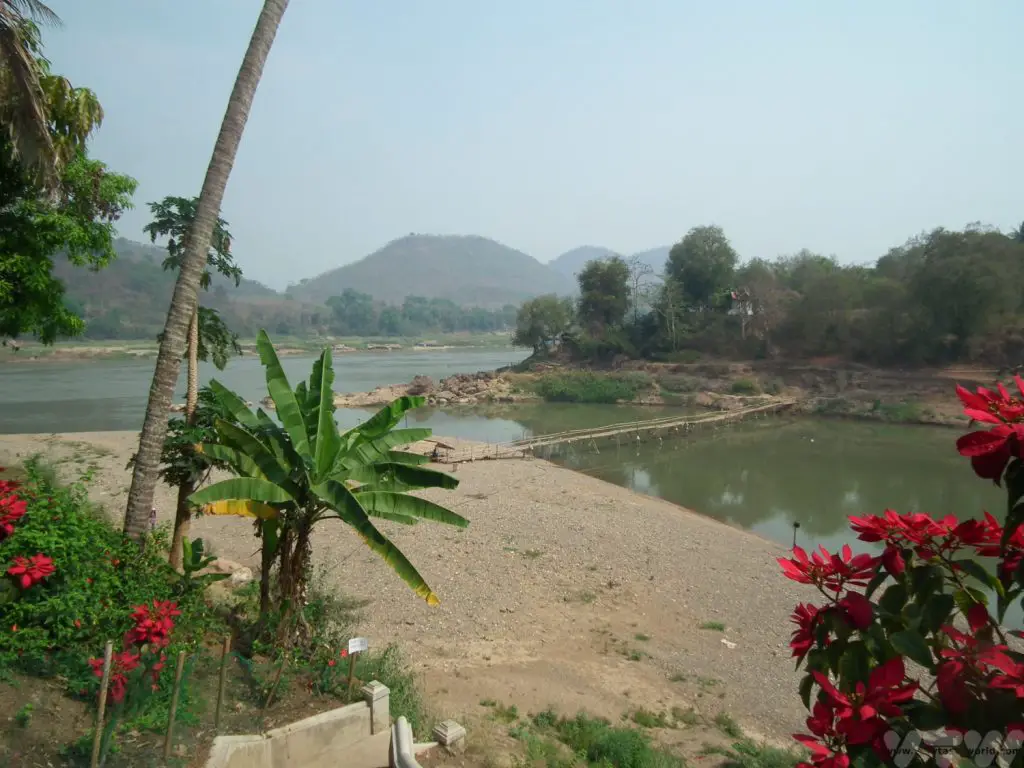
Luang Prabang is the former capital of Lao and has plenty of places to see. There are lots of temples to visit as well as the royal palace which was built in 1904. When the monarchy was overthrown by the communists in 1975, the building converted into a museum and Lao’s capital was transferred to Vientiane.
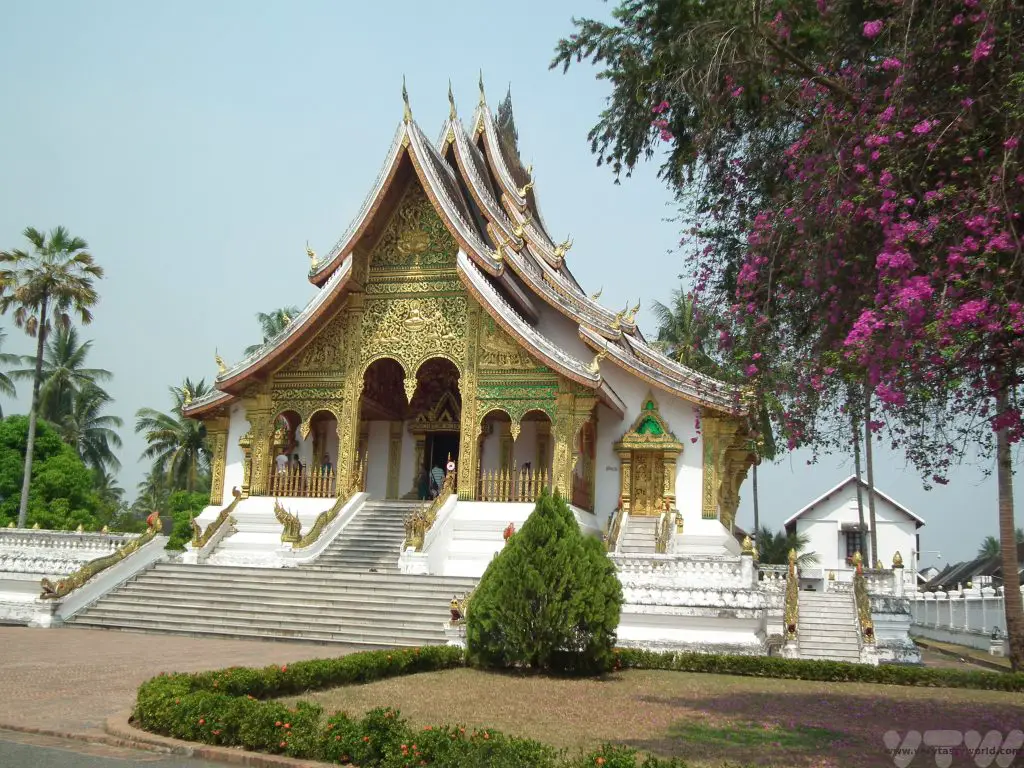
It’s possible to take an evening cruise on a longboat – motor upriver and then float downstream watching the sunset with a cool beer is a lovely and relaxing way to spend an evening.
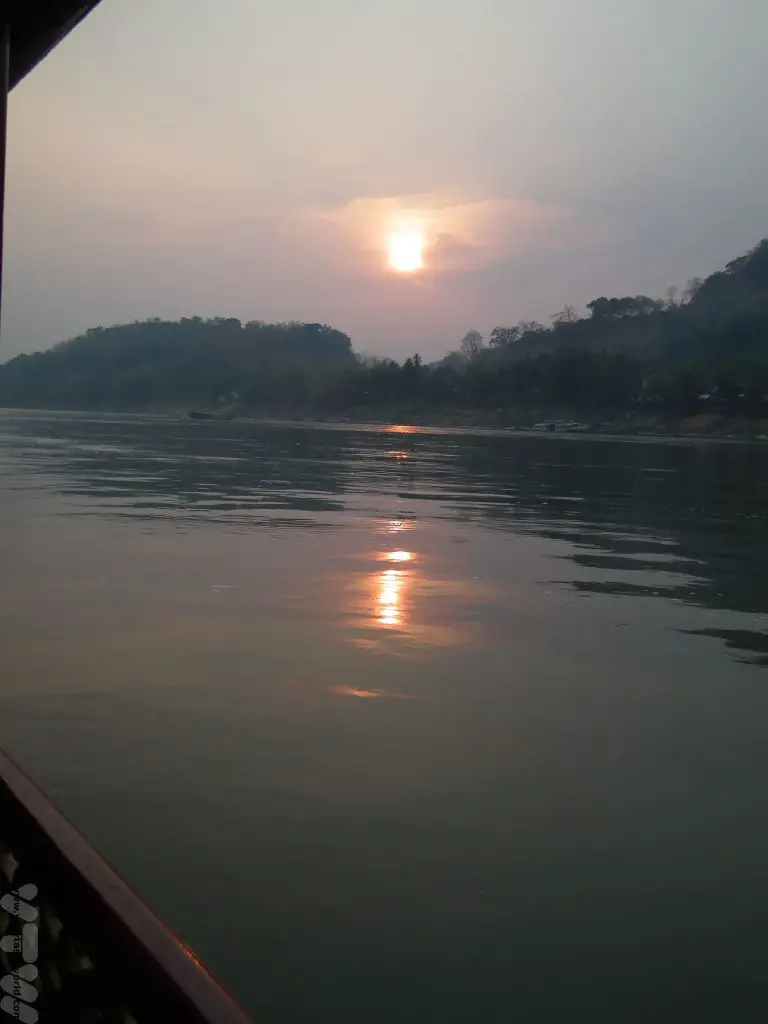
Luang Prabang was also where we first encountered Lao food. A lunch of typical Lao delicacies included local river weed which we had seen for sale in Phosi market.
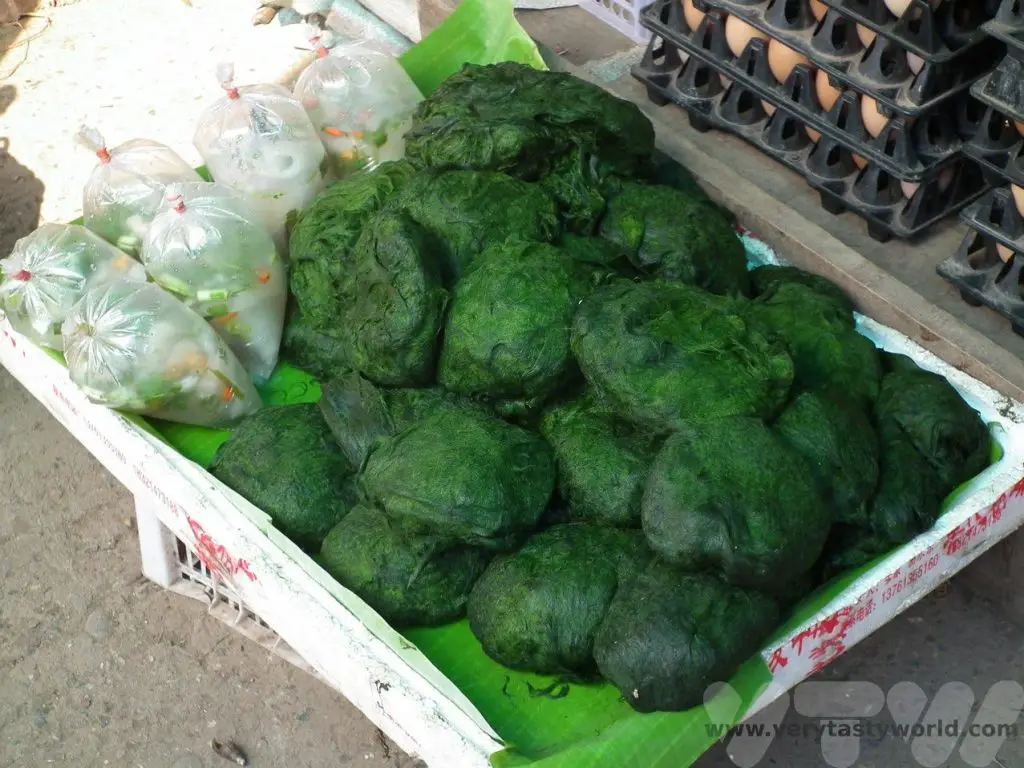
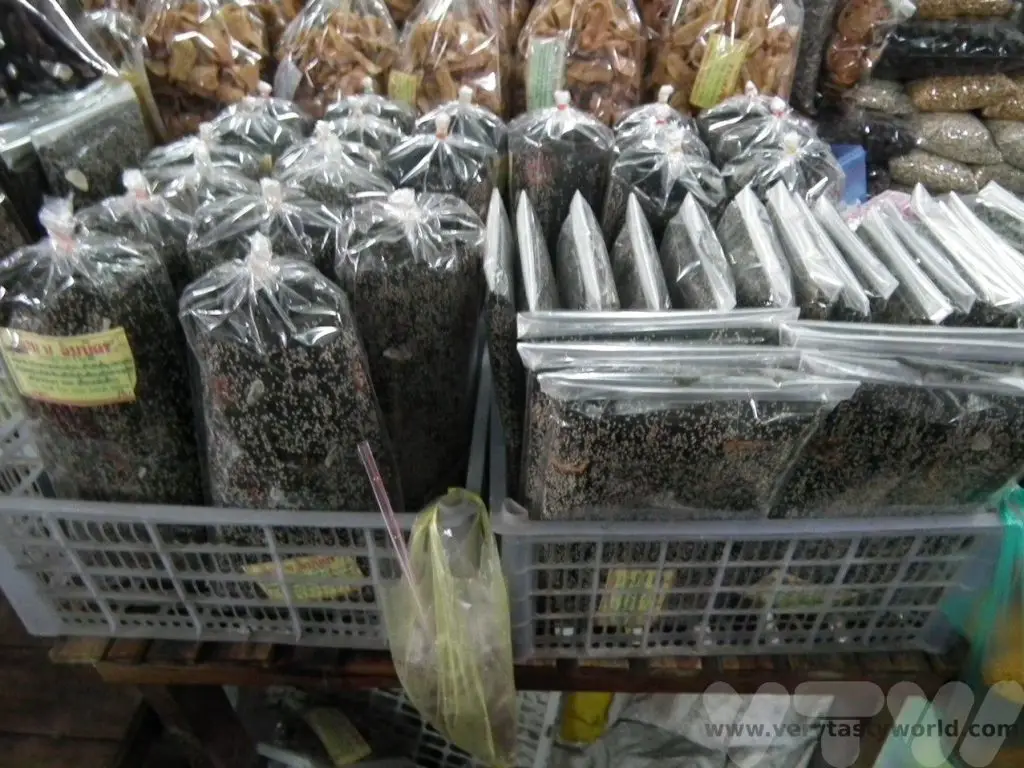
It is flavoured with seasonings and then dried in the sun. It makes for a delicious snack which is incredibly moreish, especially with beers. We enjoyed a lunch of typical Laotian specialties at Tamarind restaurant which included the dried river weed. While the ‘PDR’ of the country’s name means ‘People’s Democratic Republic’ many locals say it stands for ‘Please Don’t Rush’, an invitation to enjoy eating at a leisurely pace.
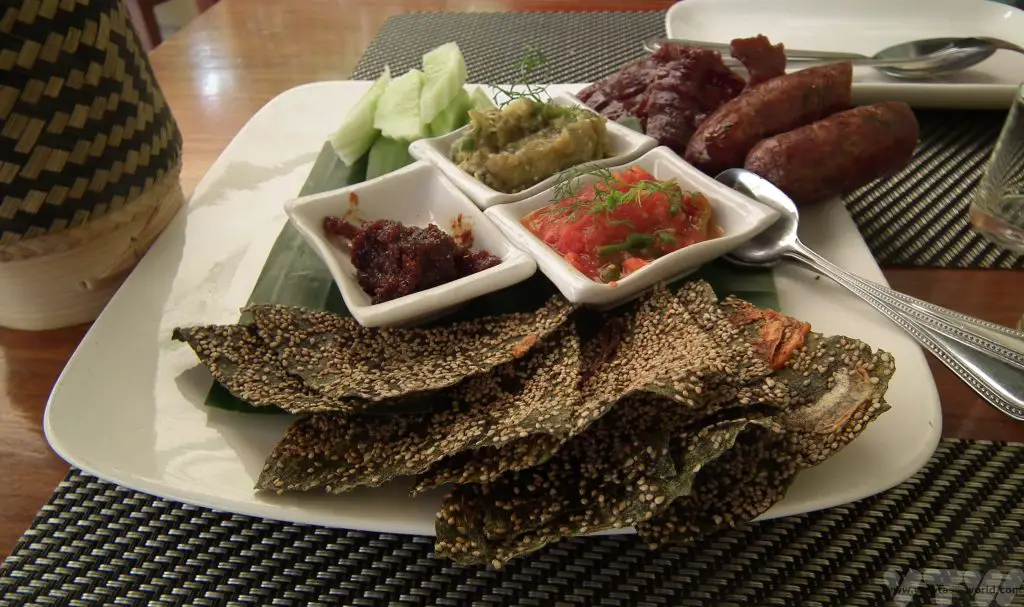
Lao – Vientiane
The Mekong traverses the border between Lao and Thailand before moving inland through Lao. Vientiane is the capital of Lao PDR and its largest city. Although it’s a city that is growing fast, it’s less hectic than the other capital cities in South East Asia.
The Mekong is broad and wide and Vientiane has a long promenade along its banks. You can see Thailand right on the other side of the river.
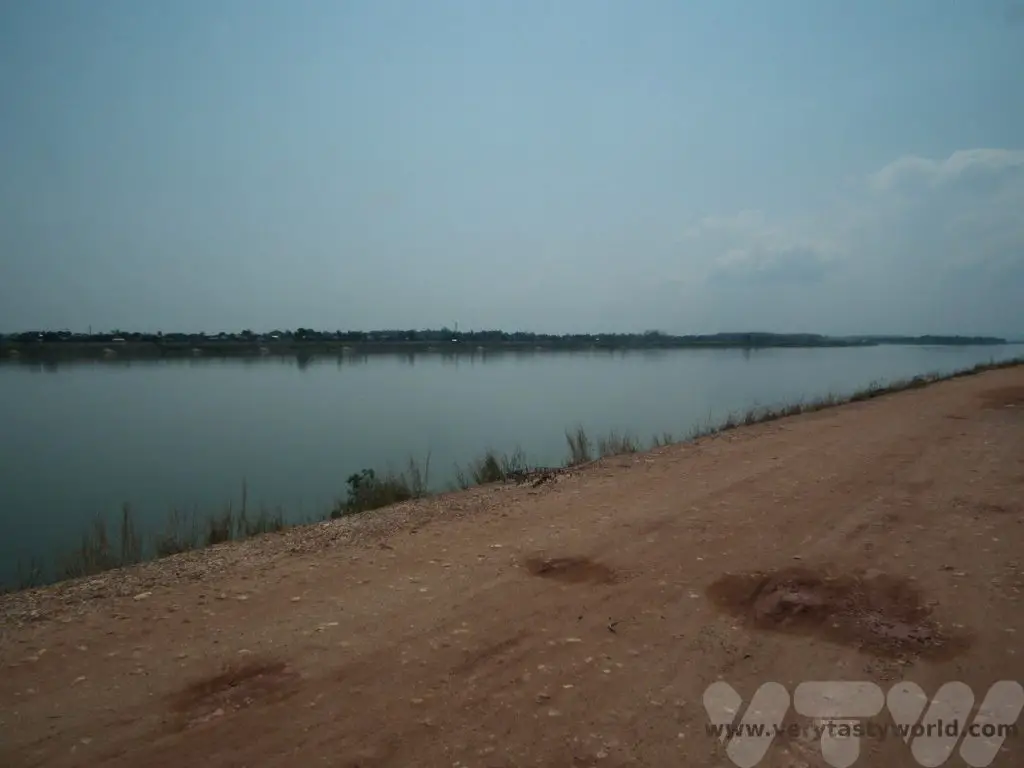
In the evenings a bustling night market opens up on the river’s promenade.
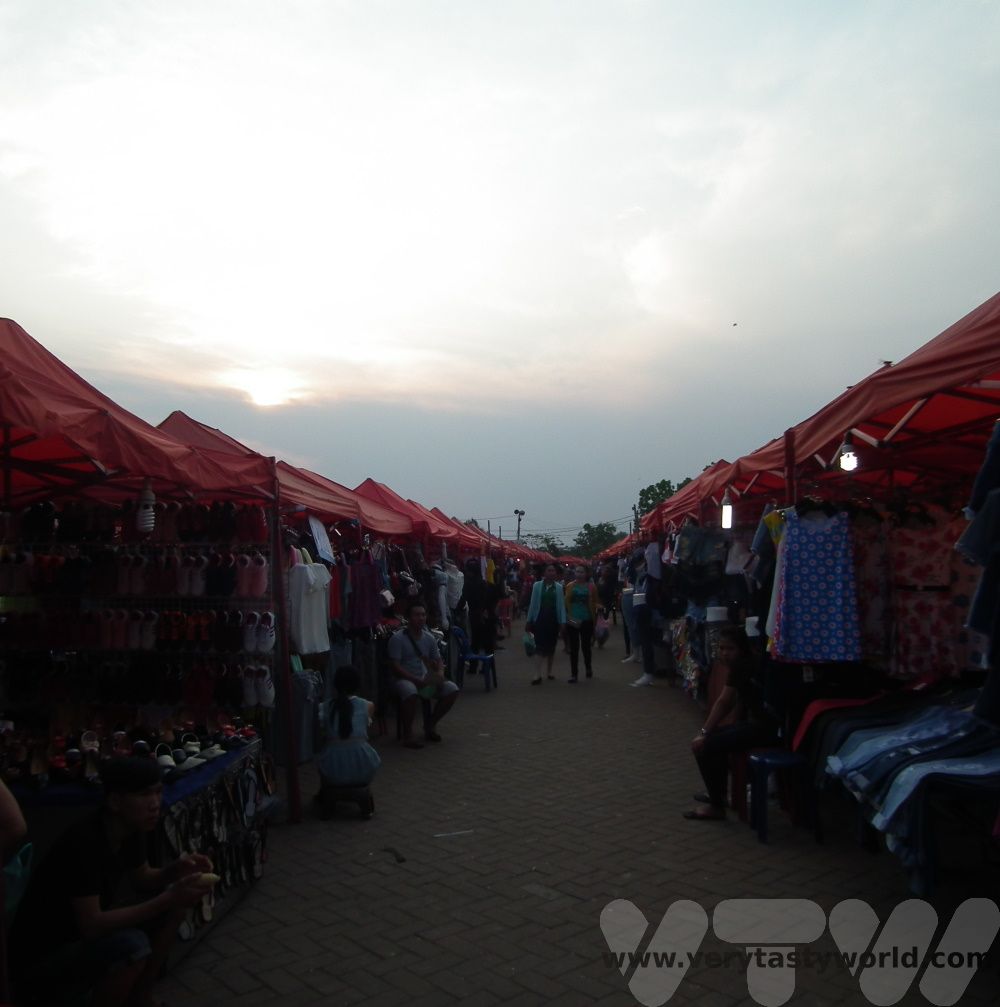
We left Vientiane to travel further south. Our next encounter with the Mekong offered a complete contrast to the serenity of its flow through Lao’s capital.
Lao – Siphandone
Siphandone is a delightful stopping point in the Champasak Province in South Lao, close to the Cambodian border. The river splits into multiple channels, leading to the formation of many islands – the name Siphandone means ‘4000 islands’.
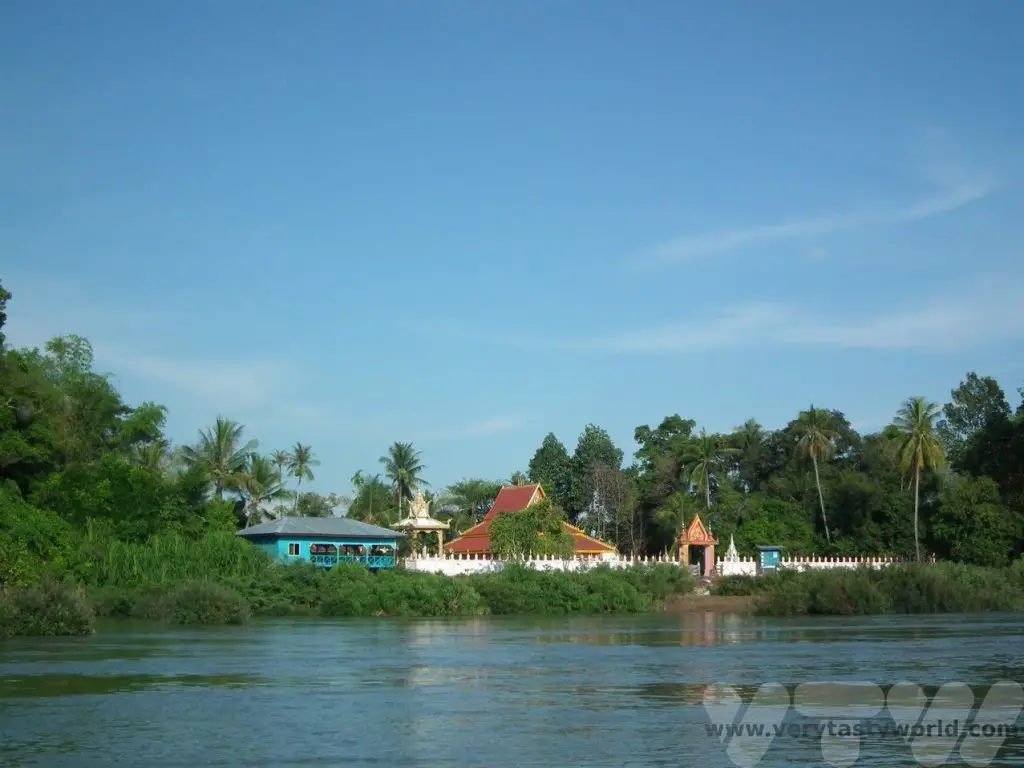
The area is very beautiful but parts of it are also ephemeral as some of the smaller islands disappear under the water when the river is in flood during the rainy season. We spent a couple of lovely, relaxing days exploring Don Khong, the largest island. There are some nice walks and some interesting things to see, including the remnants of a railway, an initiative by the French colonial administration who wanted to make the Mekong navigable to China – Siphandone and the waterfalls just to the south proving to be the geographical blockers.
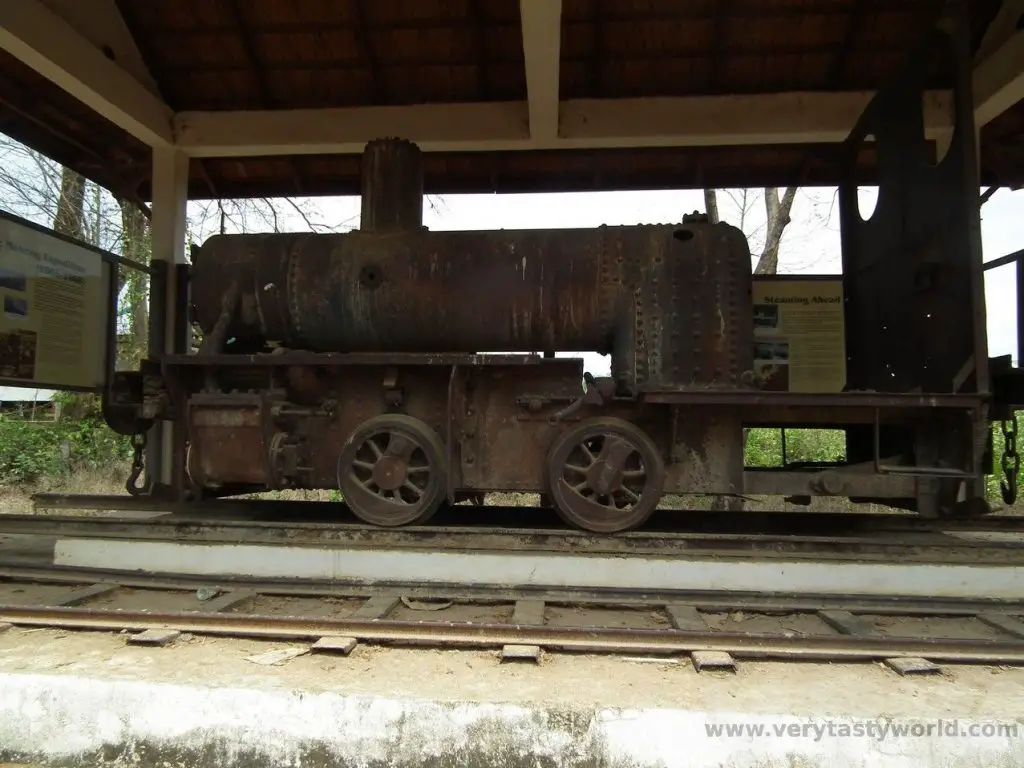
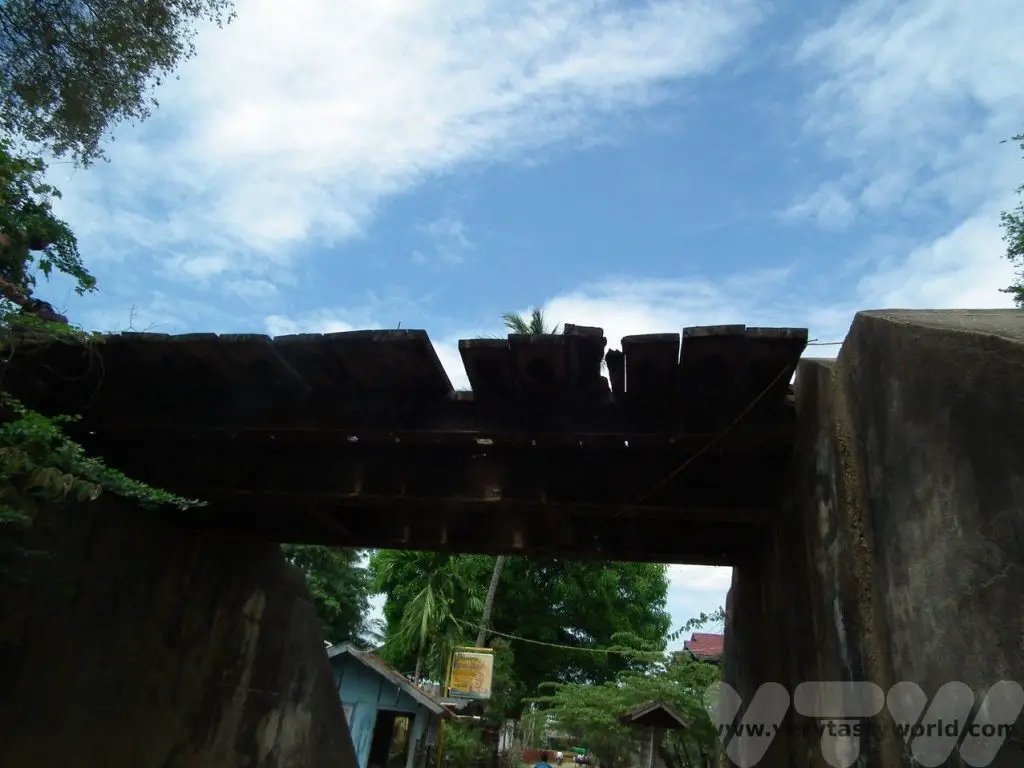
It may be possible to find local people who can take you out for a boat trip on the river in search of the rare and highly endangered Irrawaddy dolphins. These lovely creatures inhabit just a very small length of the river between southern Lao and northern Cambodia. According to the World Wide Fund for nature there are less than 100 dolphins left in this area.
Irrawaddy are an unusual looking dolphin – they have a more pronounced forehead than their seafaring counterparts and a smaller, broader beak. If they are around and you want to see them just head for a beach to find a boat. You can pay for the trip in cash.
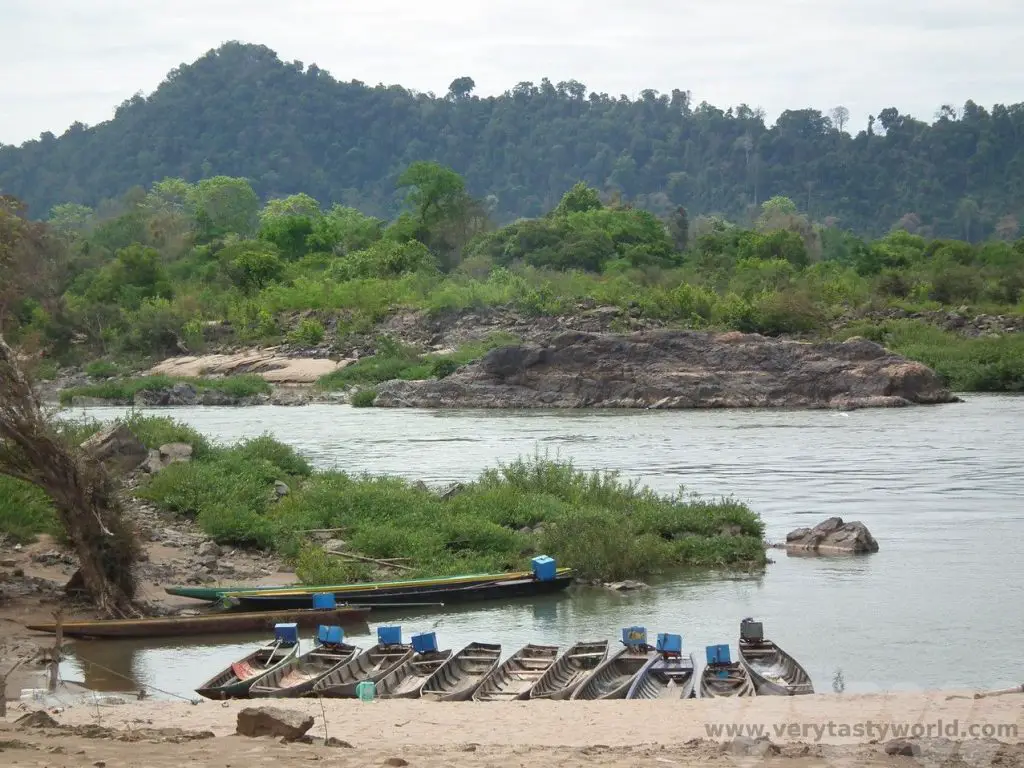
The dolphins are quite tricky to photograph as you only really see them as they pop above the surface for air, but it is magical catching sight of them.
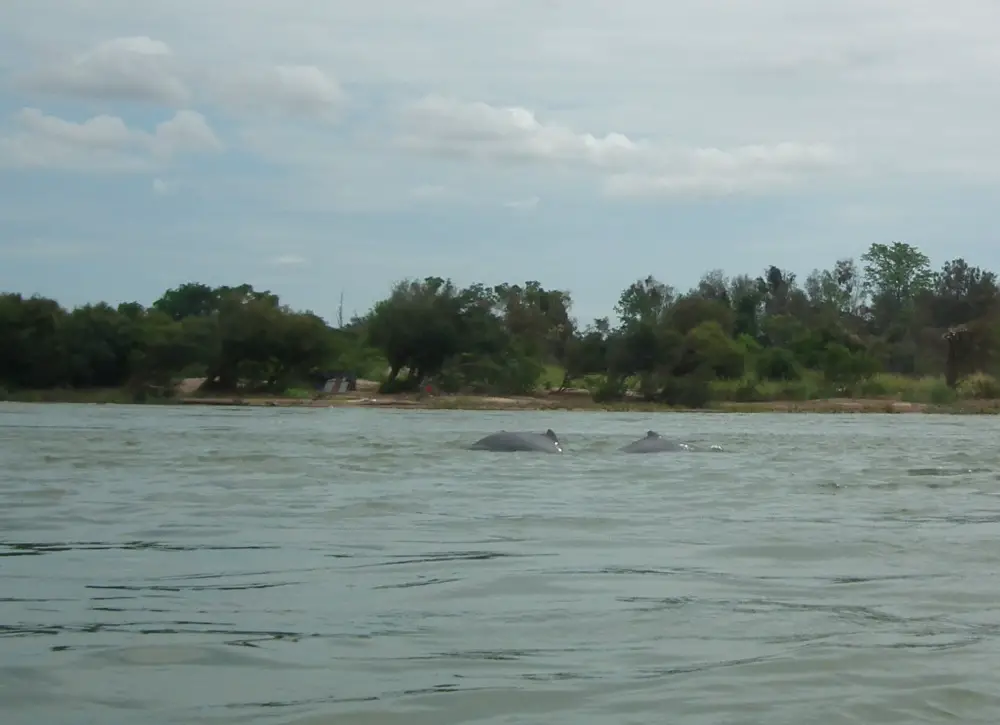
But mainly the area is a place to relax and explore at a sedate pace. It is very peaceful, especially in the evenings.
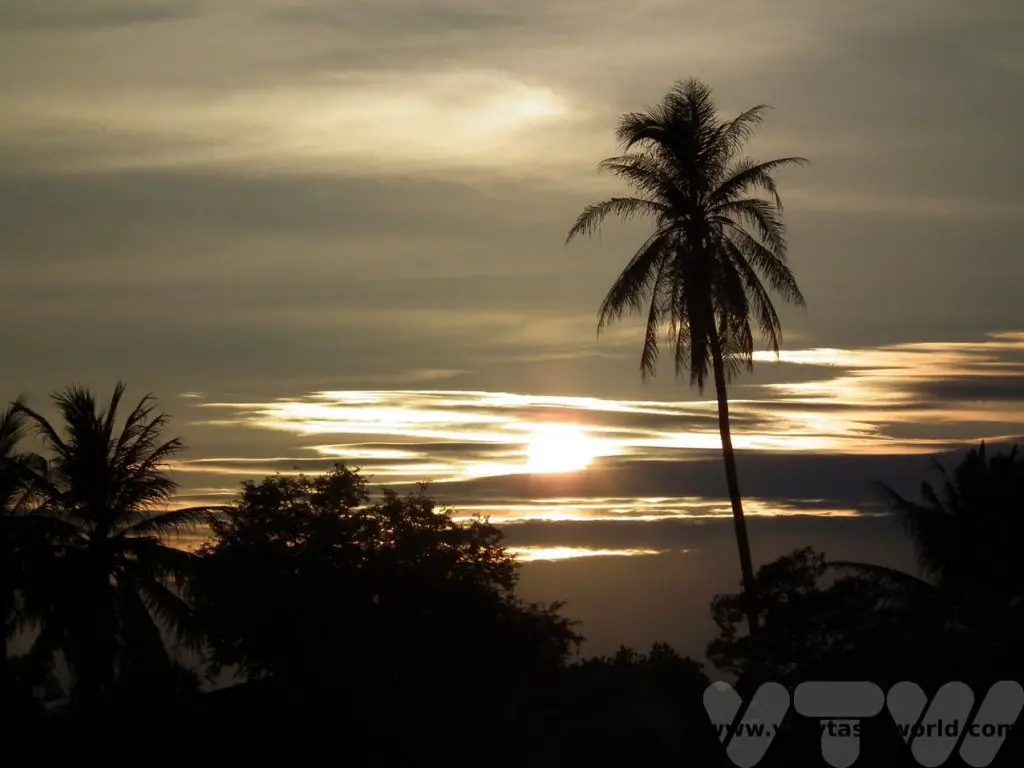
Lao – Khone Phapheng Waterfalls
Located just a few kilometres south of Siphandone are the Khone Phapheng falls. Due to the many, many channels that have formed at this point in the river these are the widest waterfalls in the world.
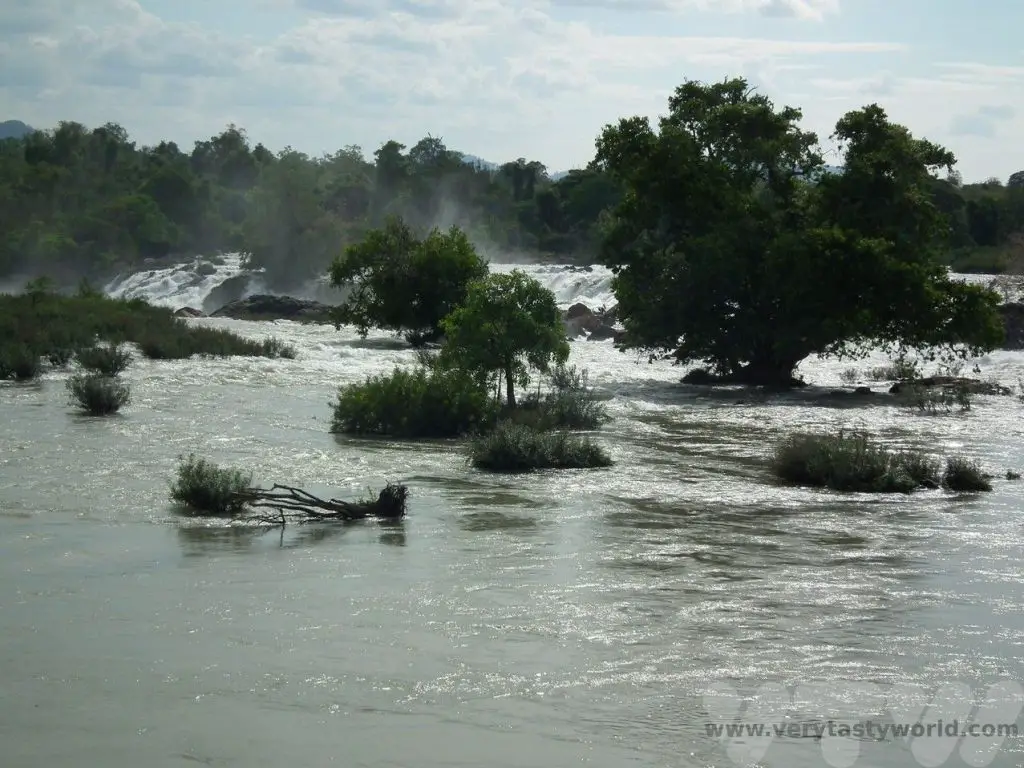
They are also the reason that the Mekong isn’t properly navigable from the South China Sea through to China. The rapids extend for a length of around 10km.
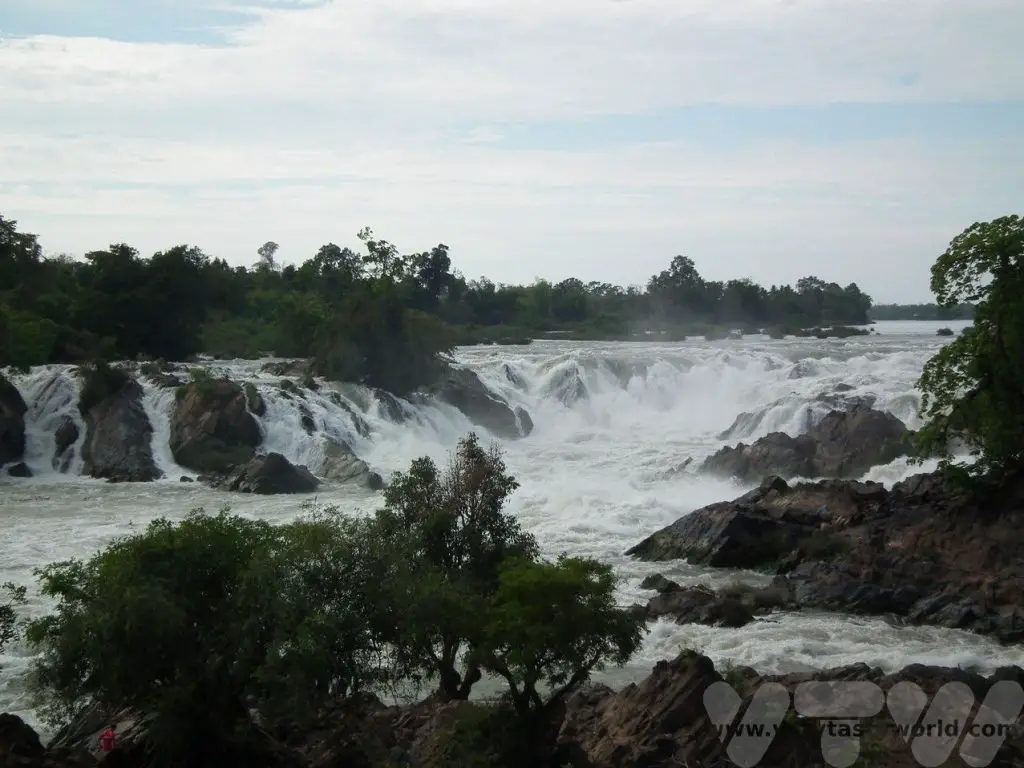
Several attempts were made to construct steamships that could scale the falls – with a lot of manual pulling – in the late 19th century. All of them failed. There were ideas to construct a canal with a series of locks around the falls but the expense was prohibitive so the railway was built – the idea being to deconstruct the boats, carry them on the trains via Siphandone and reassemble further upstream. Which sounds like a right faff, not an elegant engineering solution.
It is possible to walk along the banks of the falls and view the sheer might of the river at this section. There are restaurants and cafes in the area to enjoy a snack and a coffee while watching the falls.
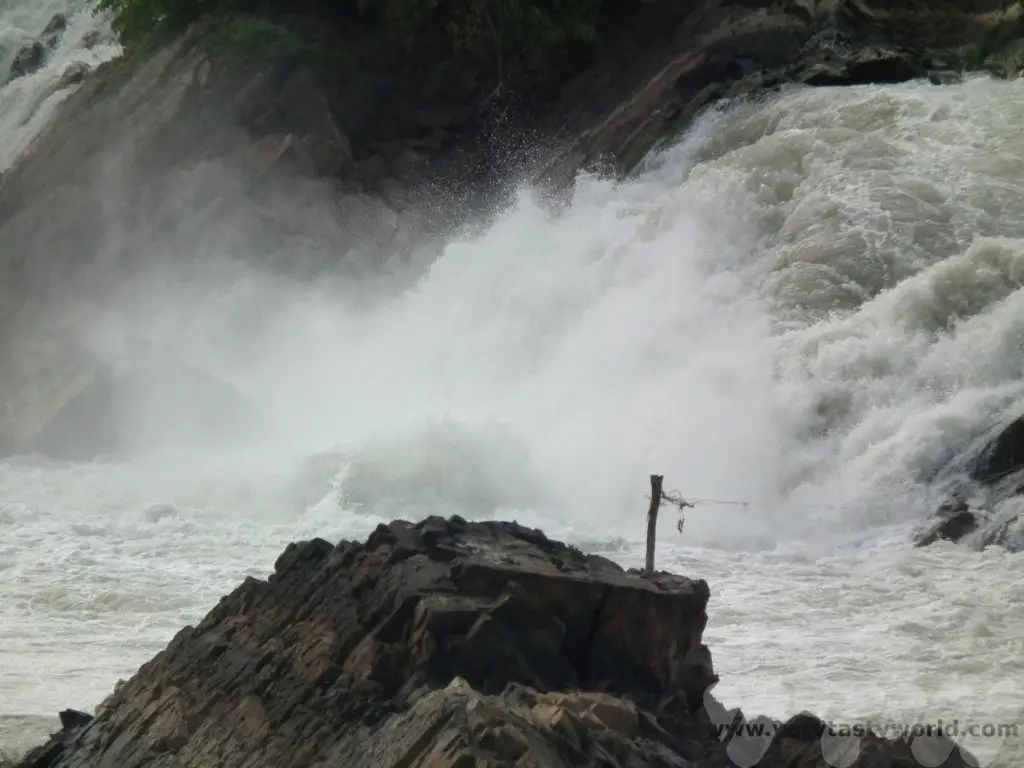
There is a tree – the Manikhoth – which is highly revered by local people. It stood for centuries in the middle of the river, apparently defying the flow and gravity – with roots facing the sky.
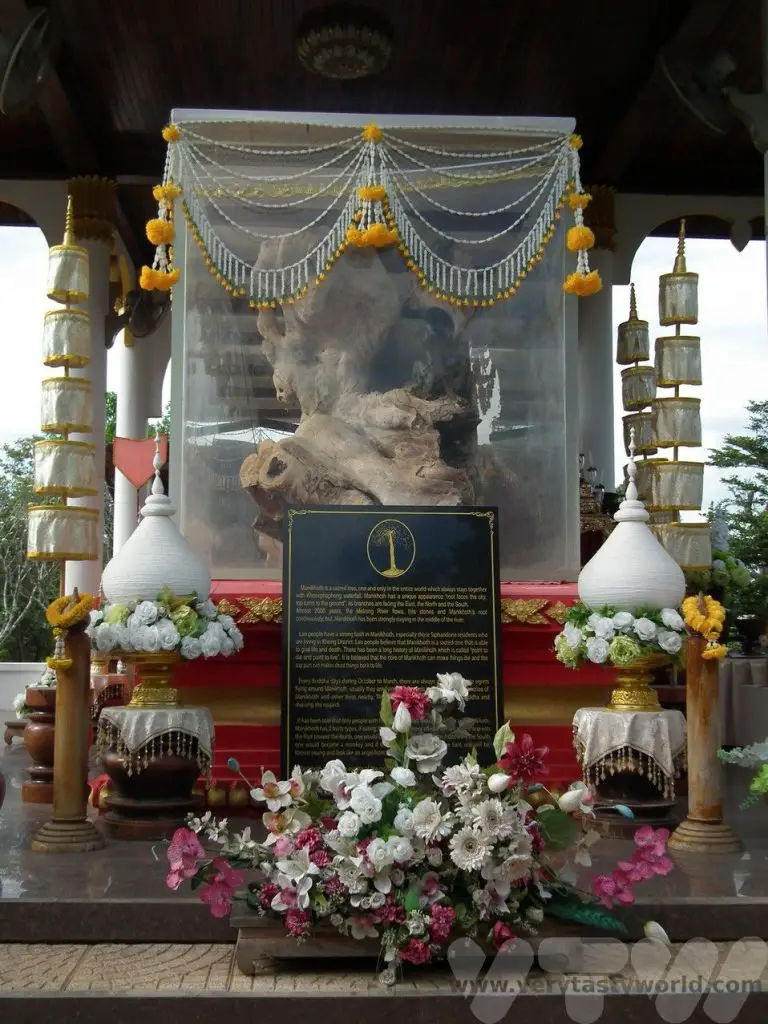
Sadly, it was washed away in 2012 but was later recovered and it now exhibited by the riverbank.
Crossing into Cambodia
Siphandone is very close to the Lao/Cambodian border so we got a lift to the border and walked across into Cambodia. It looks like a thin line on a map but leaving one country and entering another by crossing ‘no man’s land’ is actually a walk of several hundred metres.
A word of warning: We got stung for extra cash by the border guards who issued our visas at the crossing. At the time a Cambodian visa cost $30US but, after the border guard had taken our passports, he demanded $35. We queried this but he was insistent. We didn’t have a signal on our phones to be able to confirm the cost. What were we going to do? He had our passports and we wanted to get into Cambodia. So we paid. Humph.
Chatting with ordinary Cambodian people later in our trip we learned that civil servants were not respected at all… and also understood the reason why they drive around in flashy cars. The guy pocketed $10 in 5 minutes. In Cambodia that’s a lot of money. In future we will check the costs beforehand and produce evidence from the official website. We will be polite but insistent.
Cambodia – Longboat to Stung Treng
Still, all those irritations melted away when we headed to the river again, picked up a long boat just a couple of kilometres from the border and embarked on a delightful journey along the Mekong.
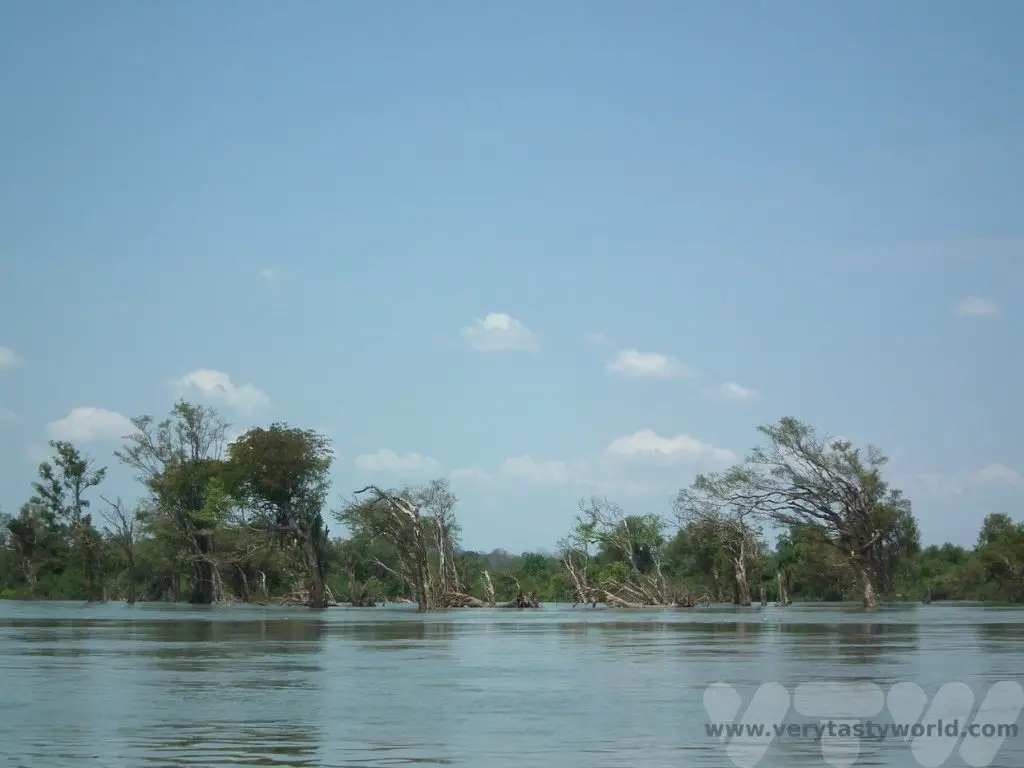
It was a glorious three hours travelling along the most beautiful stretch of pristine river.
You can really understand how the flow of the river Mekong has shaped its environment and the flora that grows alongside it.
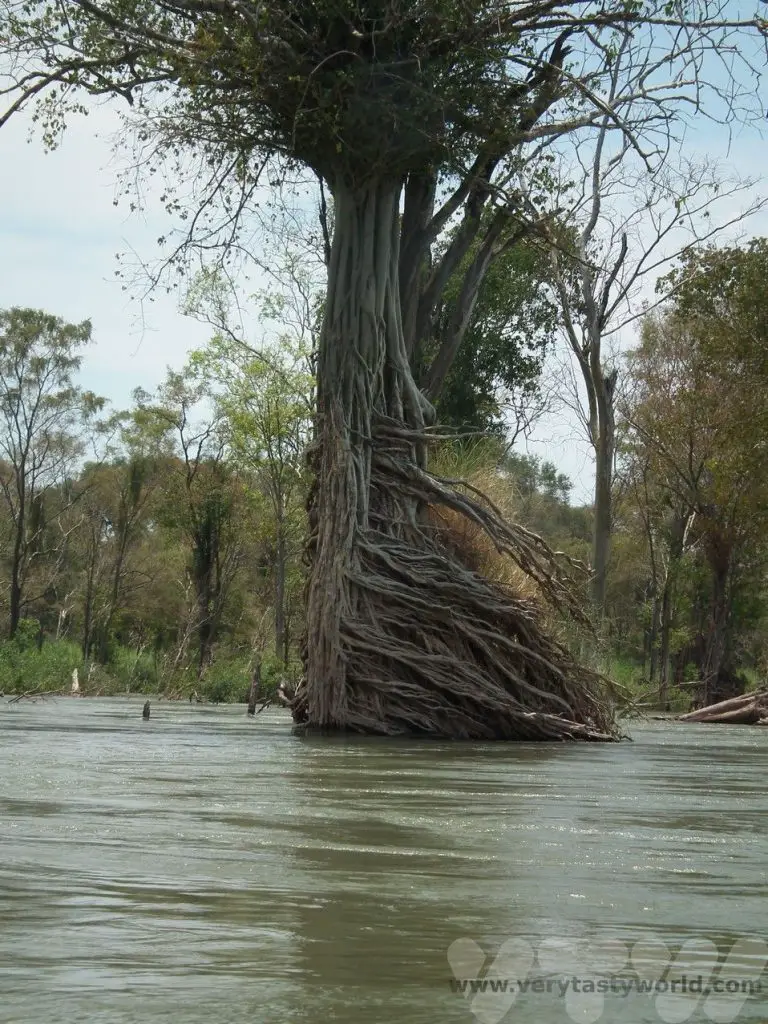
The roots of the trees cannot help but comply with the relentless force of the water’s flow.
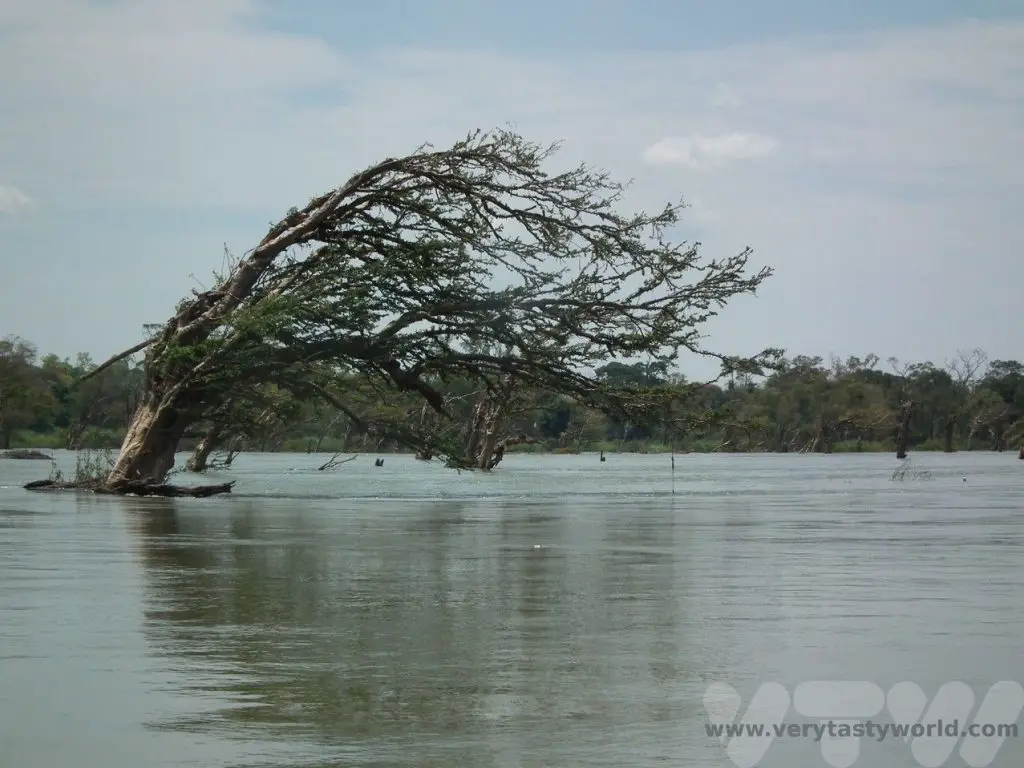
We arrived in the northern Cambodian town of Steung Treng. There’s not a huge amount to see when you get there but the journey was simply sublime. Just out of town we visited a local women’s development centre, an initiative where women and offered the chance to learn how to weave silk. Accommodation is available and there is a primary school where the children can receive an education while their mums are learning new skills. Their beautiful products are available to buy and are both good quality and incredible value. It’s a great opportunity to contribute to the local community.
Cambodia – Kratie
We then made our way by road to Kratie, a much larger town with a very laid-back vibe. It lies right on the Mekong and the river is calm and broad. It has a pod of Irrawaddy dolphins that live nearby and it’s easy to pick up a tuk-tuk to reach their location a few kilometres outside of town and upriver. There are plenty of boats that offer trips to see them.
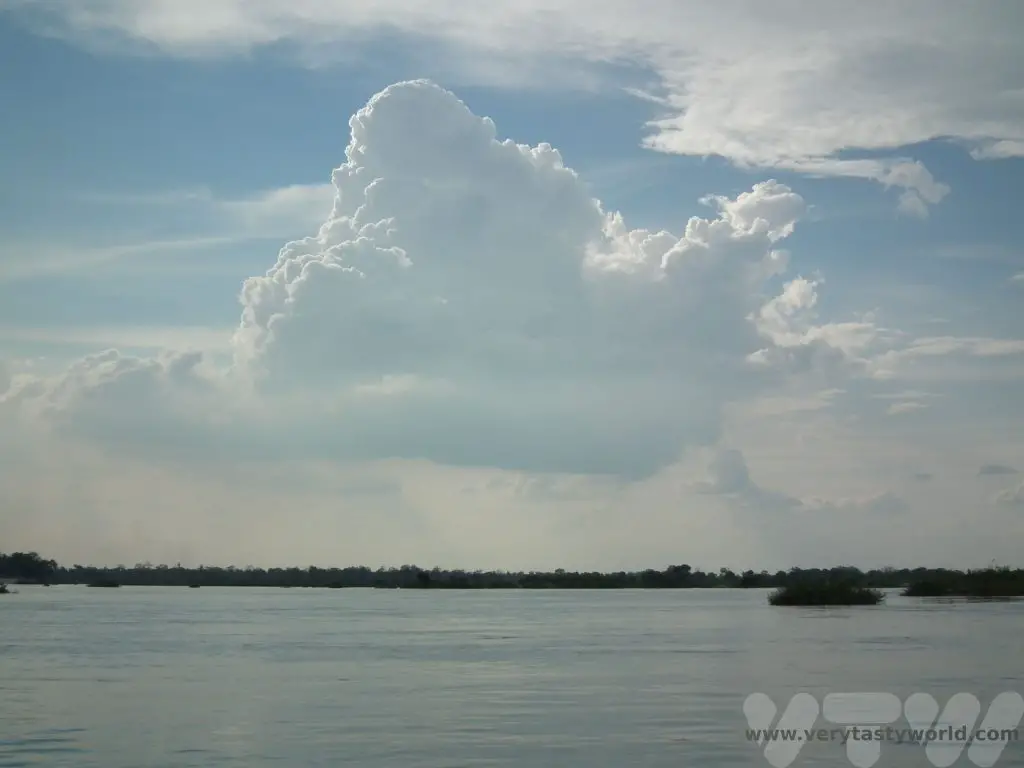
The water is somewhat murky and the dolphins here were also a touch elusive so getting a photo of them as they come up for air was quite tricky. So it was fun to sit back in the boat and enjoy watching them.
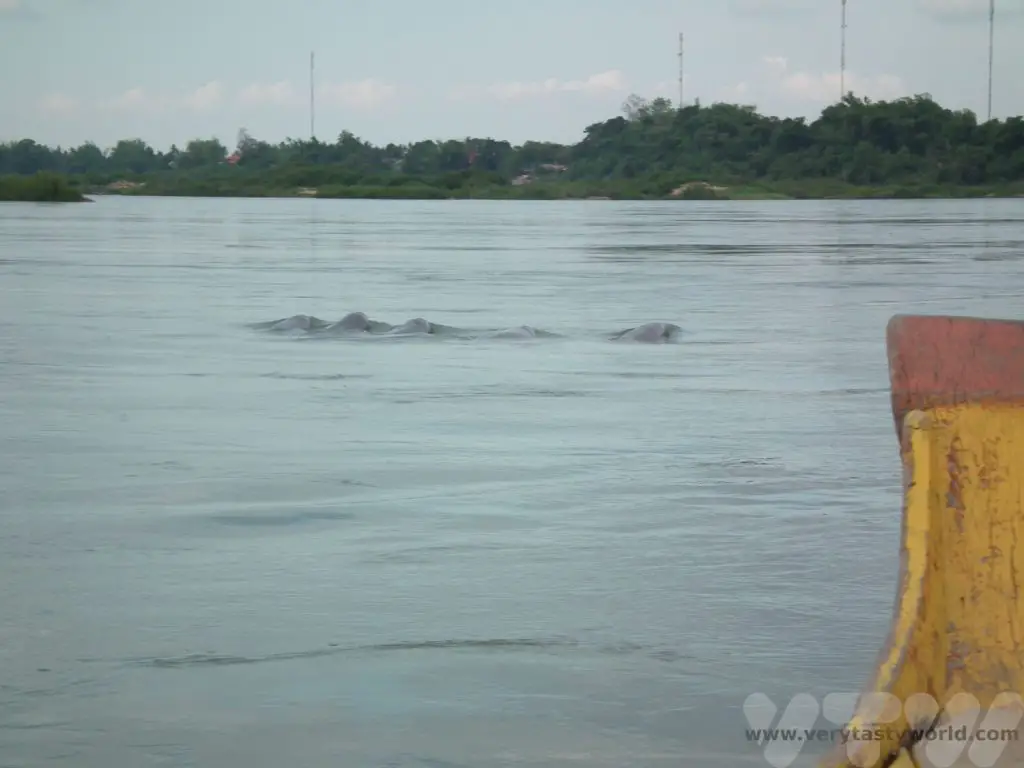
Back in town, Koh Trong island is one of the larger islands on the Mekong. You can pick up a ferry across to the island from the centre of Kratie and it takes a few minutes to make the crossing.
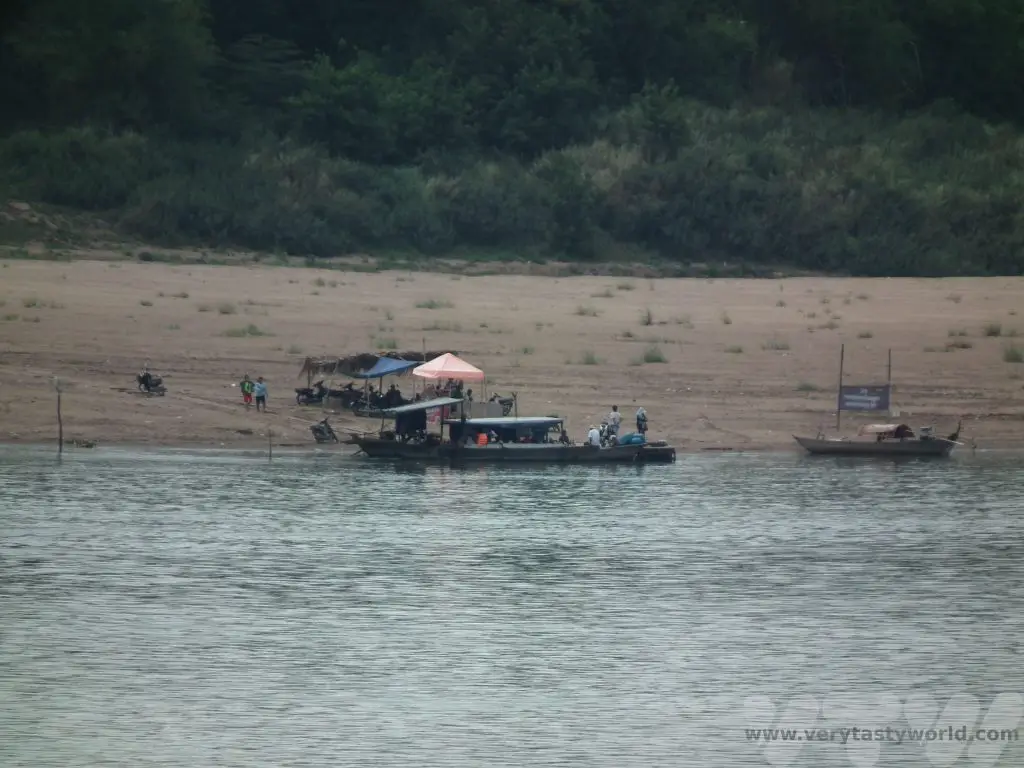
It’s possible to hire a scooter or a bicycle for just a few dollars and circumnavigate the island. It’s a really pleasant way to spend a morning or afternoon. Everyone was very friendly and waved to us as we cycled on the roads.
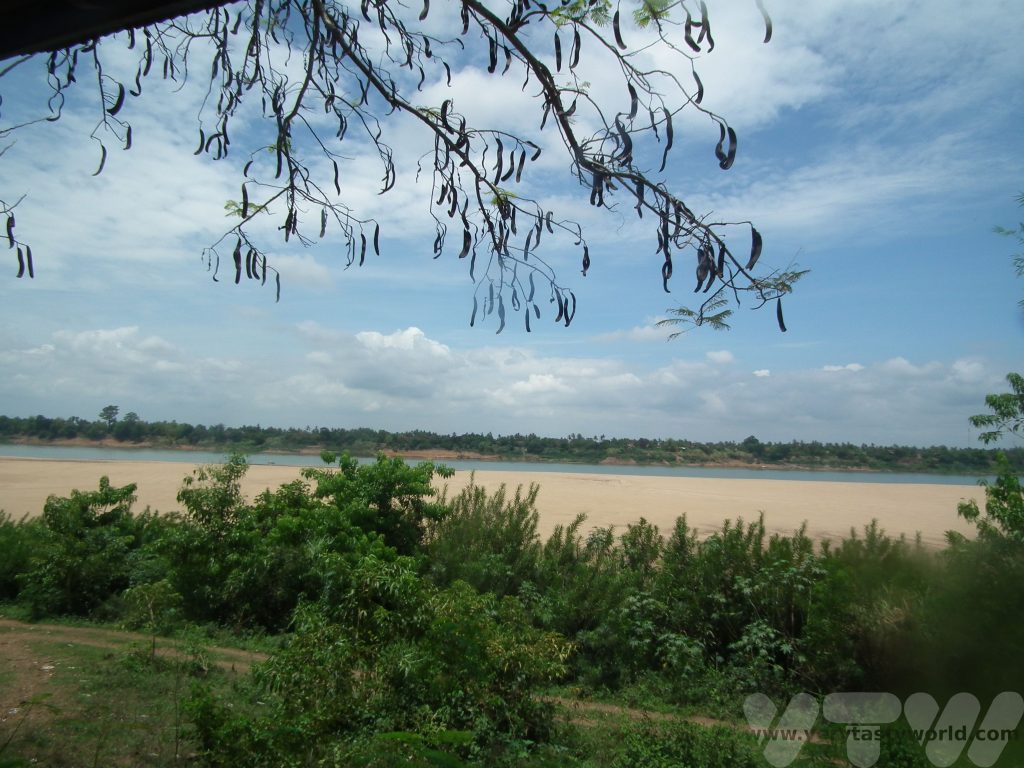
Cambodia – Lake Tonle Sap
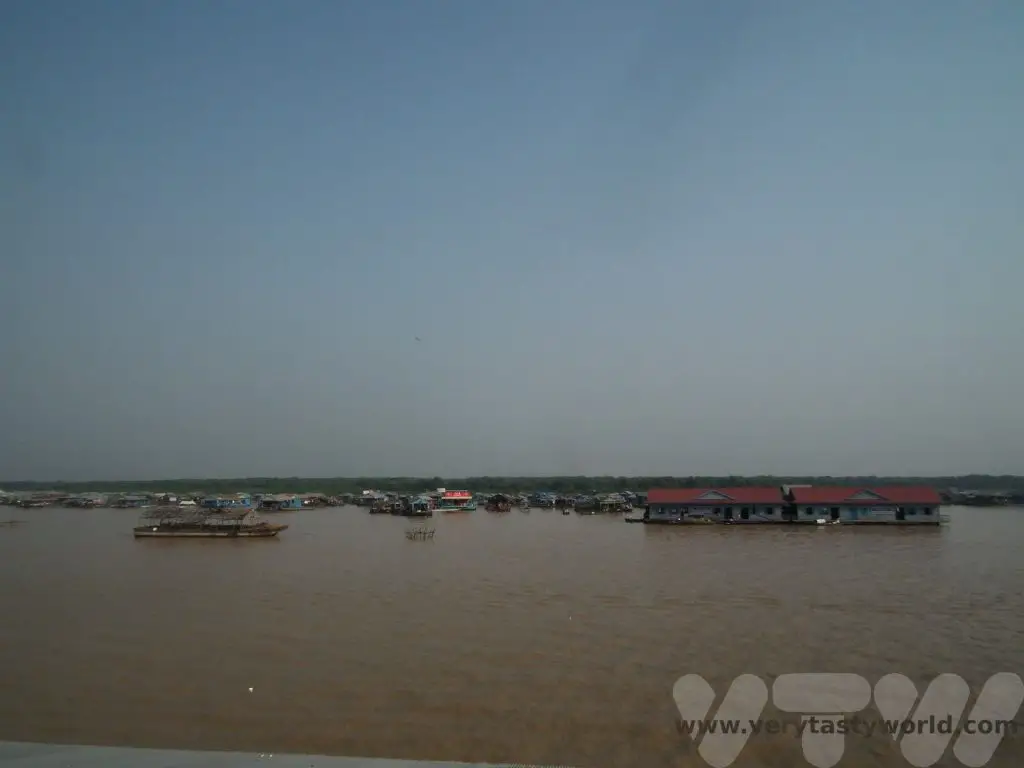
Tonle Sap has fascinating geographical features. It is located within a depression and as such its water levels are highly influenced by the flow of the Mekong; at certain times of the year the lake is fed by the river, at other times the flow reverses and flows into the Mekong along the Tonle Sap river. The river starts flowing into the lake during spring and the volume of water increases due to the monsoon during the rainy season which takes place between May and October. The rains can bring up to 4000mm of water.
The lake reaches its maximum area around November time and the water level will have risen by up to 10 metres. As the monsoon ends, lake Tonle Sap starts draining back into the Mekong via the Tonle Sap river, a journey of 120km. We visited in February when water levels were low – the lake’s depth can be as shallow as one metre – and you can see how the vegetation has adapted to this amazing natural cycle.
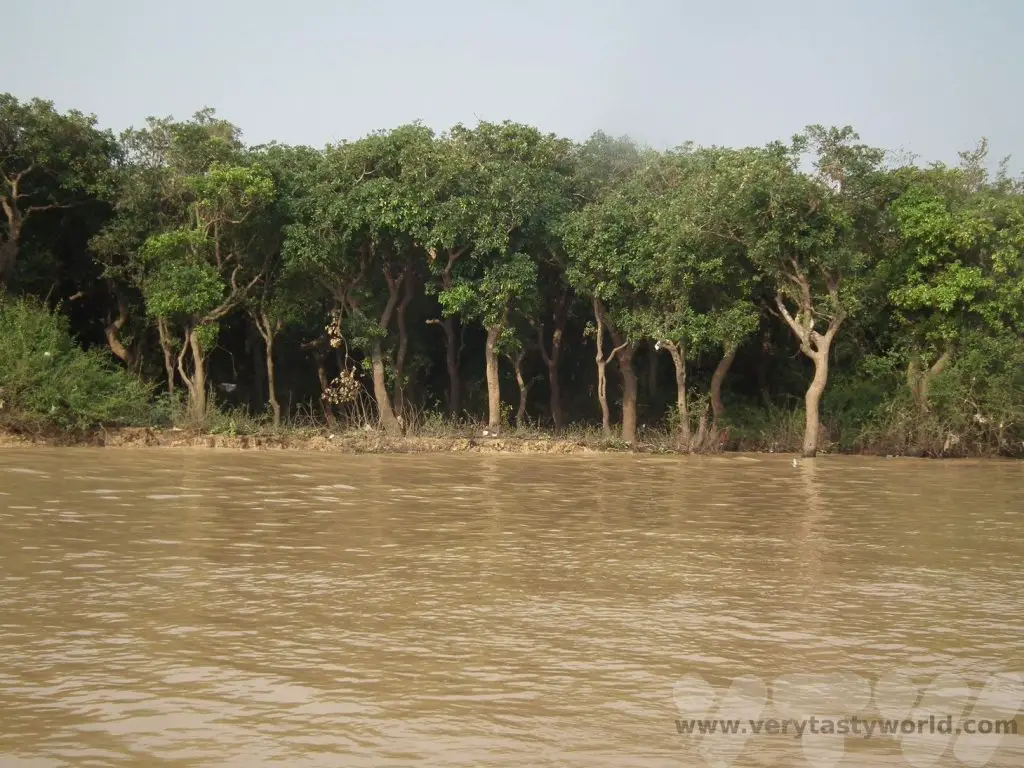
Tonle Sap is around an hour’s drive from Siem Reap and Angkor Wat and it’s possible to enjoy a boat ride to visit some of the floating shops.
Cambodia – Phnom Penh
Cambodia’s capital city is the location of the confluence between the Tonle Sap and Mekong rivers. There is a legend that in the 14th century a widow named Penh discovered a tree which contained four statues of Buddha and one of Vishnu floating down the Tonle Sap river. She asked local villagers to increase the height of a nearby hill and established a temple there. The name Phnom Penh translates as ‘Penh’s hill’.
The centre of the Khmer empire moved to Phnom Penh after Angkor Thom was sacked sometime in the 17th century, although it formally became established as the capital in 1865 by King Norodom. It is a lively city. The river Mekong is broad and serene and there are plenty of walkways along its banks. The royal palace is located by the riverside.
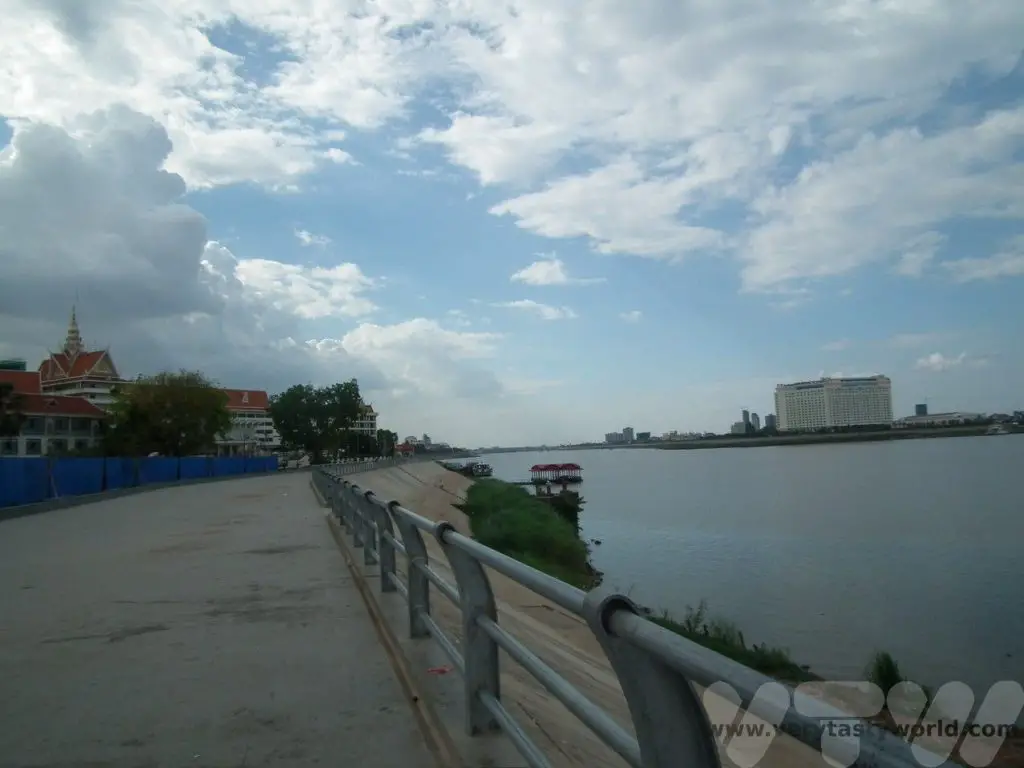
Vietnam – Mekong Delta into the South China Sea
The river then leaves Cambodia and flows into Vietnam. As it approaches the South China Sea it splits into what is known as Cuu Long, which translates as ‘Nine Dragons’, representing each of the channels that the river divides into.
The Mekong delta is vast and covers an area of about 40,5000 square kilometres. It is the rice basket of Vietnam, where two to three yields of rice can be grown each year.
It is possible to enjoy a cruise on the river. There are lots of options from a day trip to overnight stays. The easiest way to reach the Mekong Delta is to get transportation from Ho Chi Minh City – a 3-4 hour drive.
We enjoyed a leisurely two day cruise traditional style Bassac boat along the Sông Hậu branch of the river from Cần Thơ to Cái Bè.
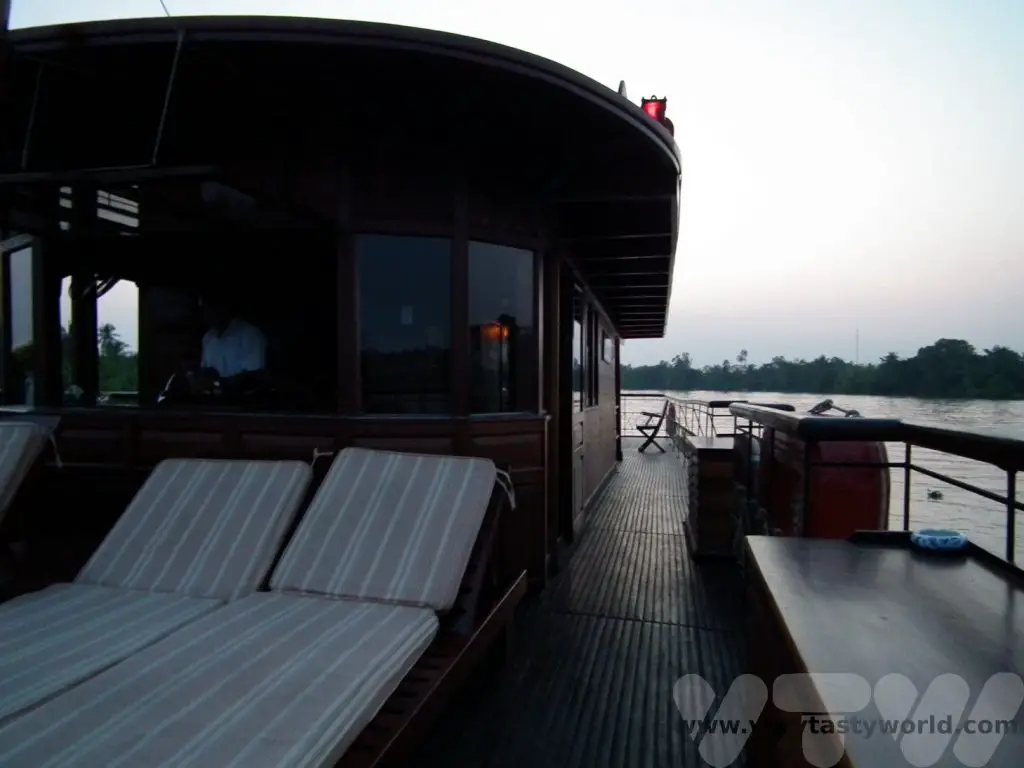
It’s a lovely way of seeing the river and many boat trips offer land excursions where it’s possible to visit local villages which grow rice and fruit.
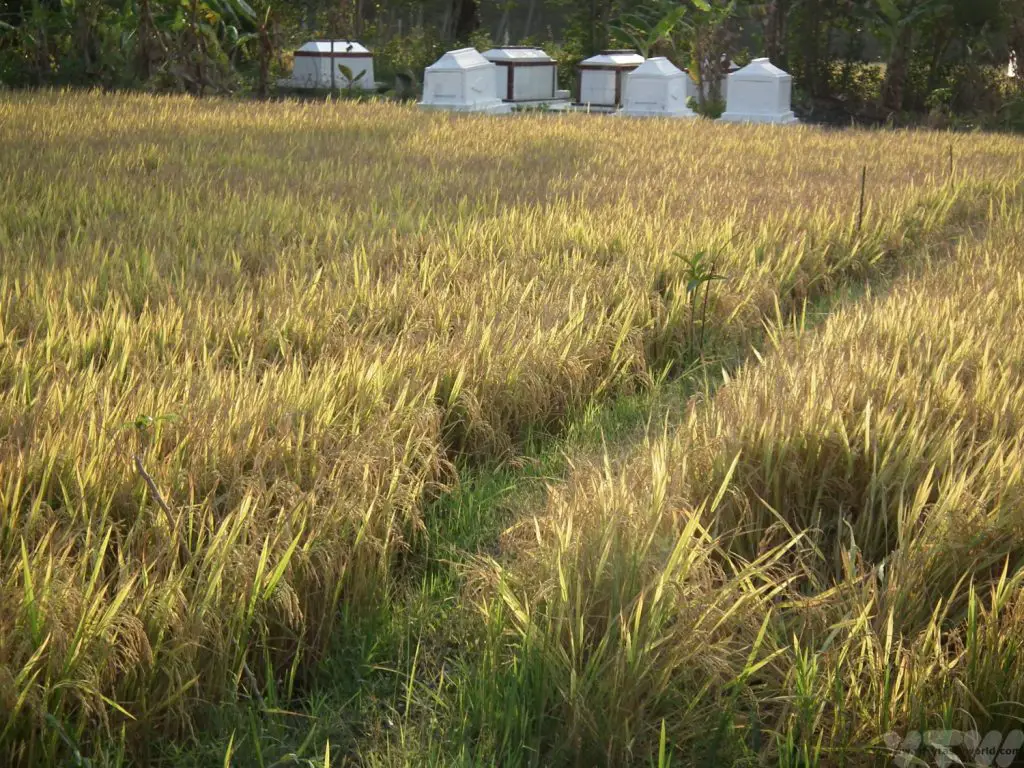
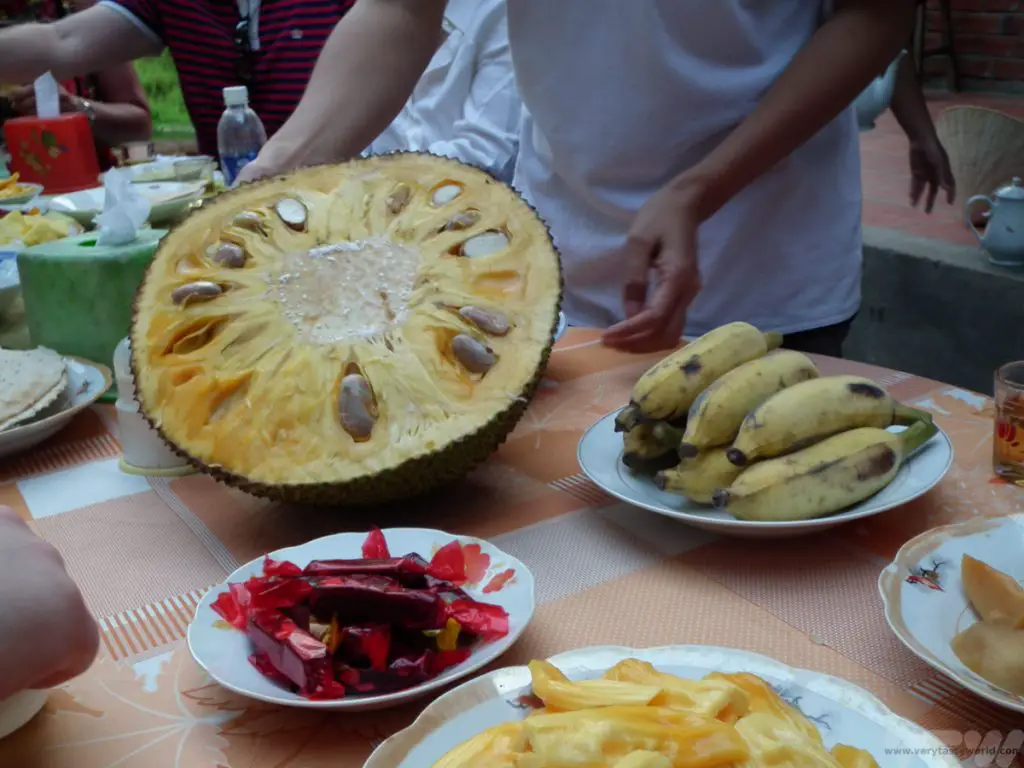
There are also onshore factories which manufacture sweets such as coconut candy, and rice paper.
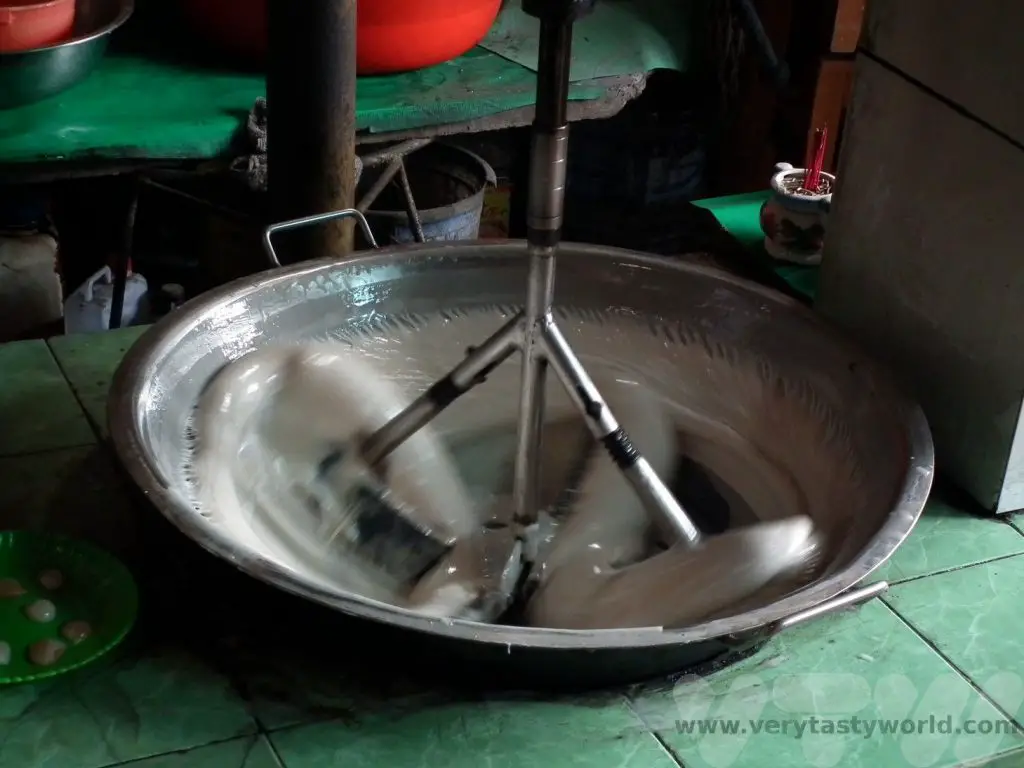
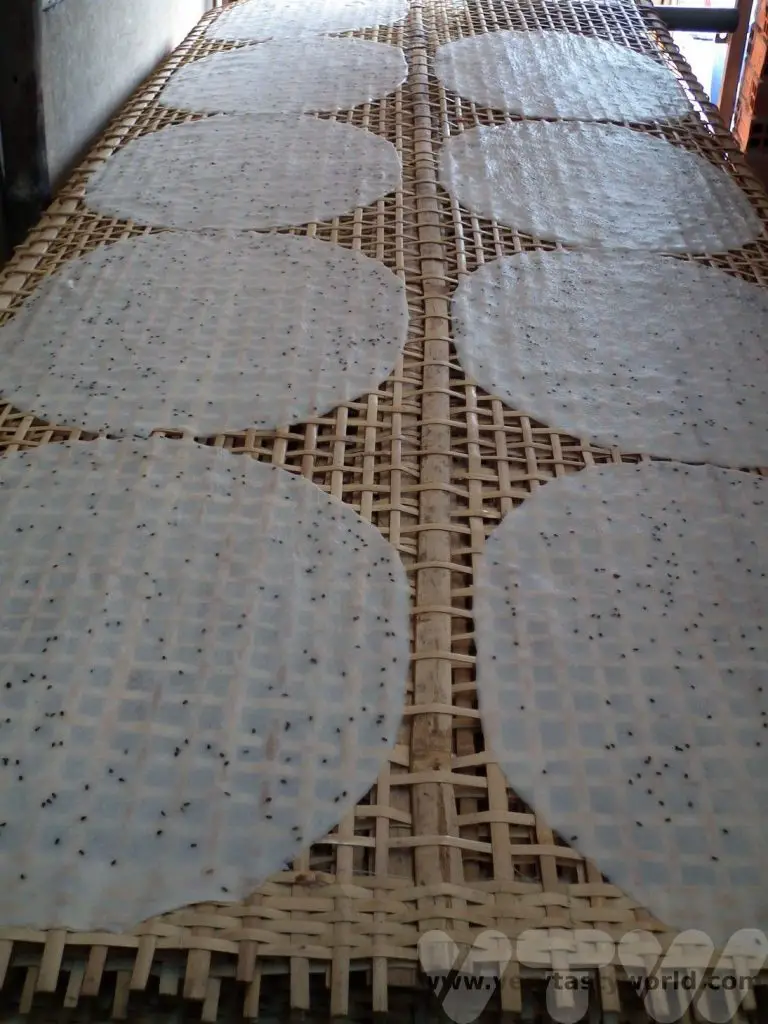
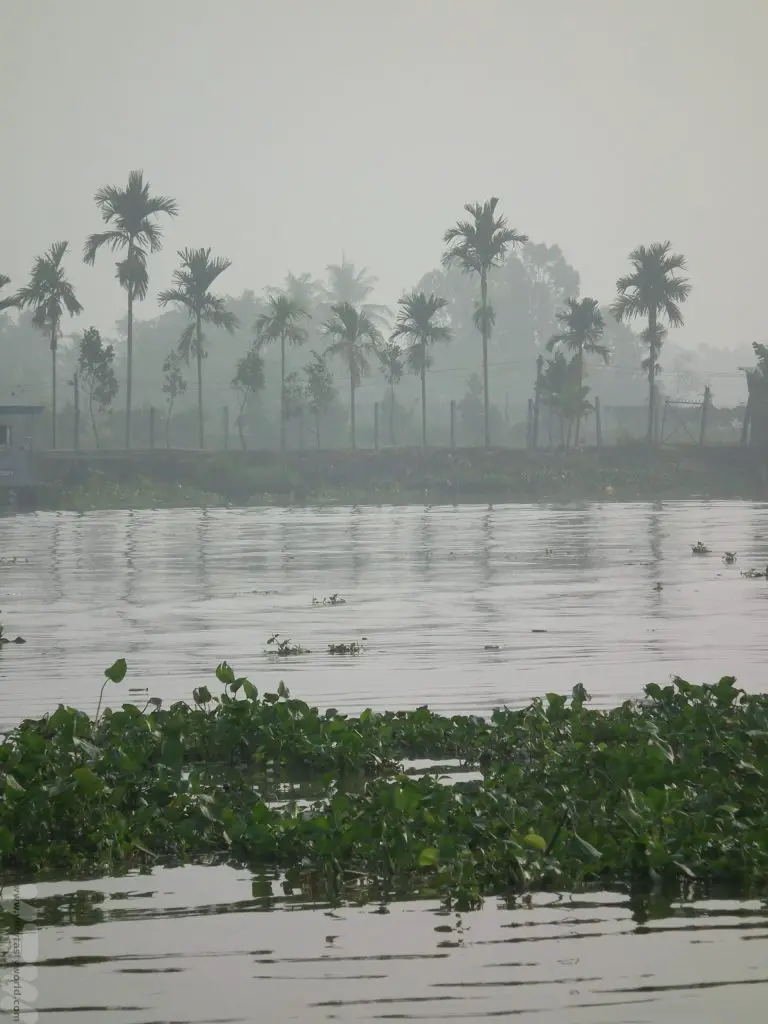
While we didn’t follow the river all the way from Lao to the South China Sea, the Mekong has meandered its way through many of our travels throughout South East Asia. It has provided diverse points of interest from the beautiful landscapes it has shaped, the wildlife that live in and around it, and the bountiful food it supplies. It is clear to see how much it has influenced the lives and livelihoods of the people who live on and around it.
Related Posts You May Enjoy

- A One Day Hanoi Itinerary
- Mekong Meanderings
- A Chiang Rai Temple and A Country Retreat
- A Chiang Mai Tour in Northern Thailand
- Sunrise at Angkor Wat and Other Temples
- Mekong Delta River Cruise in Vietnam

- Recipe: Simmered Shiitake Mushrooms
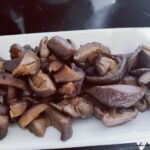
- How to Use Public Transport in Japan

- RECIPE Oyakodon Donburi

- Planning a Trip to Japan
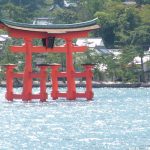
- The Makanai: Cooking for the Maiko House
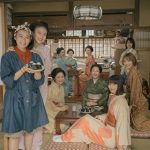
- Setsubun Food – Bean Throwing Day
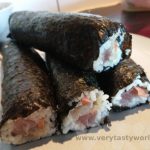
- The Gassho Farmhouses of Rural Japan
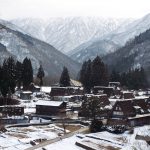
- Recipe: Japanese Simmered Pork Belly – Buta no Kakuni

- RECIPE: How to Make Umeboshi

Mekong Delta River Cruise in Vietnam
Fruits of the Dragons
As the mighty Mekong river reaches Vietnam and approaches the South China Sea the main waterway splits into a maze of rivers that form the Mekong Delta. The region is known locally as Cuu Long, or “Nine Dragons”, representing the nine main tributaries. Located just a few hours away from Ho Chi Minh City, enjoying a Mekong Delta river cruise is a lovely excursion when visiting south Vietnam.
The delta region covers an area of around 40,500 square kilometres in south-western Vietnam. It is the mouth of the Mekong, Asia’s third longest river, which has run nearly 5000km from its source in the Tibetan plateau, through China, Myanmar, Lao PDR, Thailand, Cambodia and finally into Vietnam.
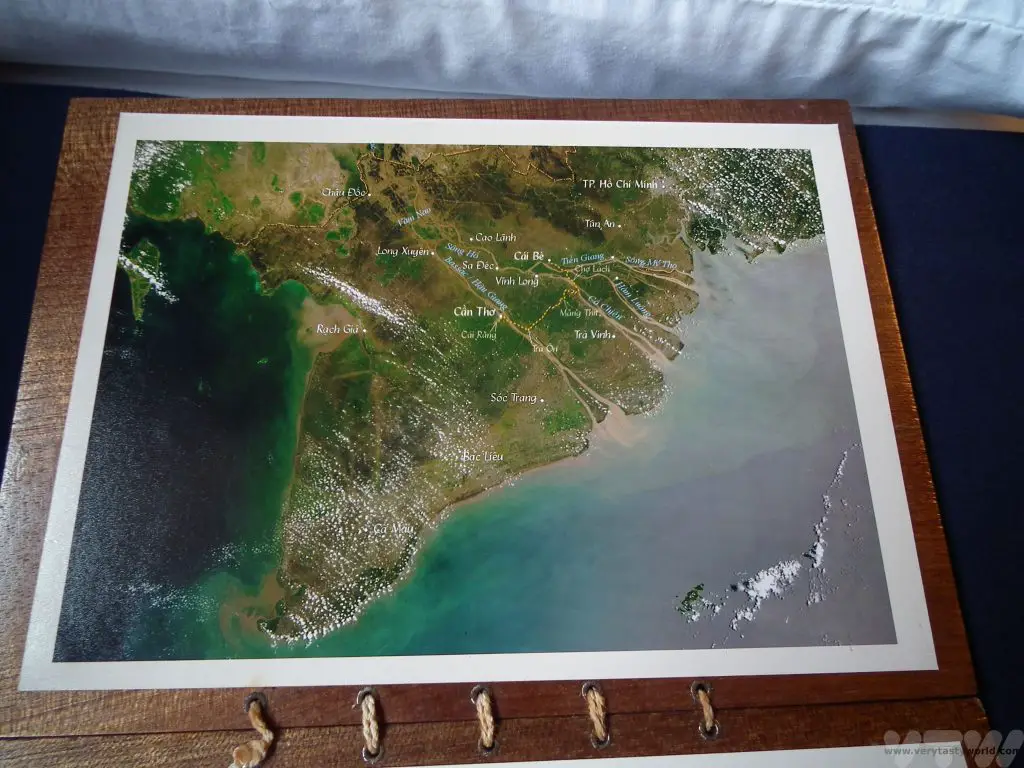
River Cruise
Three to four hours’ drive away from the relentlessly loud and energetic Ho Chi Minh City, the hectic urban hubbub slowly transitions to rural rice fields. It is possible to undertake a river cruise along the Mekong Delta from a number of locations in the area; there are plenty of choices with various levels of indulgence. It’s a lovely way to see the country from a very different perspective and at a pace that is much more laid back. We chose a two day journey from Cần Thơ to Cái Bè starting along the Sông Hậu branch of the river and sailing into the Mekong.
Depending on budget there are different boats available. Some are rather splendid – we travelled on a traditional style Bassac boat. These are wooden vessels with private cabins and a decks with seating so that you can enjoy the view.

The cabins are compact, but had all the facilities we needed, including a teeny en-suite shower room.
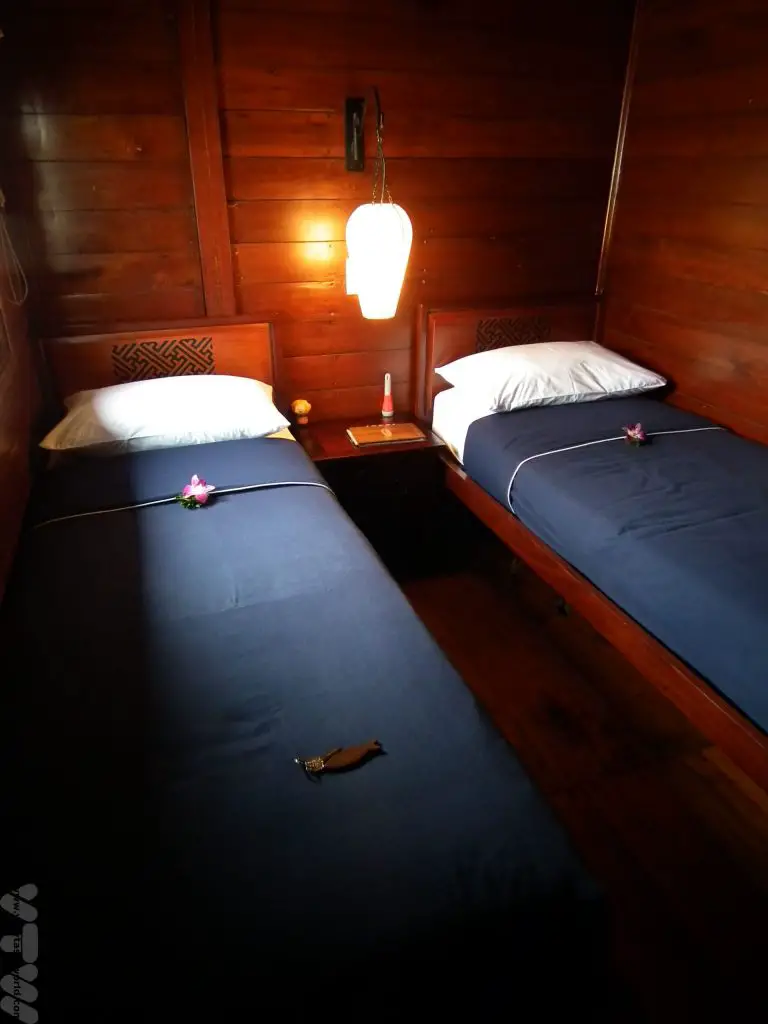

A Slow Journey Along the Mekong Delta
Cruising along the Mekong can best be described as ‘leisurely.’ We saw all sorts of vessels, large and small, as we travelled along.
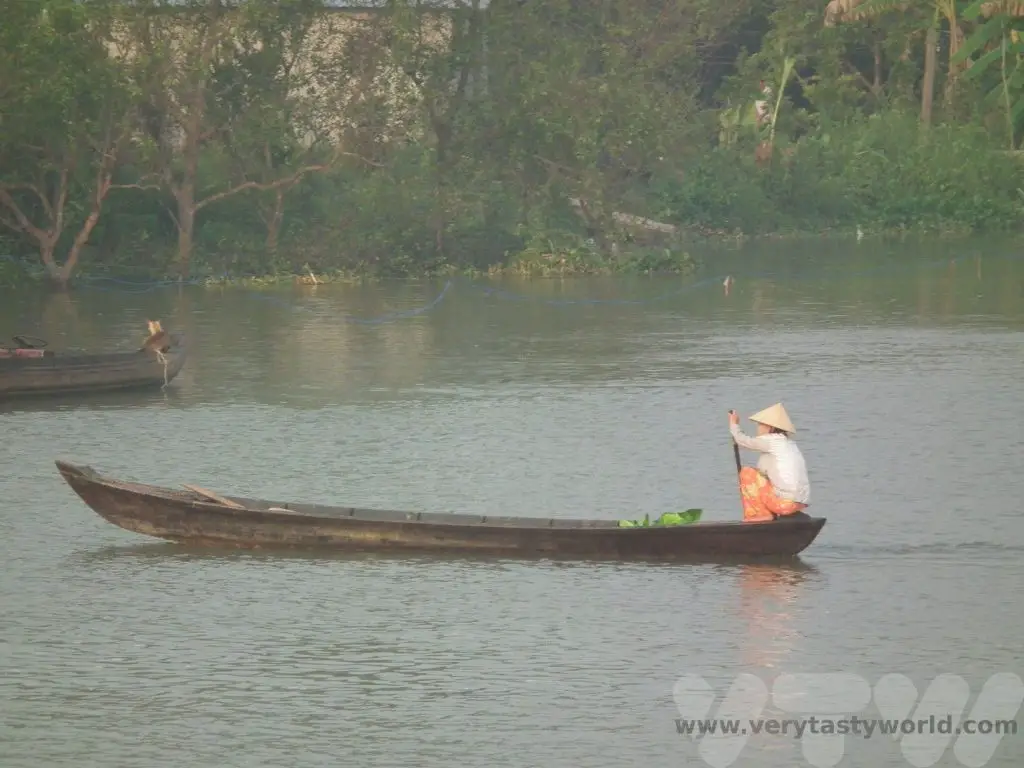
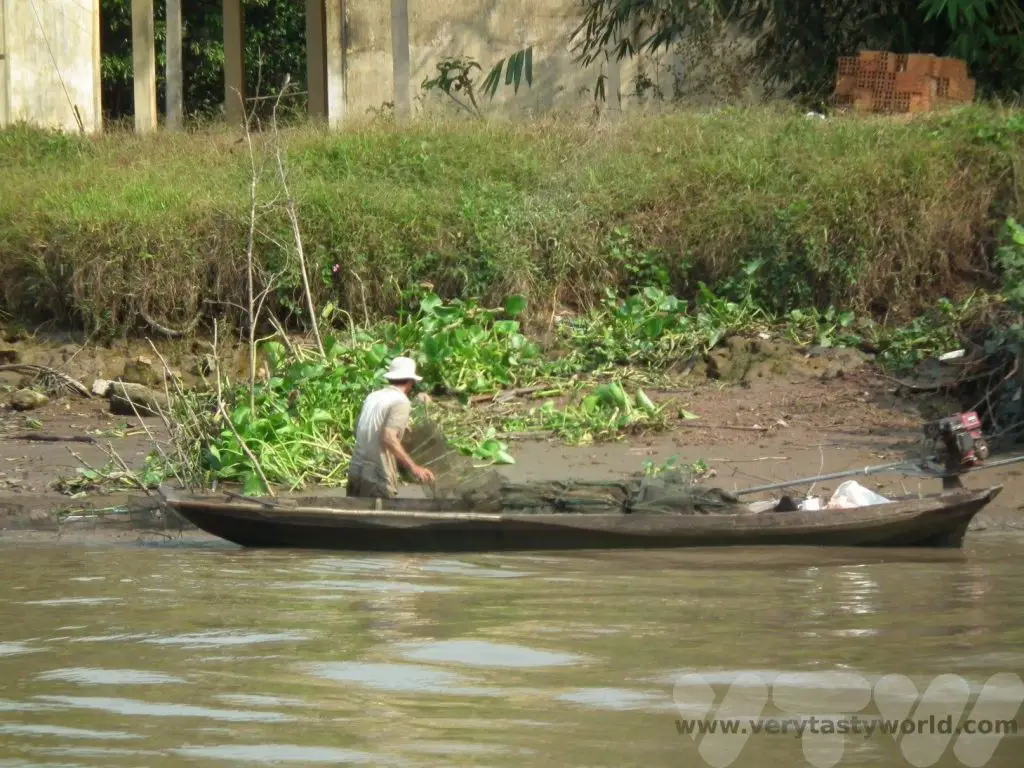
All along the journey we saw water hyacinth floating gently by. This is a fast growing plant that floats freely in the river. It is a bit of a problem in the delta as it can get clogged up in a motor boat’s propellers and is also somewhat invasive, preventing other life thriving on the river. It is apparently edible (not sure we’d want to fish it out of the river and have a munch and, anyway, it needs to be cooked first) but it can also be collected and processed in order to make woven products such as mats, bags and baskets, which local people can sell.
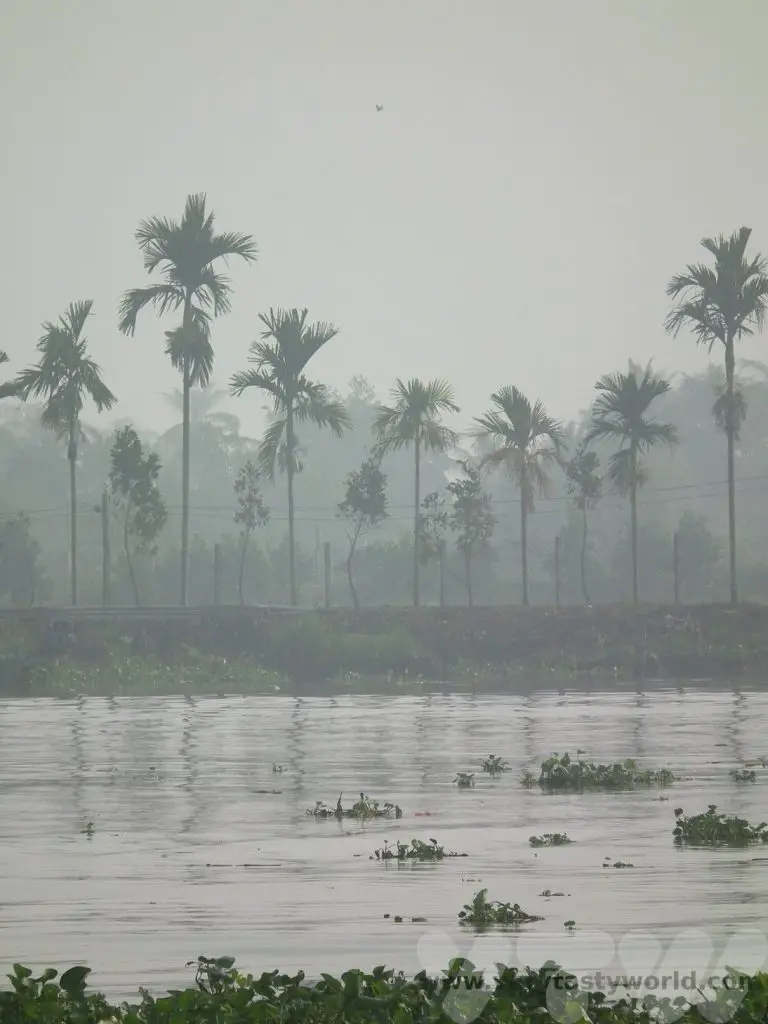
Mekong Delta River Cruise – A Land Excursion
Many of the boat trips offer excursions to various attractions along the way. It is also possible to visit some of the onshore villages in the area and to explore them on foot, visiting local farmers and learning about the food that’s produced there.
The area is extremely fertile and rice is the major crop grown. Due to the climate in South Vietnam it is possible to achieve three crops per year.
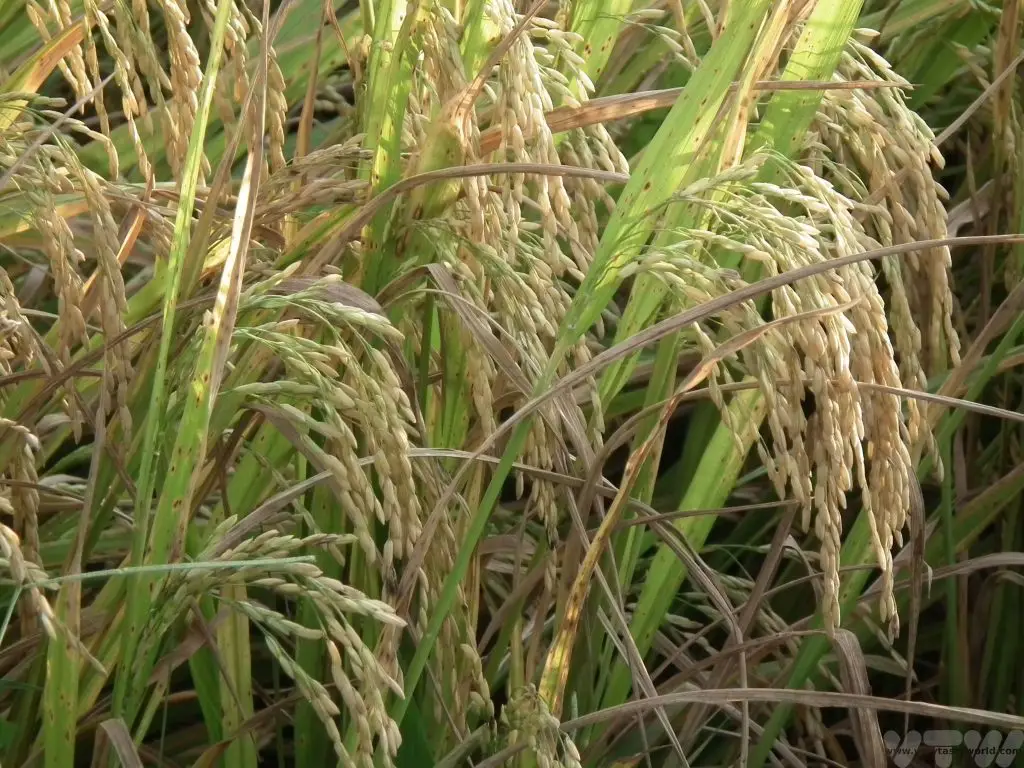
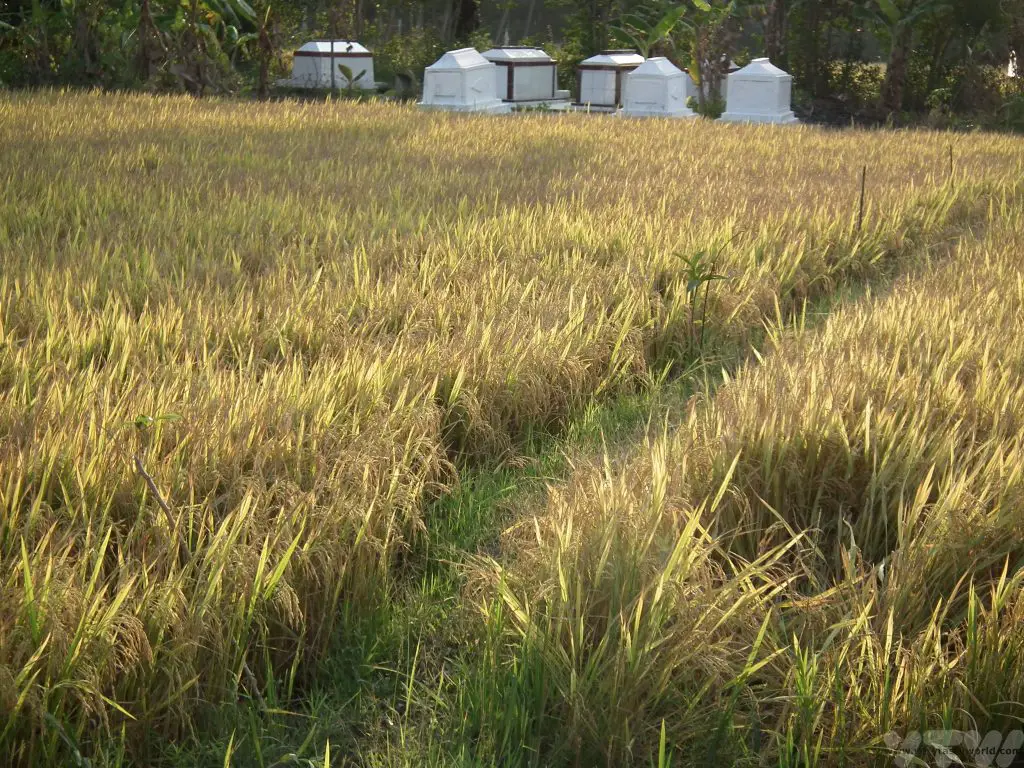
There are no cemeteries in Vietnam so families set up graveyards in the fields.
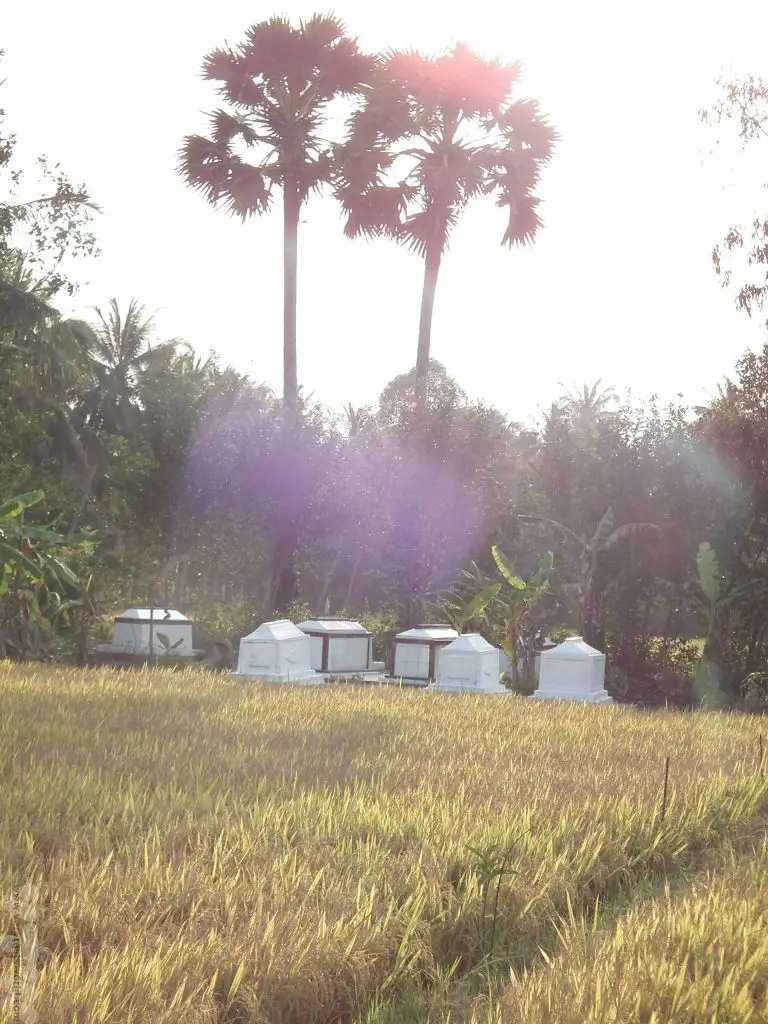
There are also a number of fruit trees that grow in the region. Some are familiar.
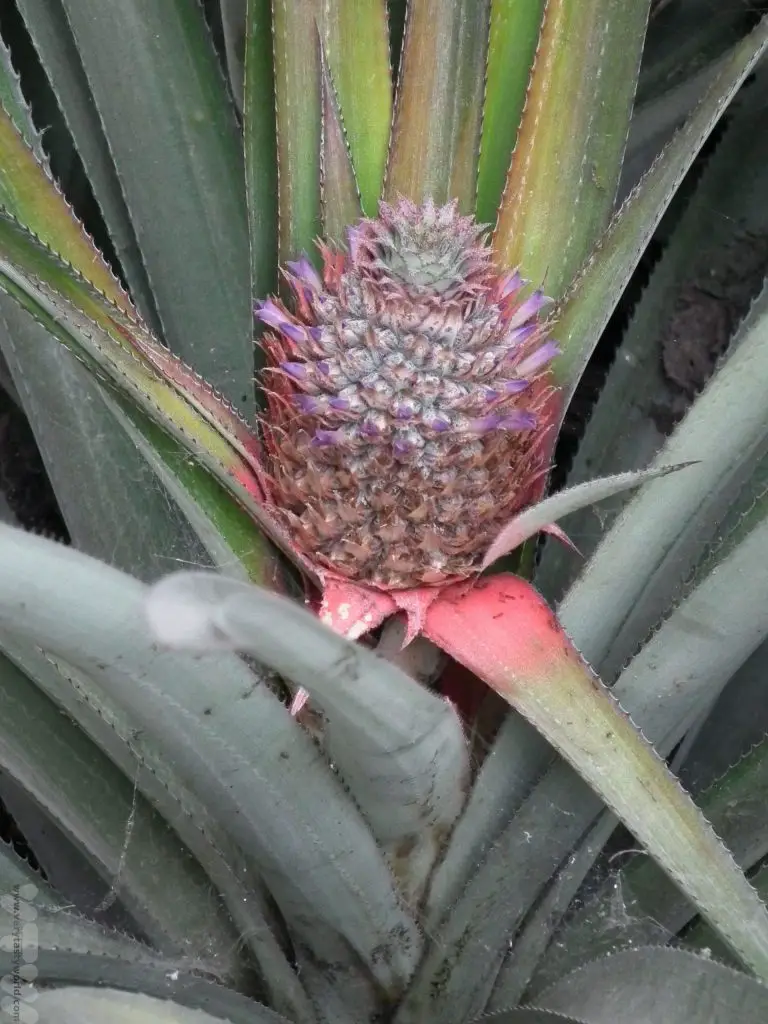
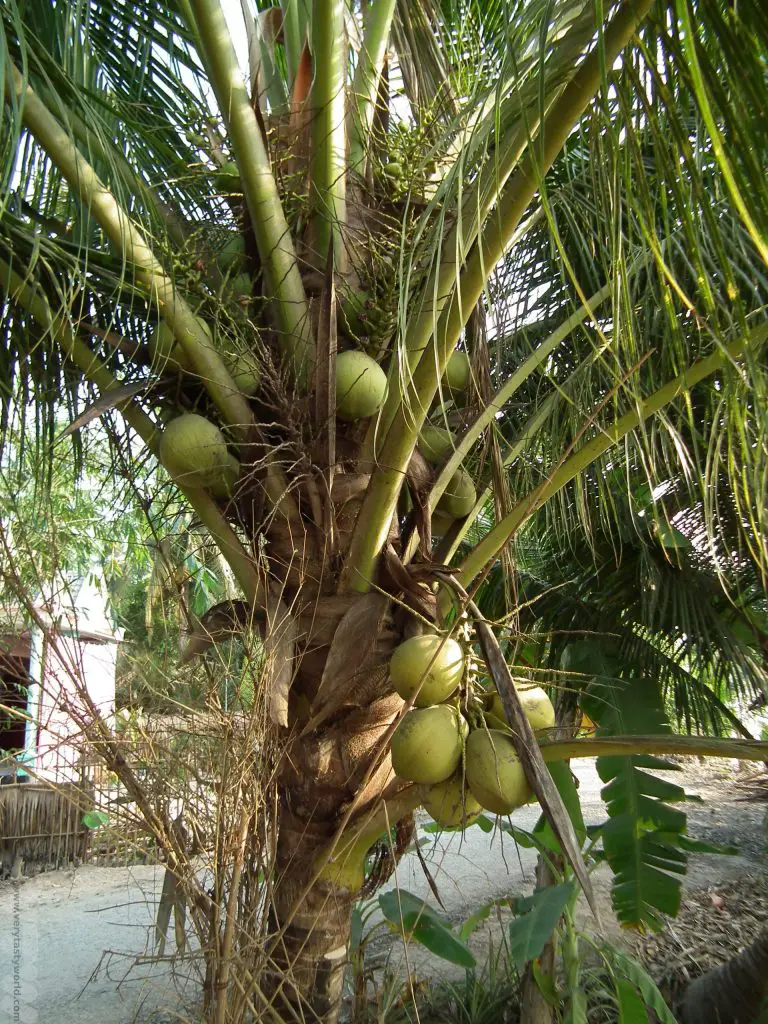
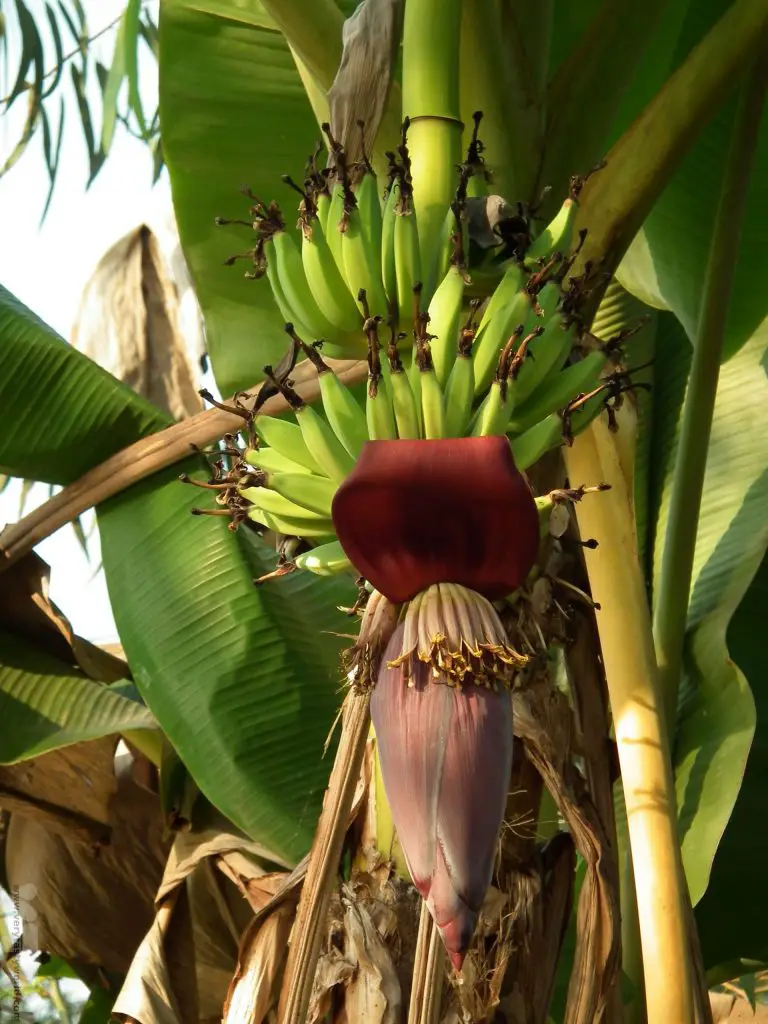
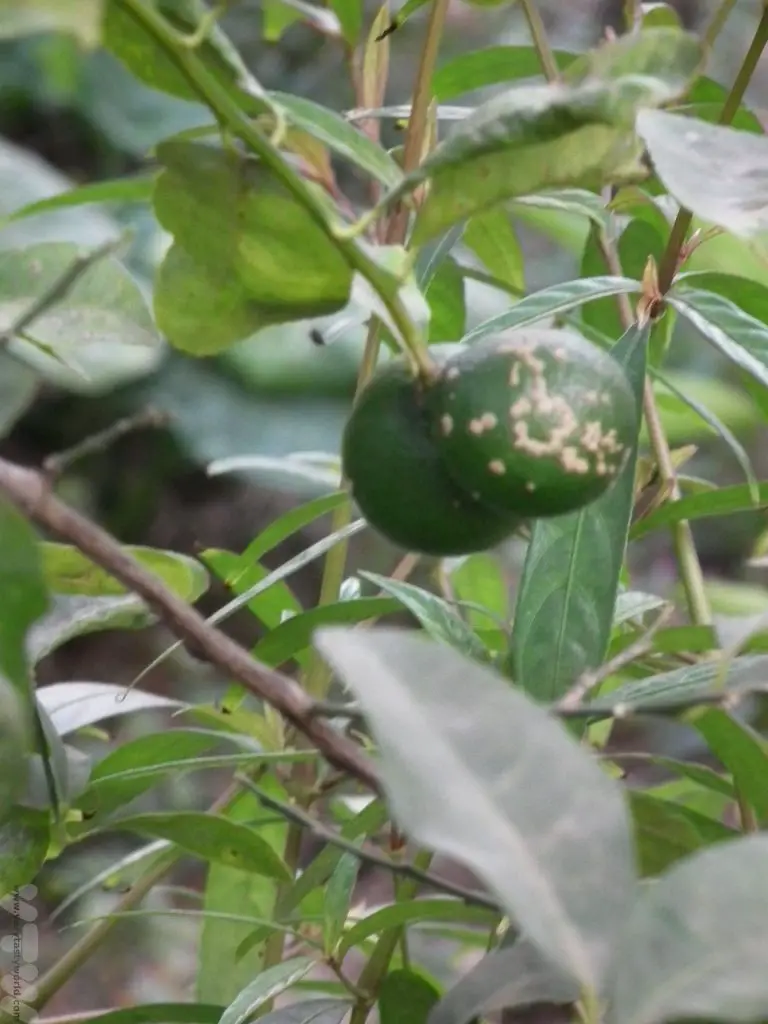
Jackfruit has become hugely popular in recent years as a ‘meat substitute’. Its texture and ability to absorb flavours make it incredibly versatile for vegetarians and vegans – mock ‘pulled pork’ is a particular favourite. But actually it is very tasty as a fruit in its own right.
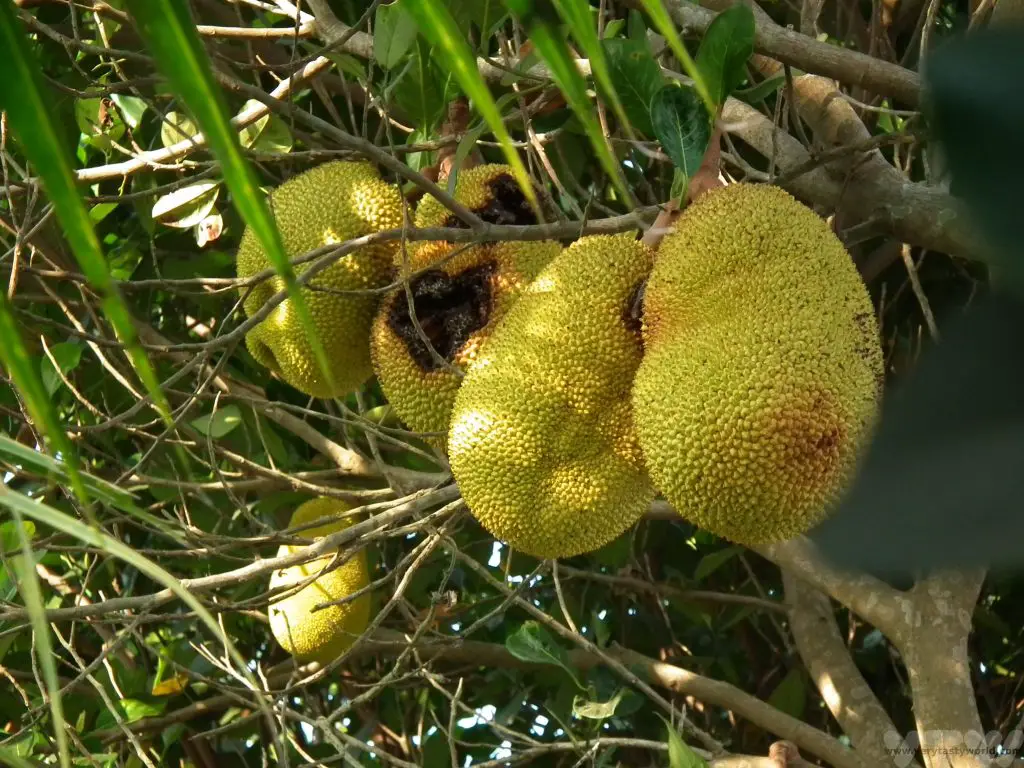
Tapioca is the starch derived from the roots of the cassava trees and often used in puddings (which are far more delicious than school dinners).
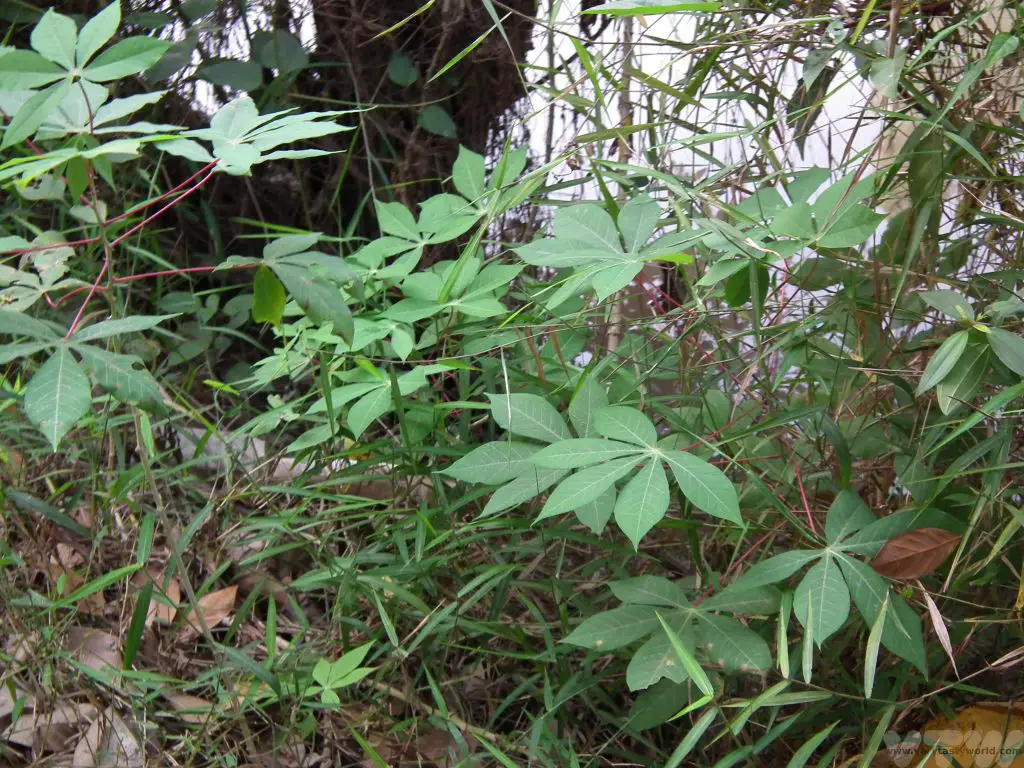
Some of the residents are happy to open up their houses and it is possible to do home stays with local families. If you’re just on a day trip, visitors are sometimes offered some of the amazing fruits grown on the island.
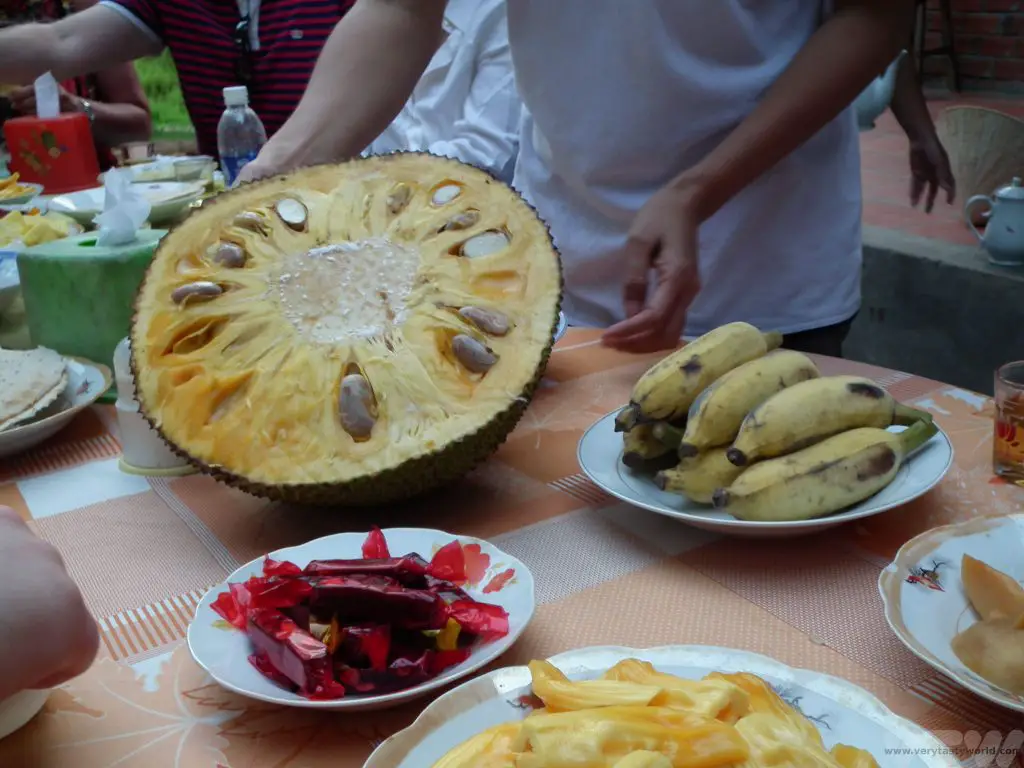
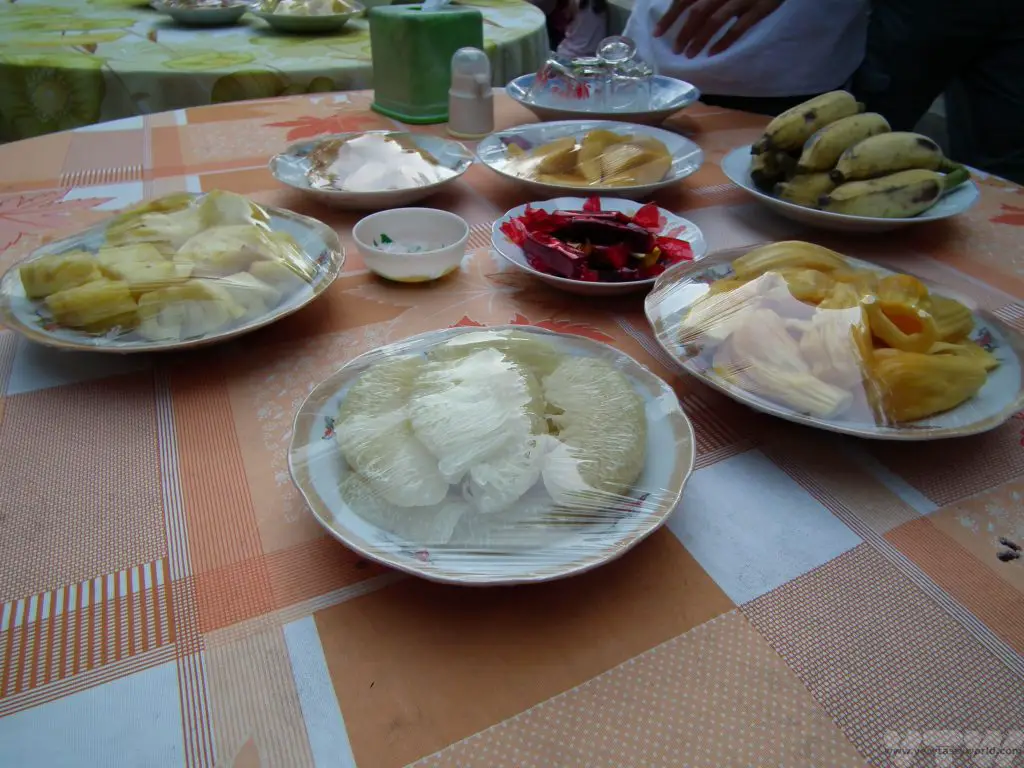
This platter was exceptional. There is an sequence to eating the fruit in order to gain maximum enjoyment: Always start with the fruit with sour flavours and finish with the sweet.
One plate that was a particular revelation was the pineapple. Of course, fresh pineapple is utterly scrumptious, especially when it hasn’t travelled half-way around the globe, but it was served by sprinkling a little chilli and salt on each piece and was a taste sensation. It makes sense: like a lot of Vietnamese food it includes sweet and sour flavours (which the pineapple provides) plus an additional salty dimension and a good dose of heat from the chilli.
Banana leaves are not only functional, they can also be decorative – just look at this lovely banana leaf ‘origami’ grasshopper.
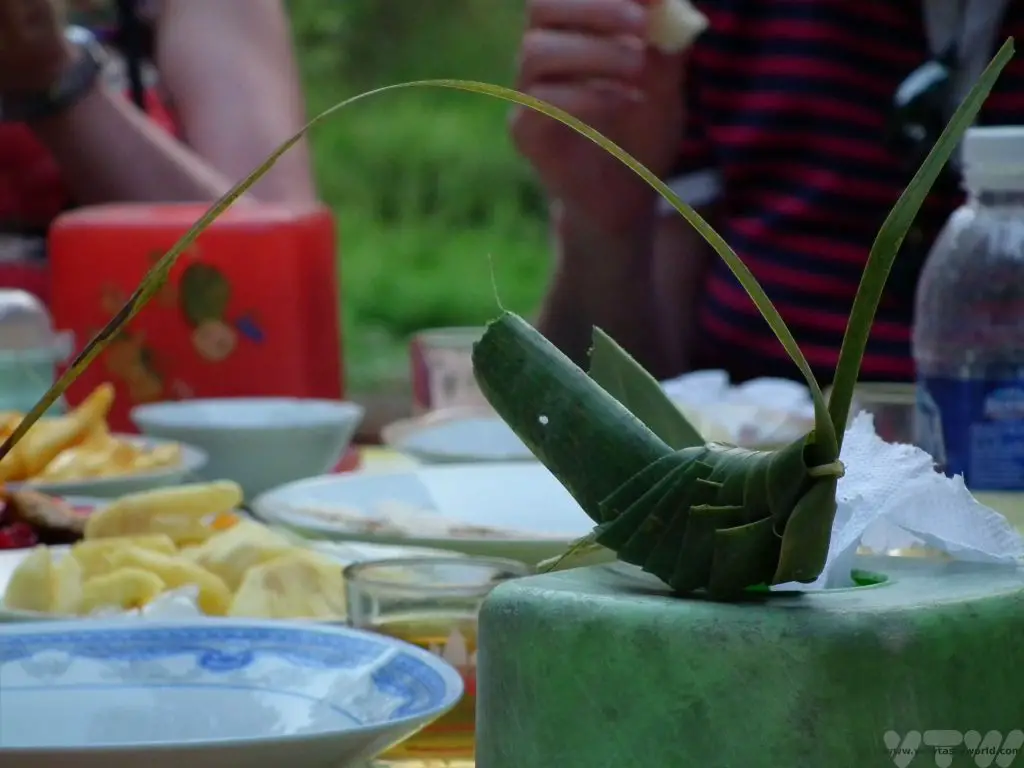
It was late afternoon by the time we returned to our boat.
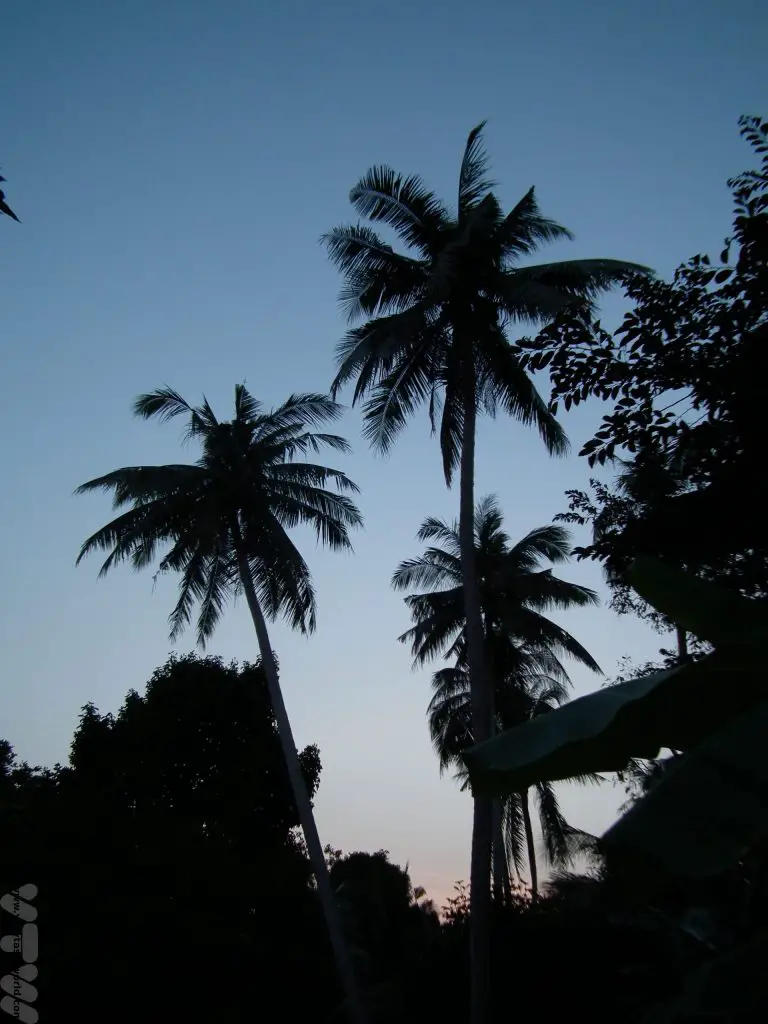
Time for a delicious, decadent seafood dinner…
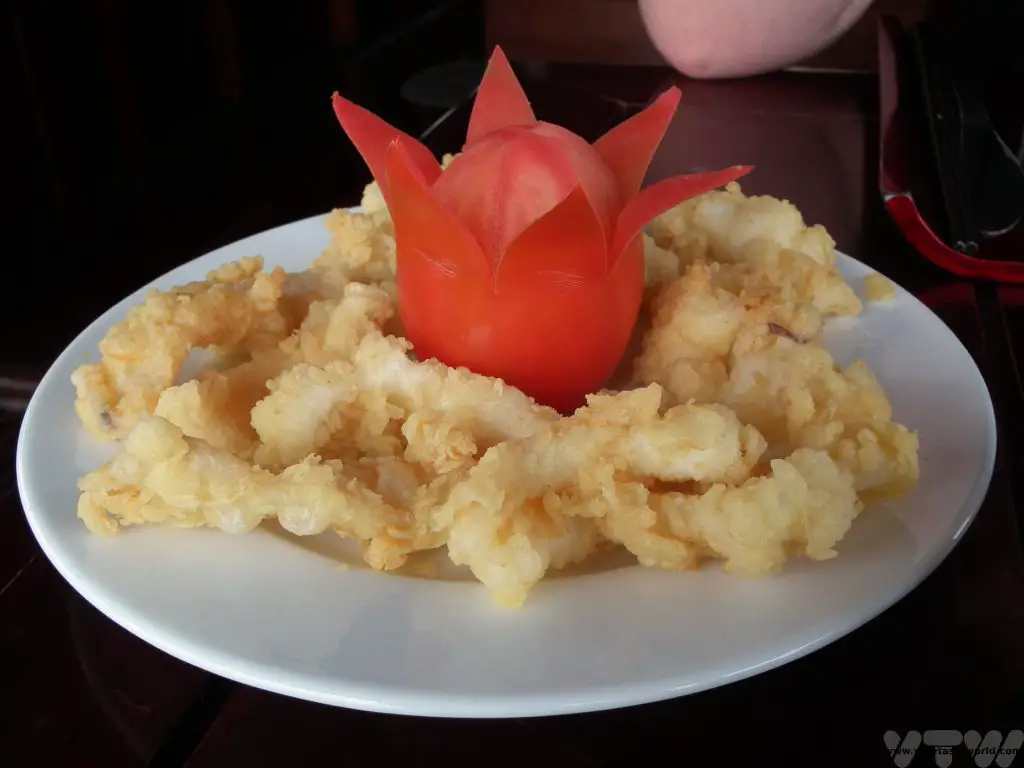
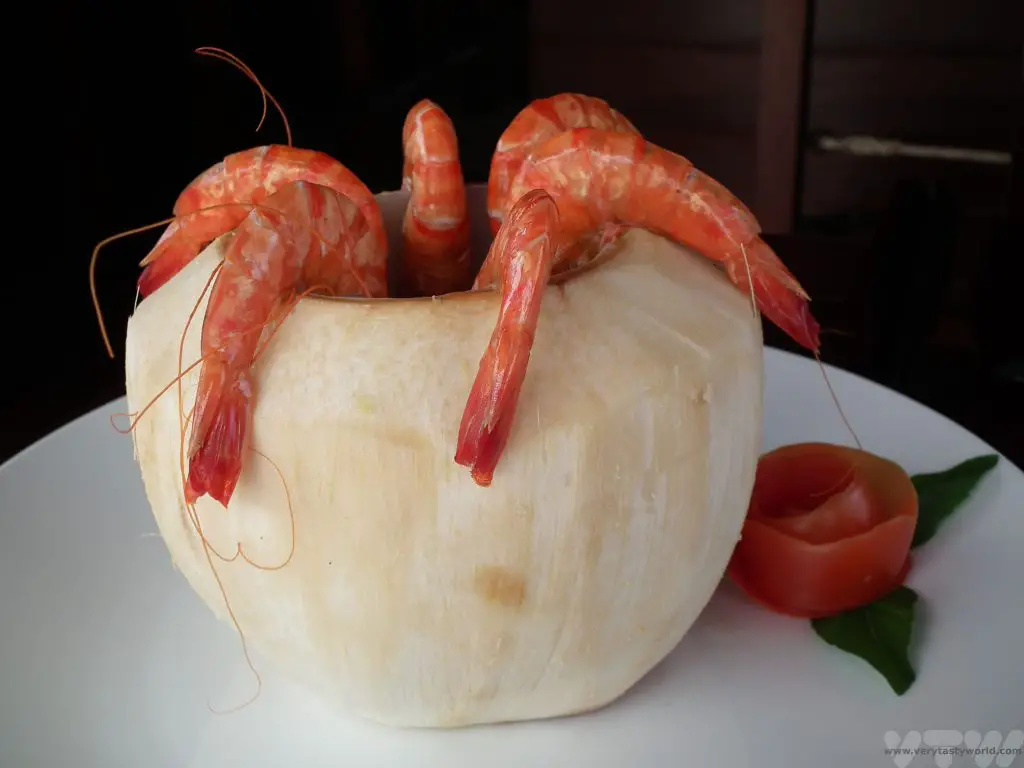
…followed by after-dinner drinks watching the sun set over the Mekong.
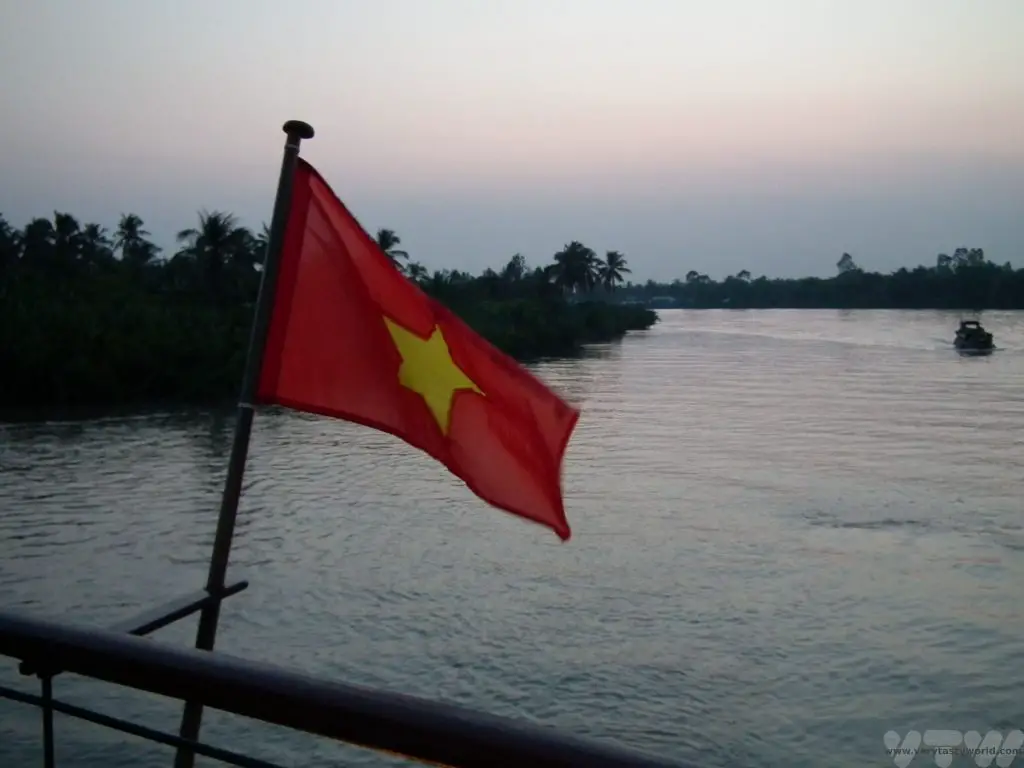
Journey to Cái Bè
Our boat docked at Tra On for an overnight stay onboard. The following morning we headed towards Cái Bè. The Mekong becomes much more of a working river and we passed by many riverside emporia and floating shops.
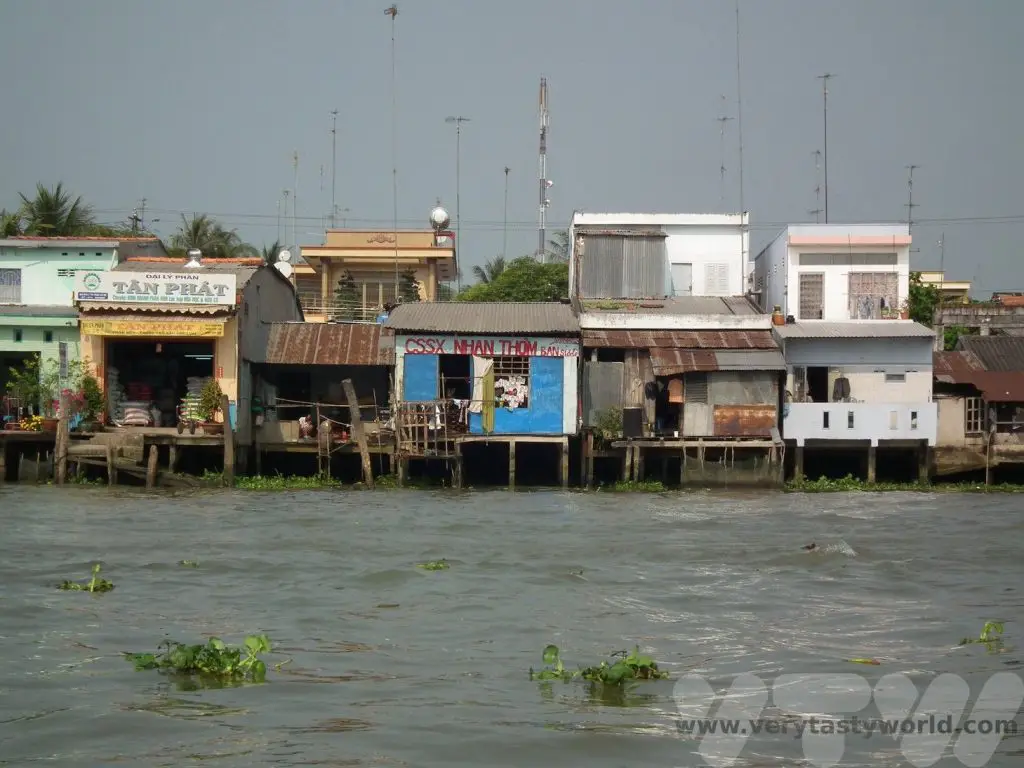
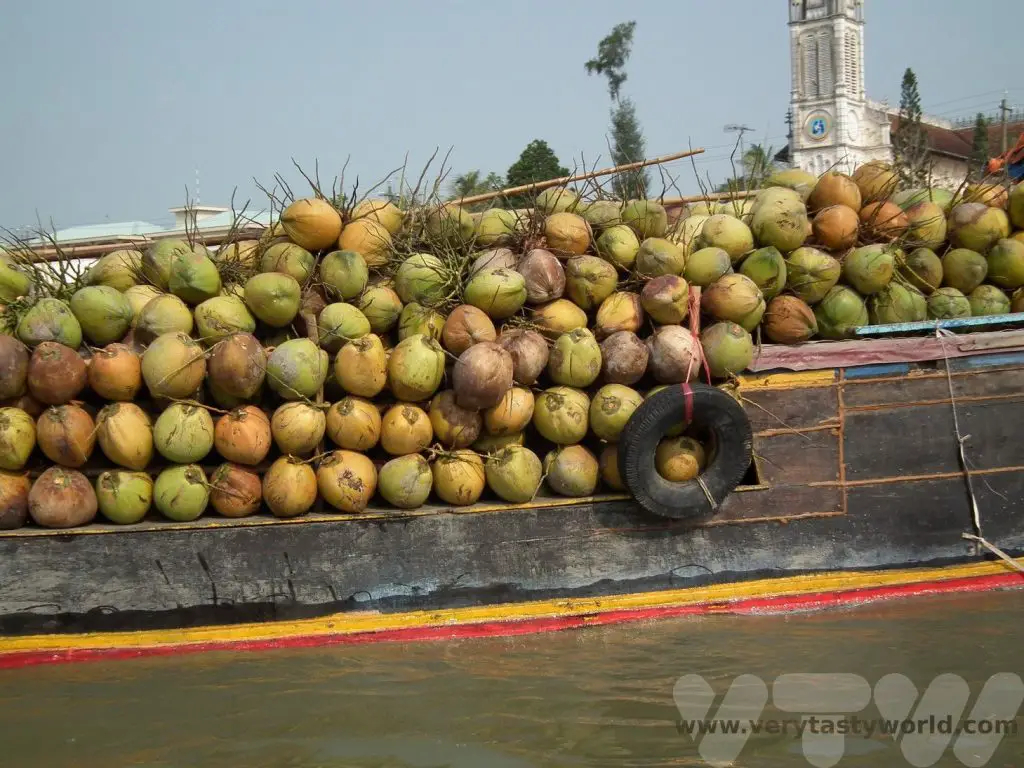
Cái Bè has a Catholic church – an unusual structure to see in the region. Dating from 1929-1932 apparently it has the tallest bell tower in the province.
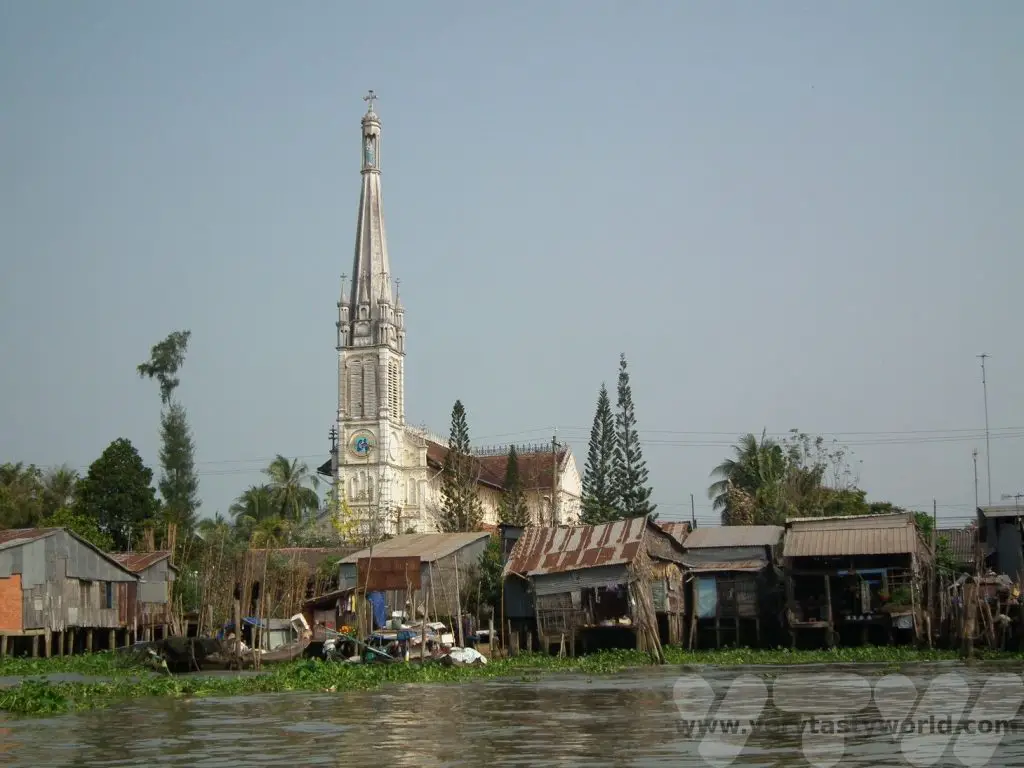
The local boats have eyes painted on them which reputedly scares away the crocodiles.
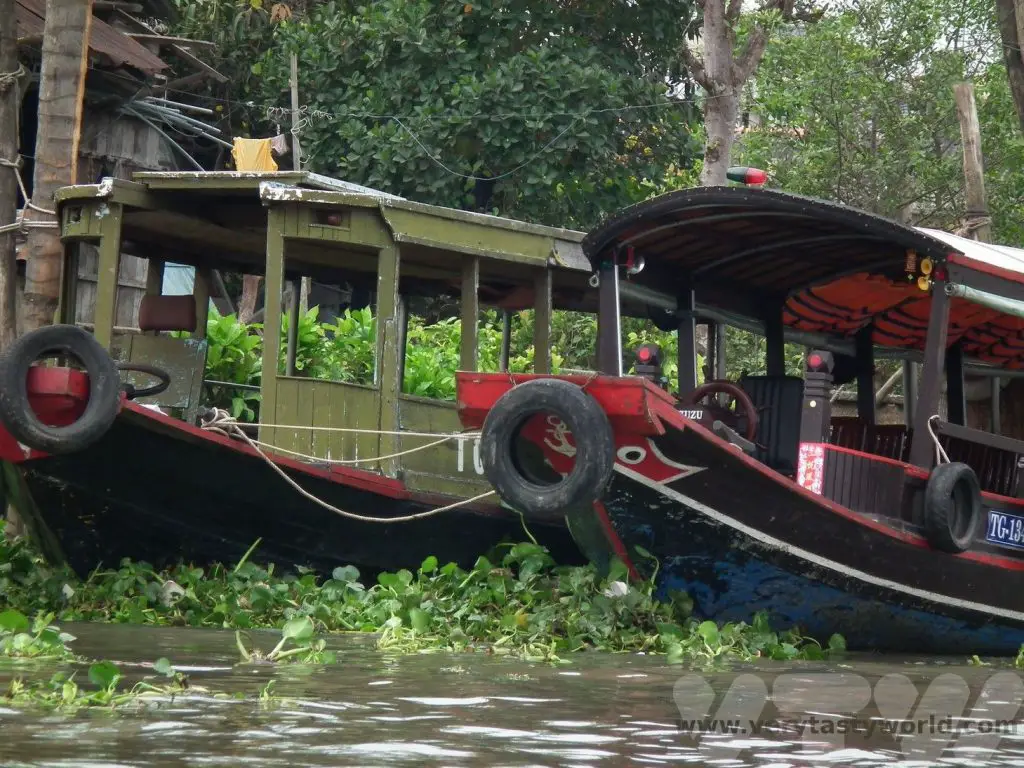
On arrival at Cái Bè we disembarked and visited a factory which made rice products – rice paper and rice cakes – as well as candies.
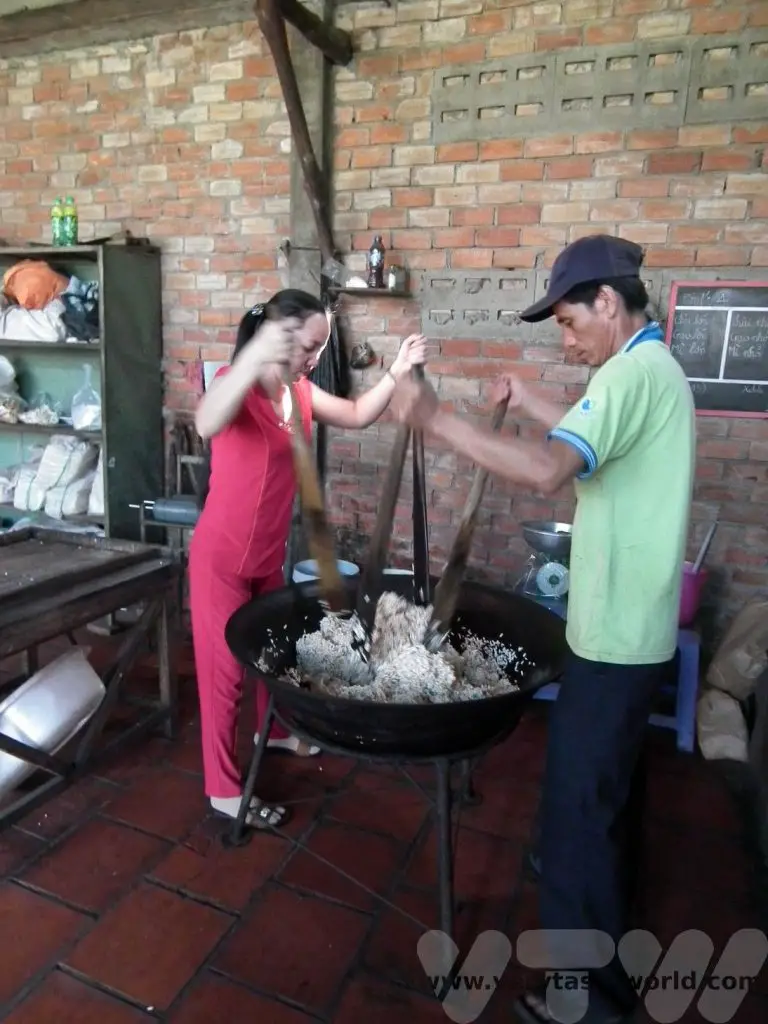
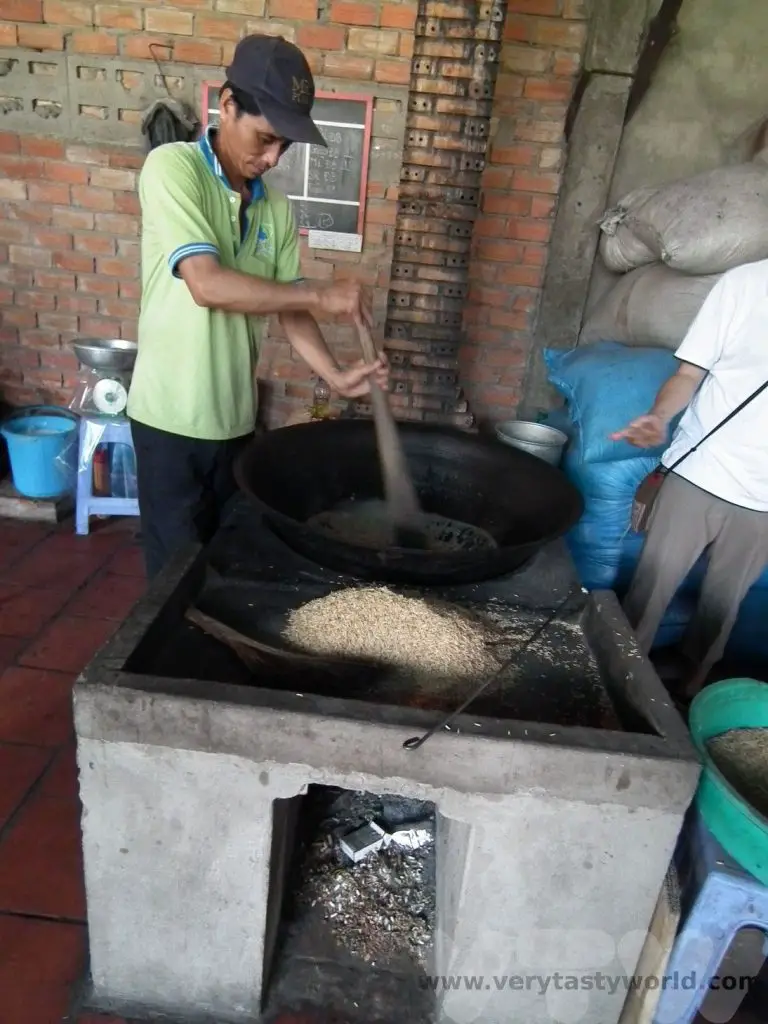
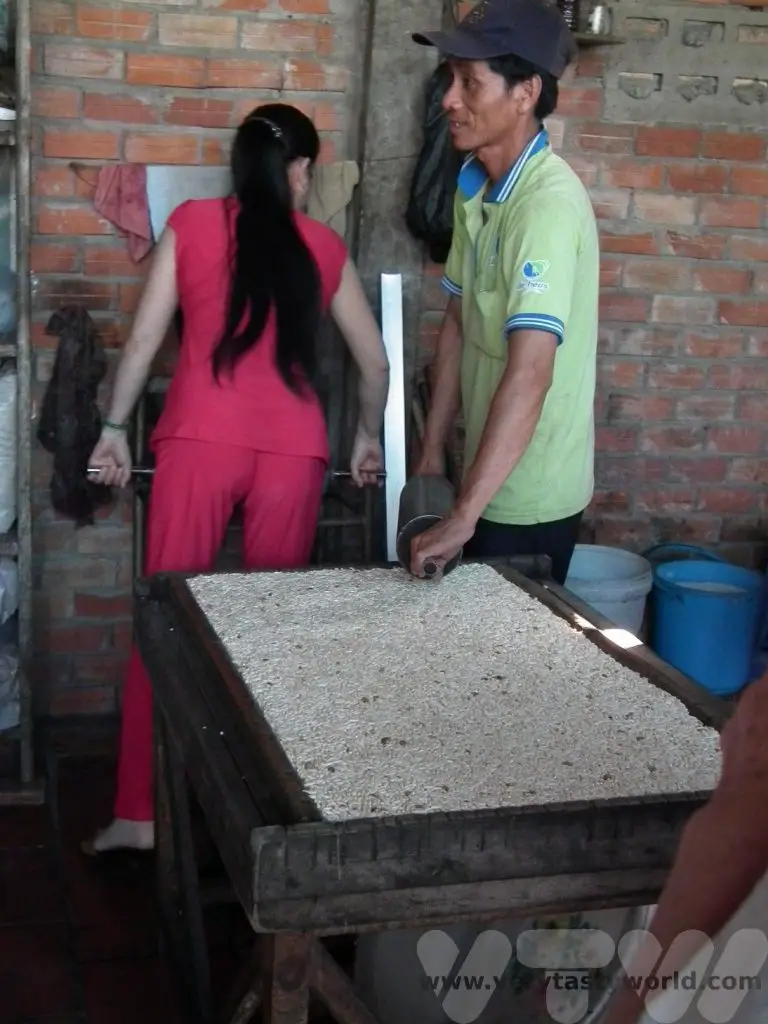

In making coconut candy, shredded coconut is used to make coconut milk and cream which is combined with sugar and malt syrup and then heated and mixed together.

Whilst still warm, the mixture is then laid into strips to cool and then they are cut into bite-sized candy pieces.
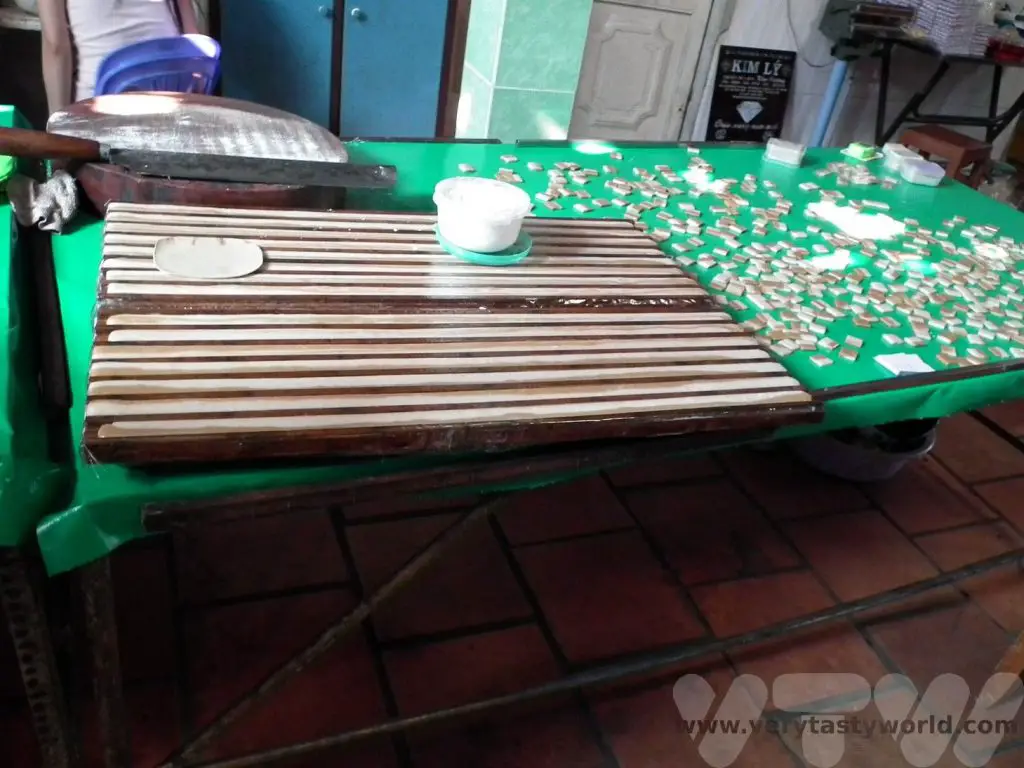
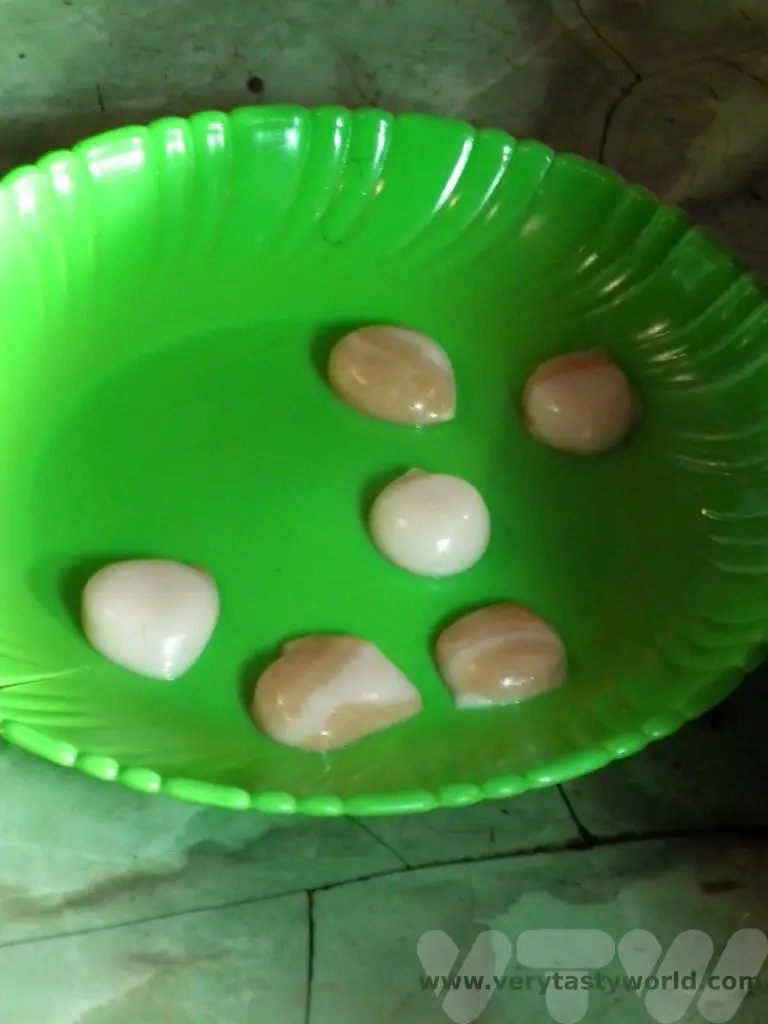
Related Posts You May Enjoy

RECIPE: How to Make Vietnamese Spring Rolls
How to make Vietnamese Spring Rolls Summer Rolls
Vietnamese cuisine is amongst the most delicious in the world. It is also amongst the prettiest. We have a Vietnamese spring roll recipe. While most people think of spring rolls as being deep-fried, gỏi cuốn are actually served cold – at room temperature. In Western countries they are referred to as spring rolls, salad rolls or even summer rolls. They have slightly different names depending on the region of Vietnam: they are gỏi cuốn, meaning salad rolls in the south and nem cuốn in the north. Apparently they are called “rice paper” rolls in the central regions of the country, which is a simple description but accurate.
Gỏi cuốn comprise cold vermicelli noodles, salad, protein such as prawns or pork and herbs all wrapped up in rice paper, known as bánh tráng. They are usually served with a dipping sauce. Unlike fried spring rolls, these are really fresh and, like so much of Vietnamese food, full of flavour.
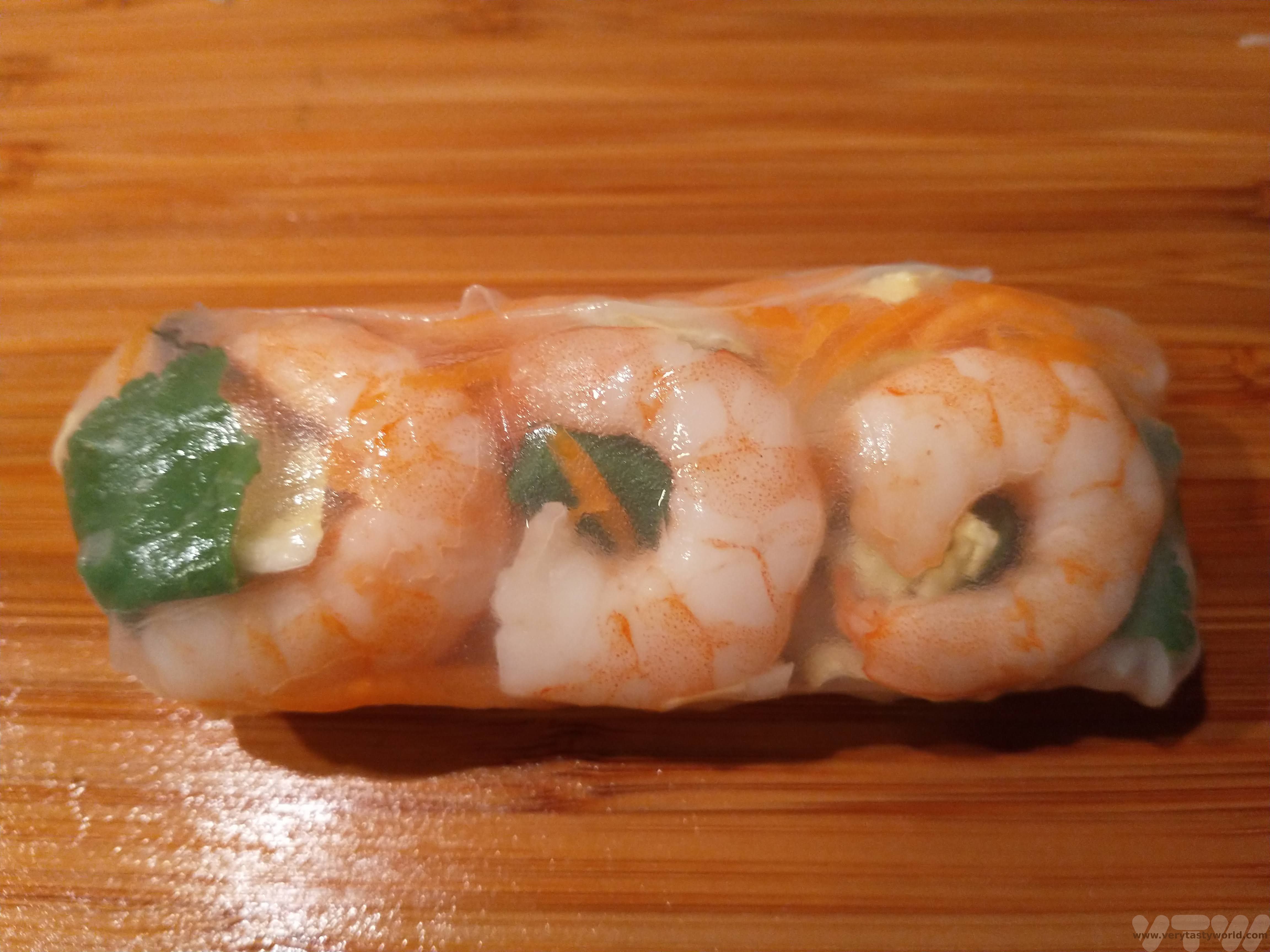
Vietnamese Spring Roll Recipe
- Makes 12 rolls
Ingredients
For the Rolls
Rice paper wrappers (you can get these from Asian supermarkets)
100g vermicelli rice noodles
36 king prawns (3 per roll, or one more each if you are feeling greedy), cooked and peeled.
2 carrots
Shredded lettuce or cabbage
Handful of fresh mint and/or coriander (or a herb of your choice)
For the Dipping Sauce
2 tbs sweet chilli sauce
Juice of ½ a lime
Splash of fish sauce (or soy sauce for vegetarians)
How To Make Vietnamese Spring Rolls Method
Prepare the noodles. Pour boiling water over the vermicelli and leave for 5-7 minutes until they are soft. Drain and allow to cool.
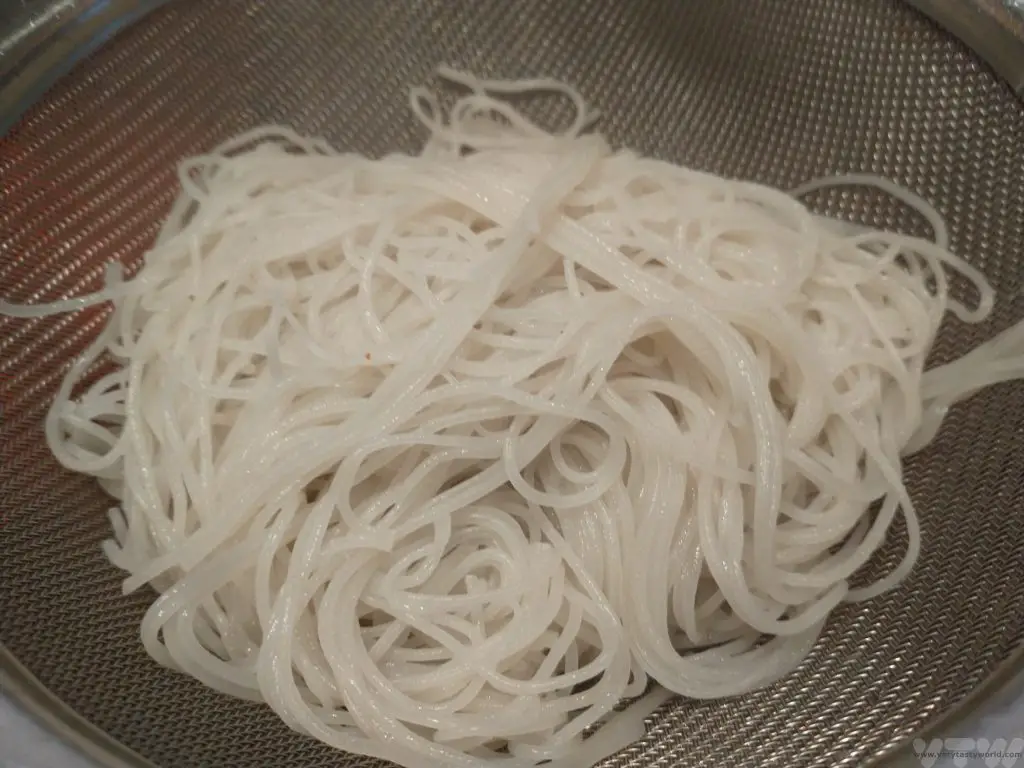
Prepare the filling. Shred the lettuce/cabbage.
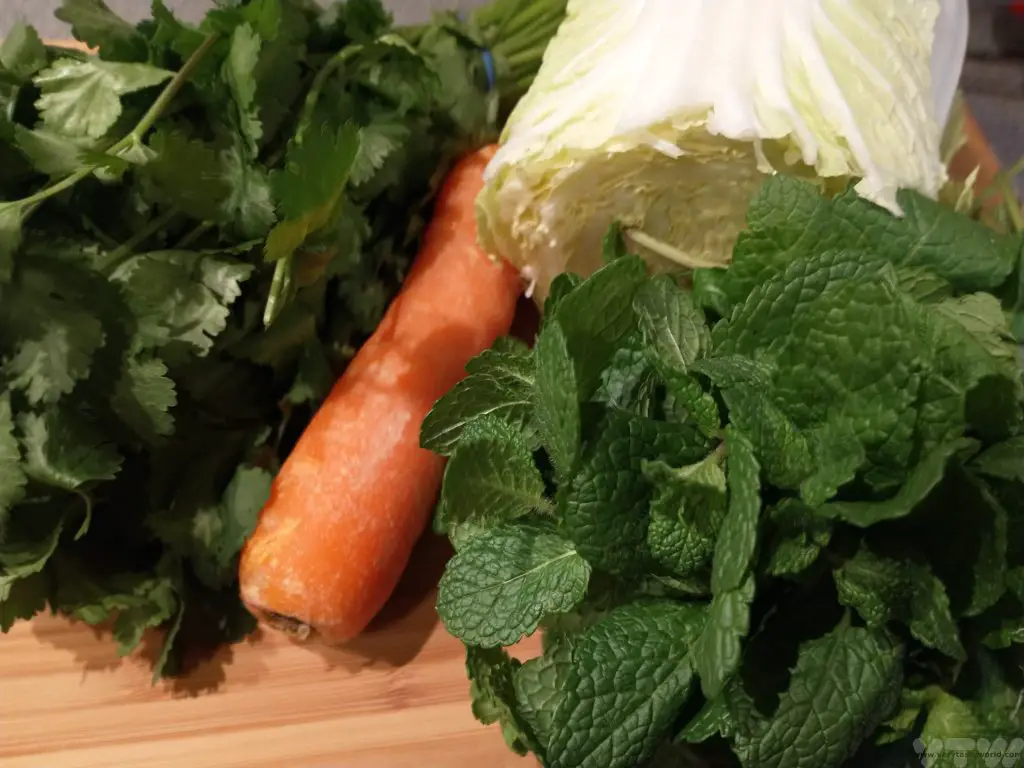
Finely slice the carrot. There is a tool that you can buy easily in South East Asia which is a little like a vegetable peeler that juliennes the carrot. If you don’t have one of those you could use a mandolin. And if you don’t have a mandolin a grater will do just fine.
The packaging on the paper skins – and many other recipes – states that you only have to soak them in warm water for a couple of seconds. We found that actually some of them need quite a bit longer soaking time. (And some just didn’t go soft at all- those should be discarded, these are not crunchy rolls and will not only not taste very nice, they will have a horrid texture and be really difficult to roll.)

When the paper is super-soft and totally translucent take it from the water and lay it flat on a clean surface. The skins are much more robust than they appear.
Start placing your filling onto the paper. You want to place it around 1/3 to 1/2 of the way up from the bottom of the paper and leave about 2 cm space on each side. Because the papers are partially transparent you can take your time to make the rolls look pretty. To do this make sure that the colourful items such as the prawns, herbs (try to keep the leaves whole for extra prettiness) or carrot are on the bottom of the pile, so that they can be seen through the wrapper.
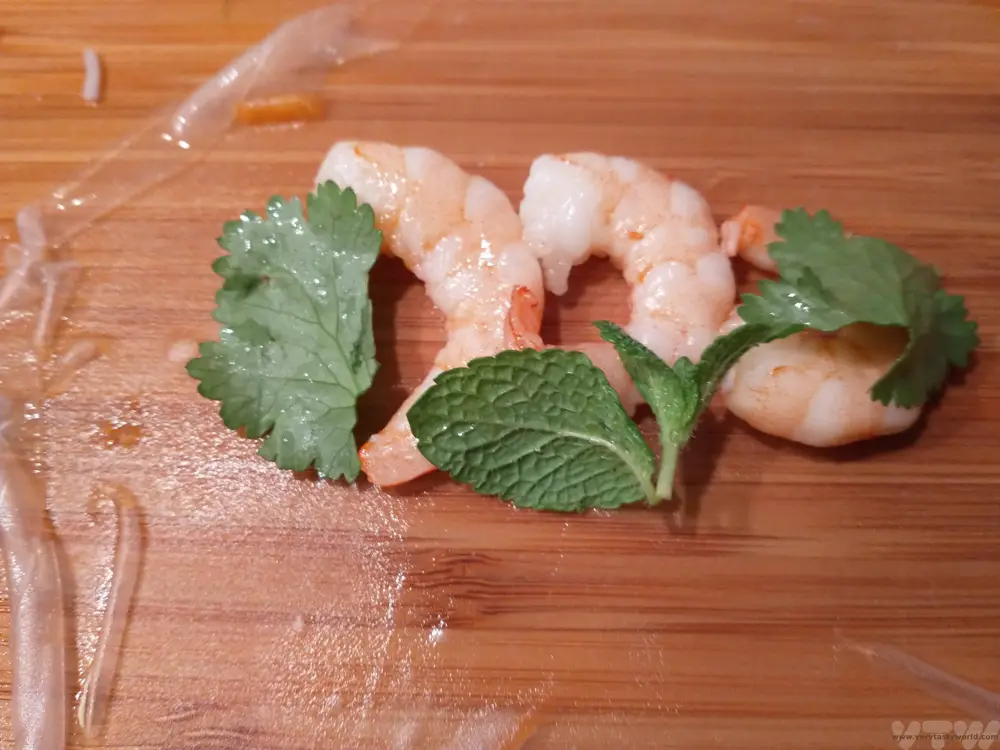
Add a small handful of vermicelli, remembering that less is more – you don’t want to overstuff the rolls.
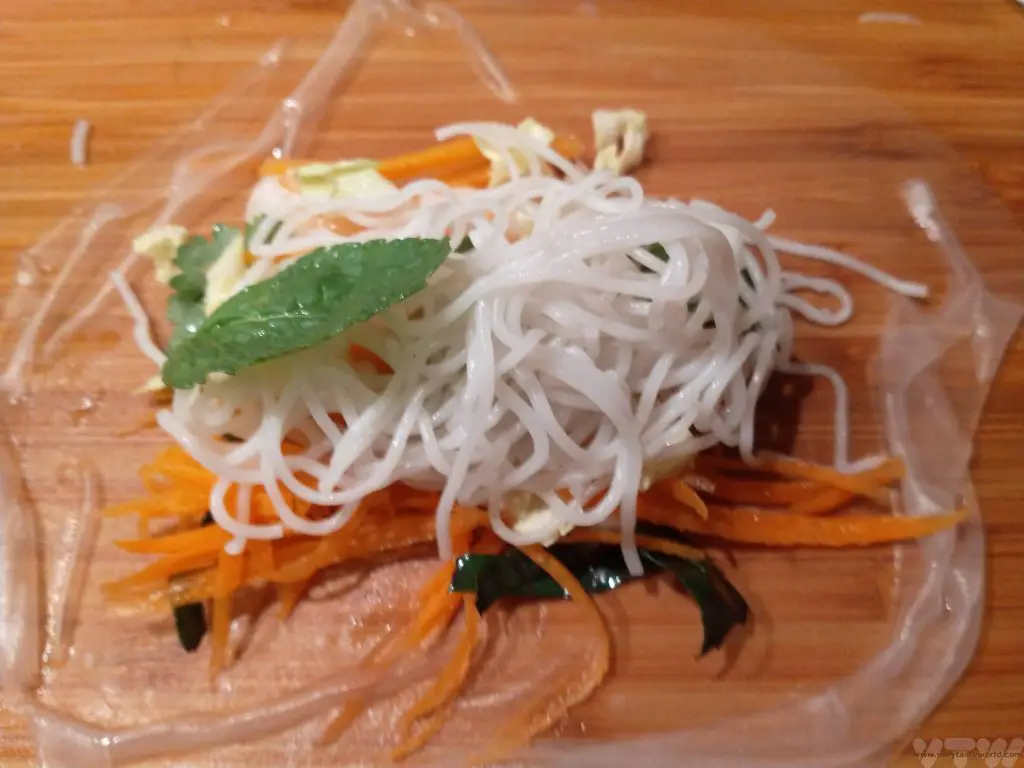
Variation: We also added some slices of home-made pickled garlic to some of the rolls to add an extra zingy flavour.
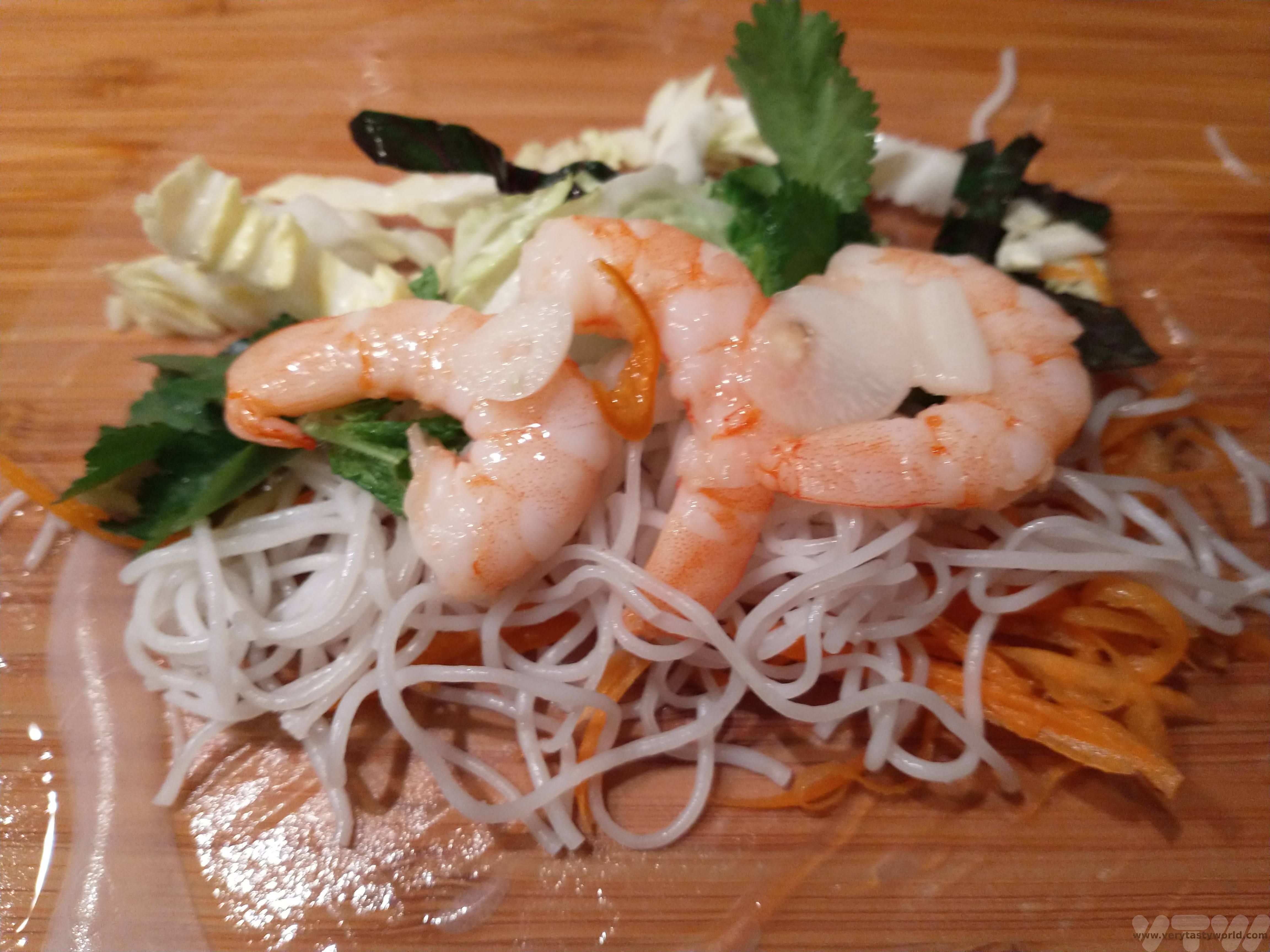
Now the tricky bit: the rolling of the rolls. It’s not as difficult as it might appear. Firstly, pull the filling together and fold the bottom of the paper over it, pressing gently into the filling so that the wrapping is tight.
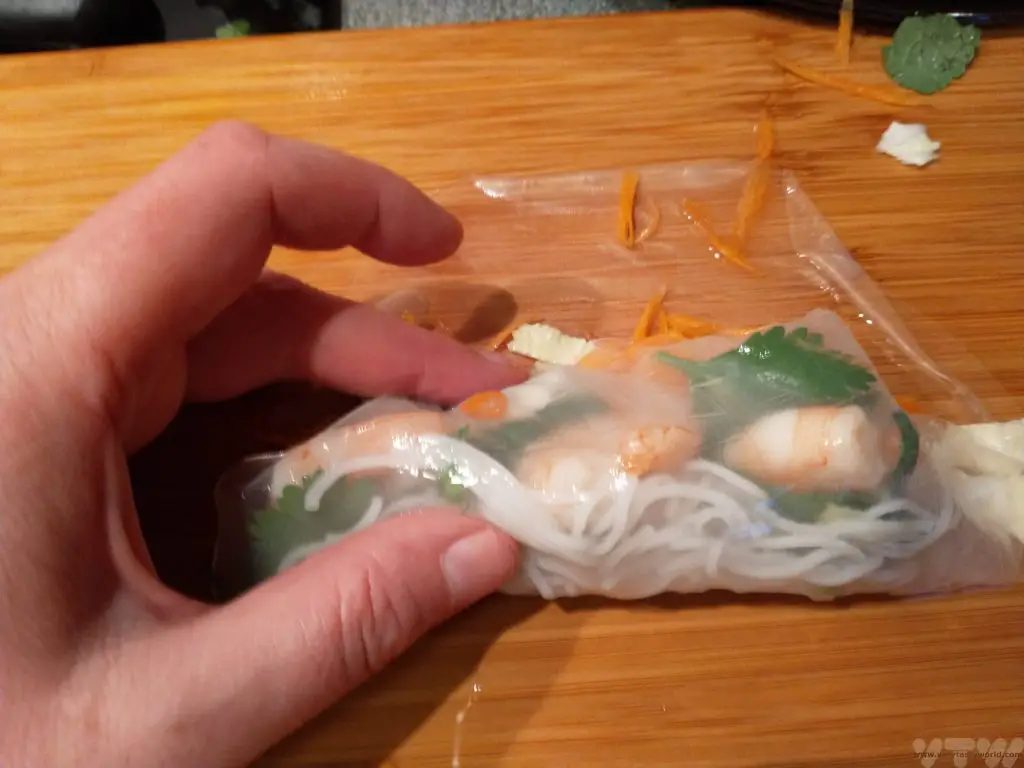
Next, fold each side in towards the centre of the wrapper to form a little parcel.
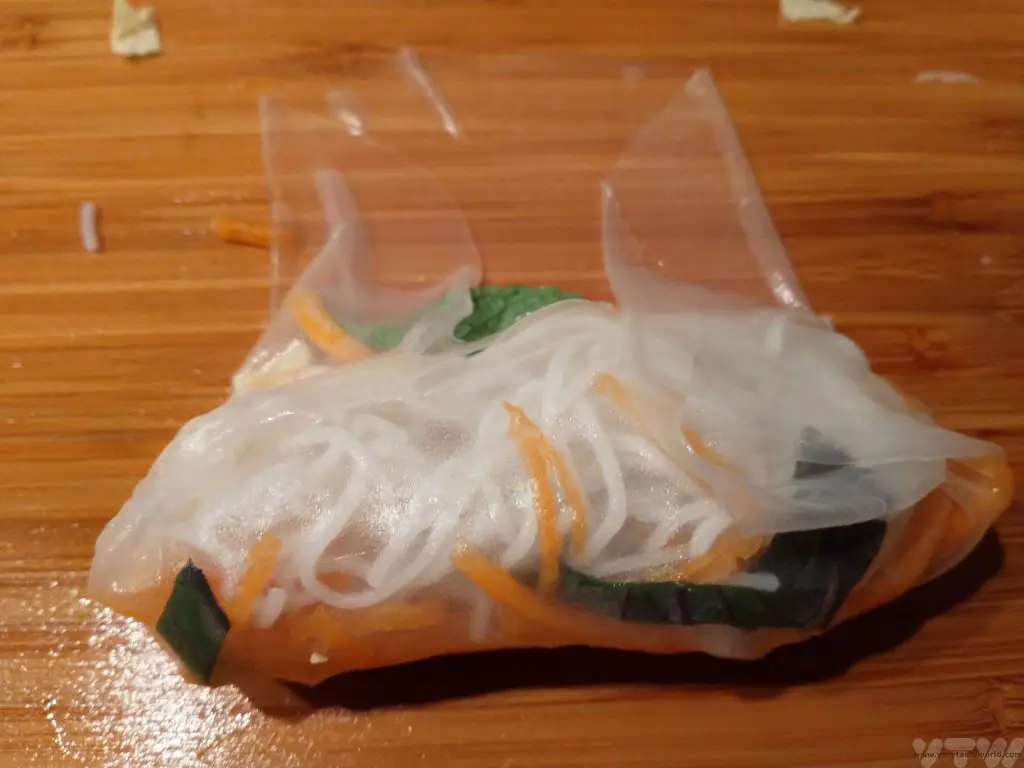
Then roll forwards to complete the spring roll, trying to keep the filling inside as tight as possible. The paper is soft so will stick at the end easily. When the rolling is completed, keep the seam on the underside which will also help it stick.
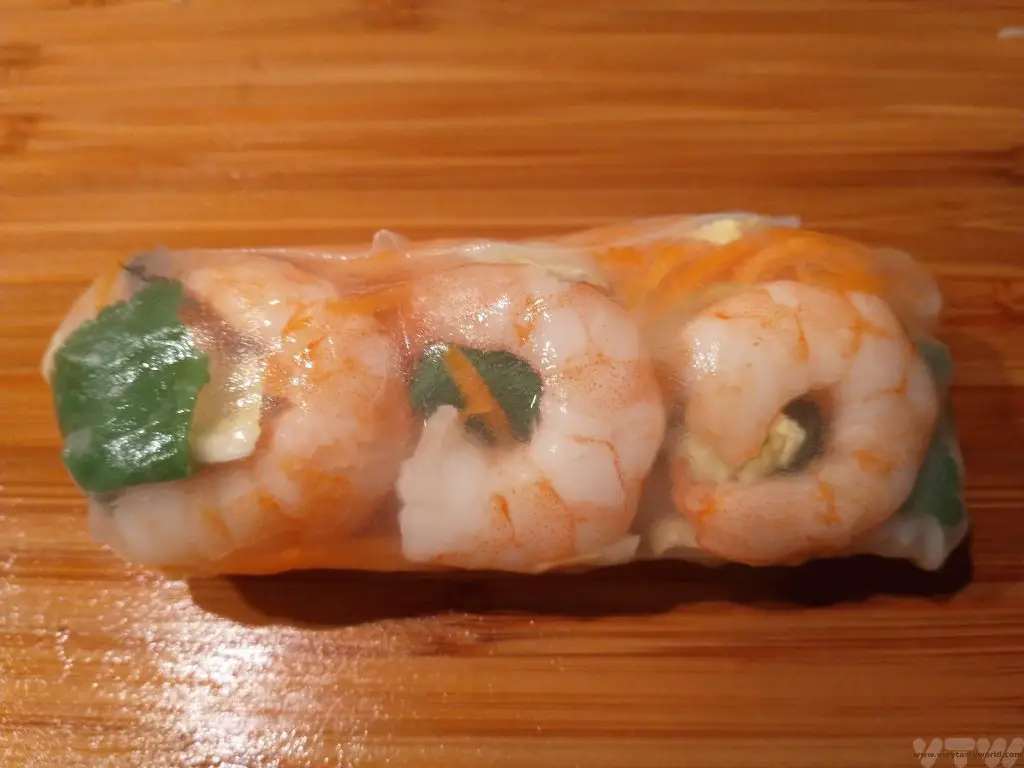
There are a variety of dipping sauces. A popular one is hoisin and crushed peanuts but we made a sweet chilli dipping sauce.
We used sweet chilli sauce, half a lime and a splash of fish sauce to give us that characteristic sweet, sour, salt and spice flavour. Just mix the ingredients together in a bowl. Then it was simply a case of serving the rolls, dipping and enjoying.
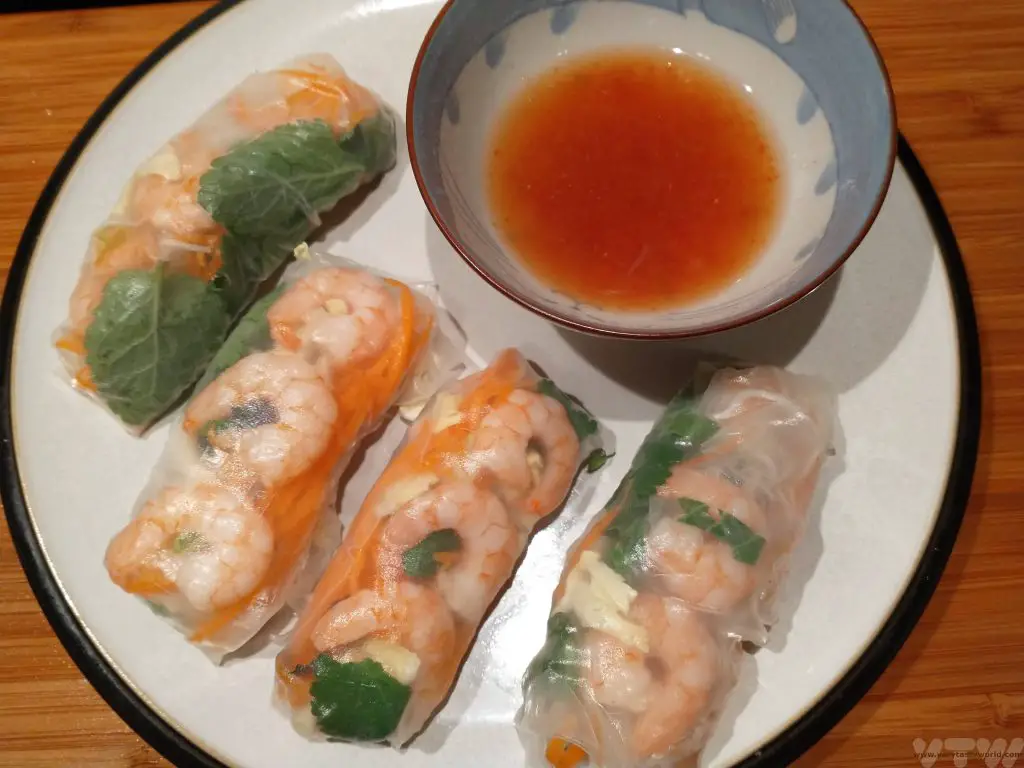
How to make Vietnamese spring rolls summer rolls
These are some of the tools and ingredients we used to make the summer rolls:
Please note that this post contains affiliate links. If you click the link and decide to make a purchase we will earn a small commission, at no cost to you, which helps towards running this site.

- A One Day Hanoi Itinerary
- Mekong Meanderings
- A Chiang Rai Temple and A Country Retreat
- A Chiang Mai Tour in Northern Thailand
- Sunrise at Angkor Wat and Other Temples
- Mekong Delta River Cruise in Vietnam

- RECIPE Oyakodon Donburi
- Zero Waste Recipes Before Your Holiday
- RECIPE: Vegetable Biryani Tamil Nadu Style
- RECIPE: Vegan Wild Garlic Pesto
- Recipe: Venetian Pasta Sauce
- RECIPE: Biryani Raita Recipe
- RECIPE: How to Make Costa Rica’s Gallo Pinto
- Recipe: Japanese Simmered Pork Belly – Buta no Kakuni
- RECIPE: How to Make Umeboshi
RECIPE: Vietnamese Pickled Garlic
We were in our favourite local Vietnamese restaurant recently and, while eating a delicious bowl of Bún Bò Chân Giò Huế – Beef, Pork Hock, Meat Balls in a vermicelli noodle soup (Bún means vermicelli and the dish originated in Huế, a coastal city in central Vietnam that used to be its capital), the restaurant staff brought out a jar containing pickled garlic to be used as a condiment. It was delicious – it added another dimension to the dish – a zap of sour garlic with just a hint of spice from the chilli infused vinegar. It’s a really popular condiment and apparently some of the restaurant’s customers will devour the whole jar when it’s brought to the table. We figured it probably wasn’t too difficult to make ourselves so we did some experimenting and, indeed, it’s a really easy recipe.
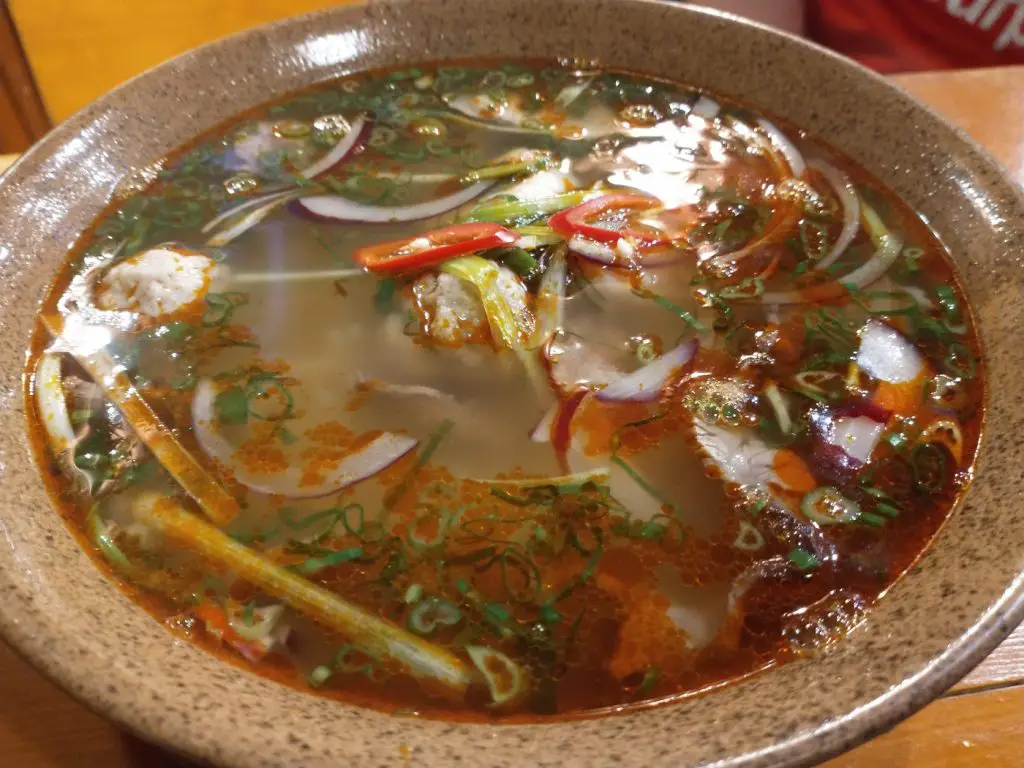
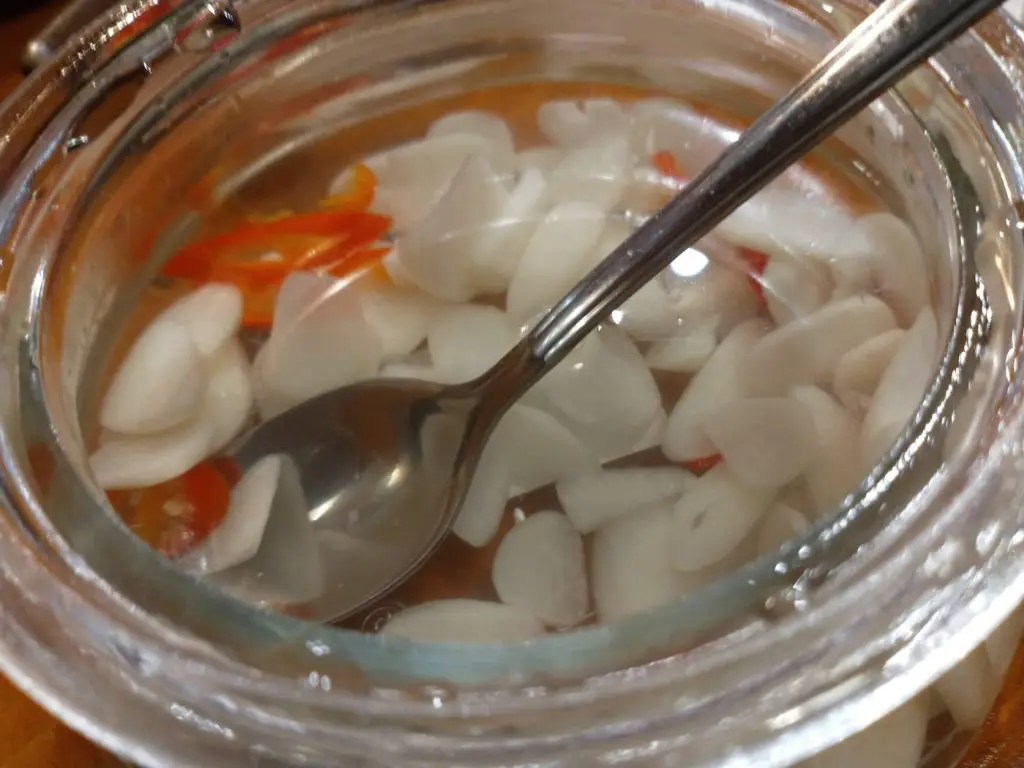
We had grown a bunch of garlic earlier in the year – planted in the late autumn we harvested it mid-summer. We also have a habit of keeping empty jars for preserving purposes, so had most of the ingredients and equipment to hand. It’s very flexible to make and the quantities in the recipe really depend on the size of your container. You will need a clean empty jar – you can use any old jar. Just wash it out thoroughly and fill it with boiling water, which will make sure it’s clean enough to store pickles, then let it cool down. Our jar was around 300 ml capacity.
Vietnamese Pickled Garlic Recipe
Ingredients
Several bulbs of garlic (the quantity will depend on how large the bulbs are and how finely you wish to slice it)
Two red chillies
White vinegar (you can use rice vinegar if you are feeling decadent but the garlic has a strong flavour and we feel it would dominate the subtle flavour of the rice vinegar)
2tsp white sugar
1/2 tsp salt.
Method
Peeling the garlic is the most time-consuming part of this job. Garlic is one of the stickiest substances known to human kind but you don’t realise this until you start peeling lots of it.
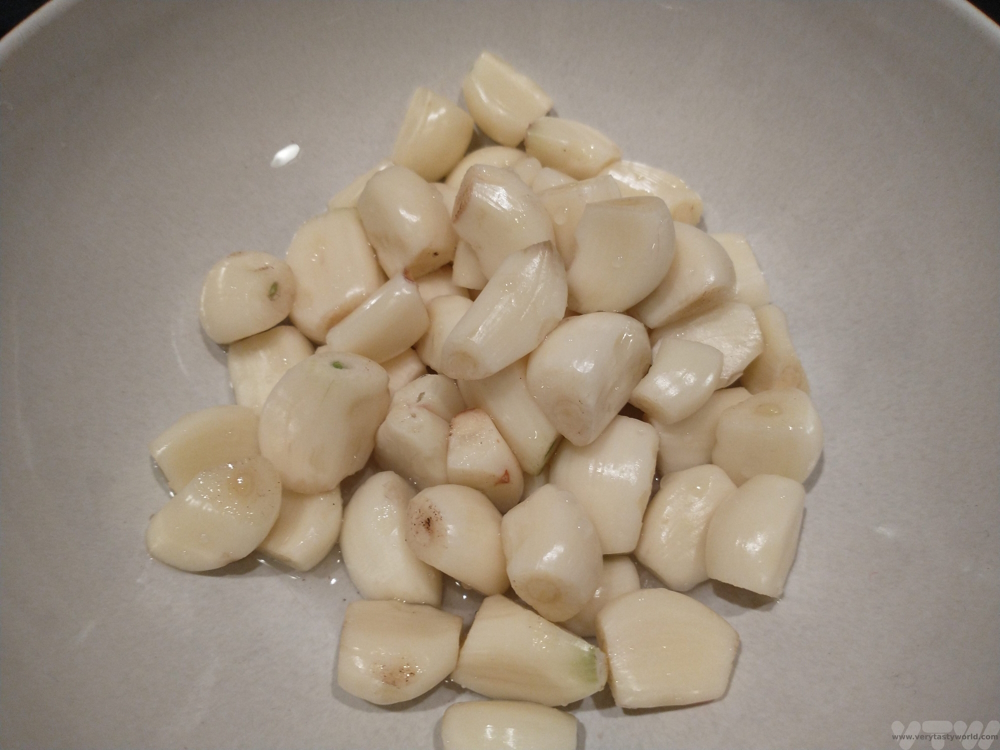
Once peeled, you have a number of choices. You can keep the garlic cloves whole, you can slice them with a knife or you can slice them wafer-thin using a mandolin. We prefer the very thinly sliced garlic because when you add it as a condiment the flavour enhances rather than dominates the food.
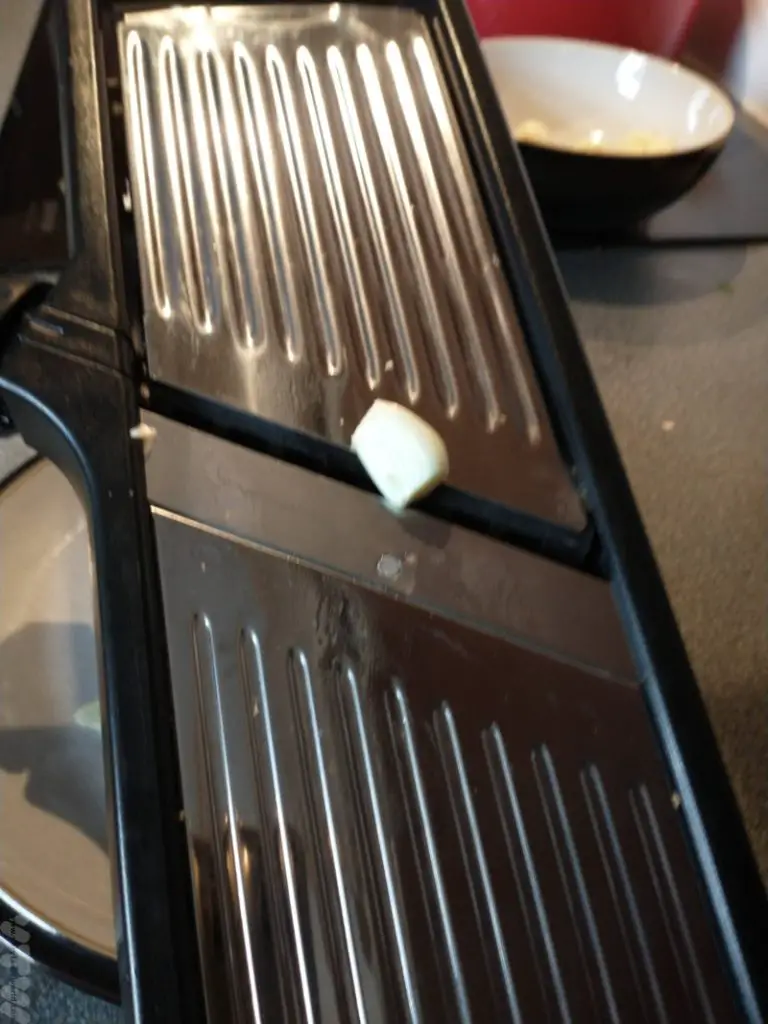
If using a mandolin, be really careful. Being clumsy cooks, we use a knife glove which means that you can slice the garlic very close to the blade without risking sliced fingers. Bloody garlic pickle is not a good idea.
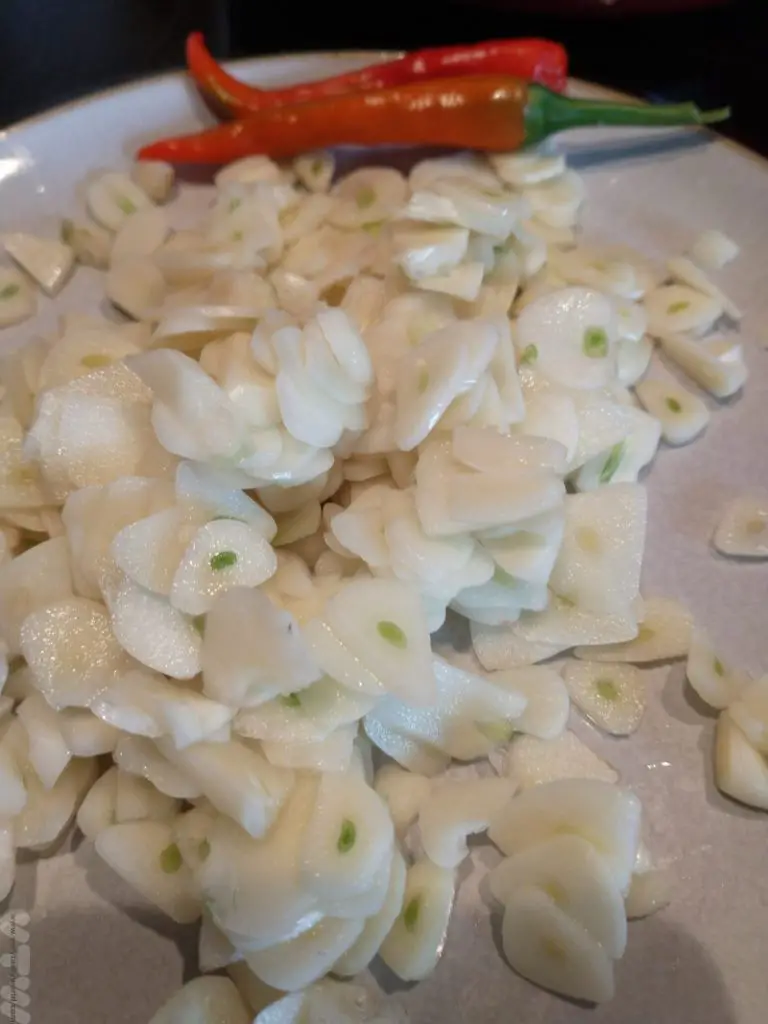
Place the sliced garlic, slice the chillies and add everything to the jar.
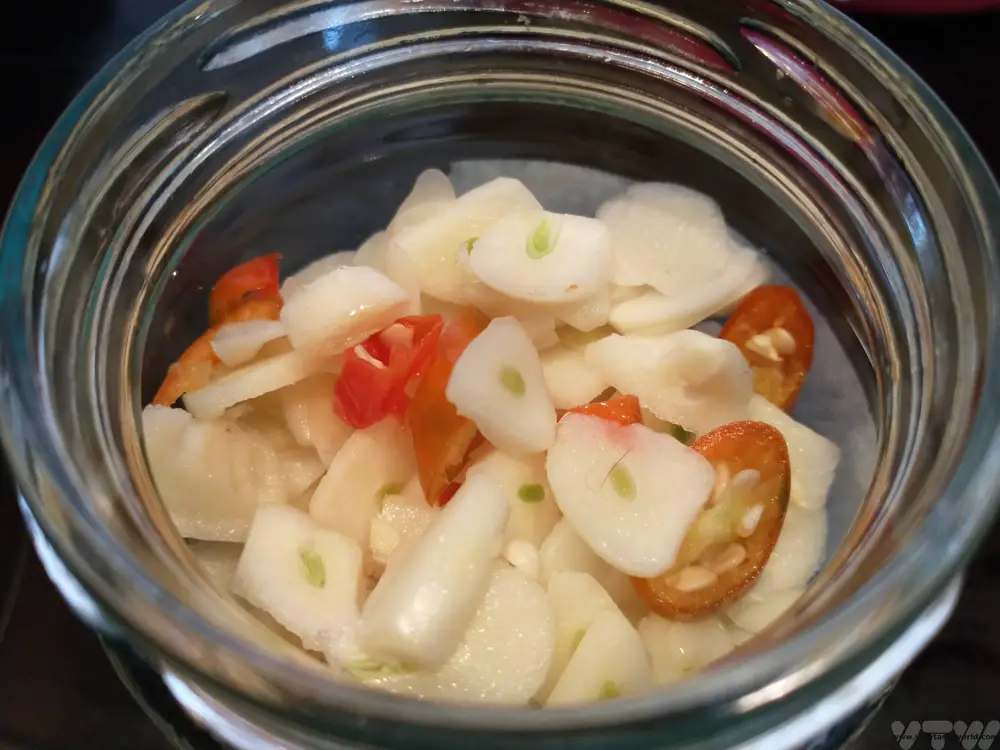
Top up with the vinegar. Add the sugar and salt.
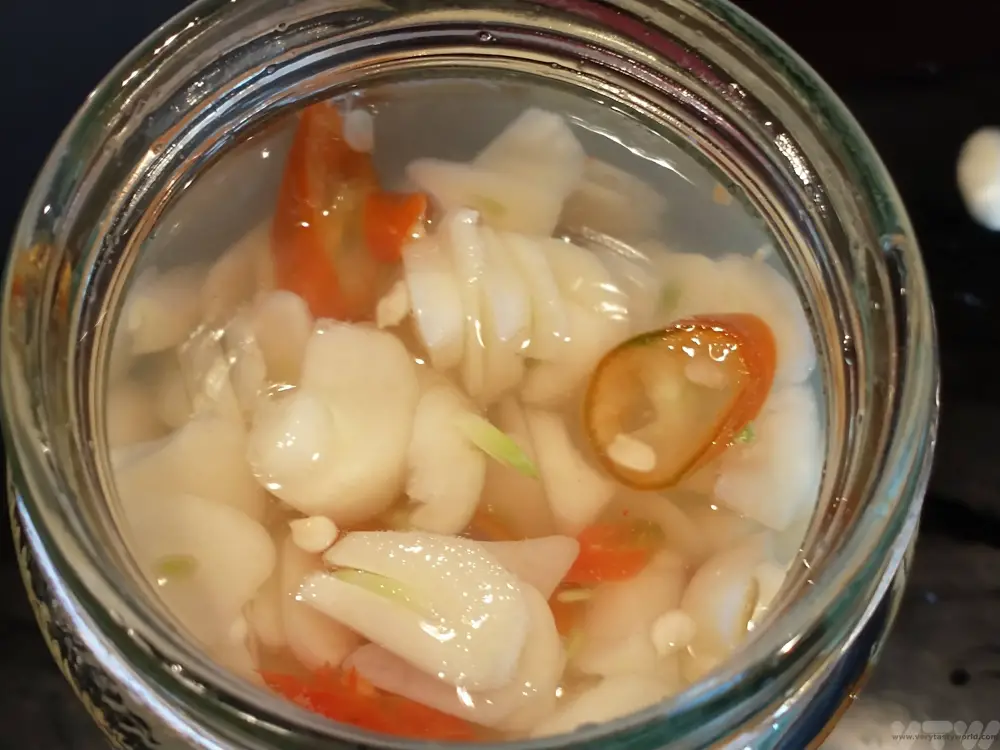
Shake the jar.
Leave to infuse for at least a week. The pickled garlic will last for months… but is likely to get scoffed much sooner. Also, because the vinegar is acidic you can add additional sliced garlic or another chilli as you use up the existing condiment.
Although this dish goes really well with Phở and Bún Huế dishes, we’ve also used it to add a bit of zing to Vietnamese summer rolls.
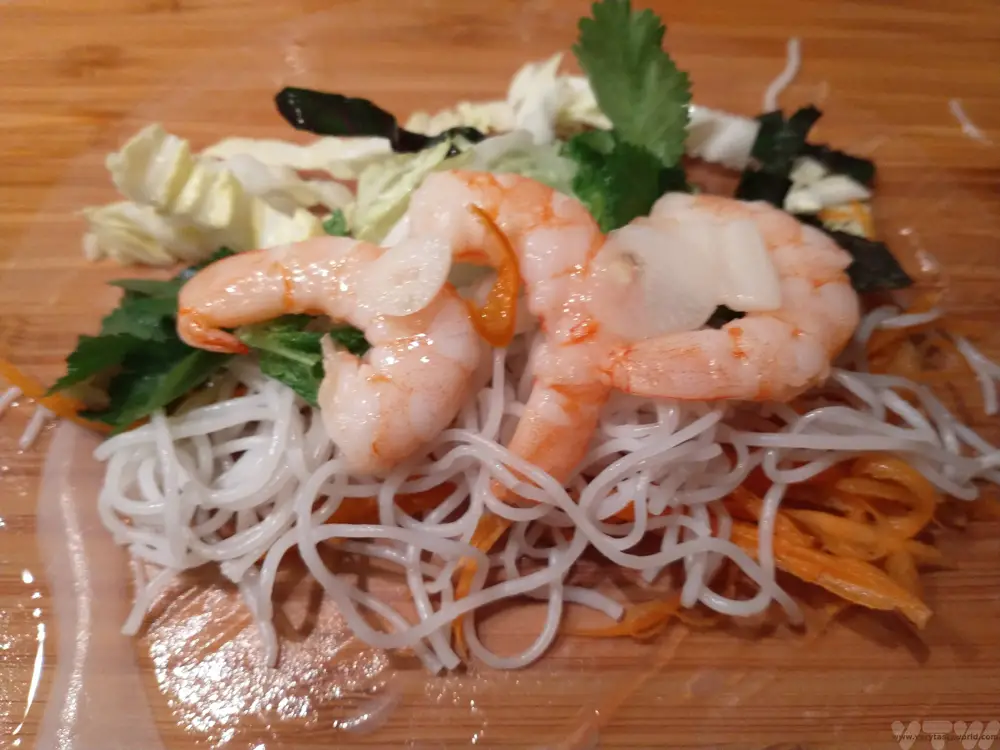

And this condiment isn’t just for Vietnamese cookery. We use this pickle to garnish soups – this is a home-made vegetable soup.
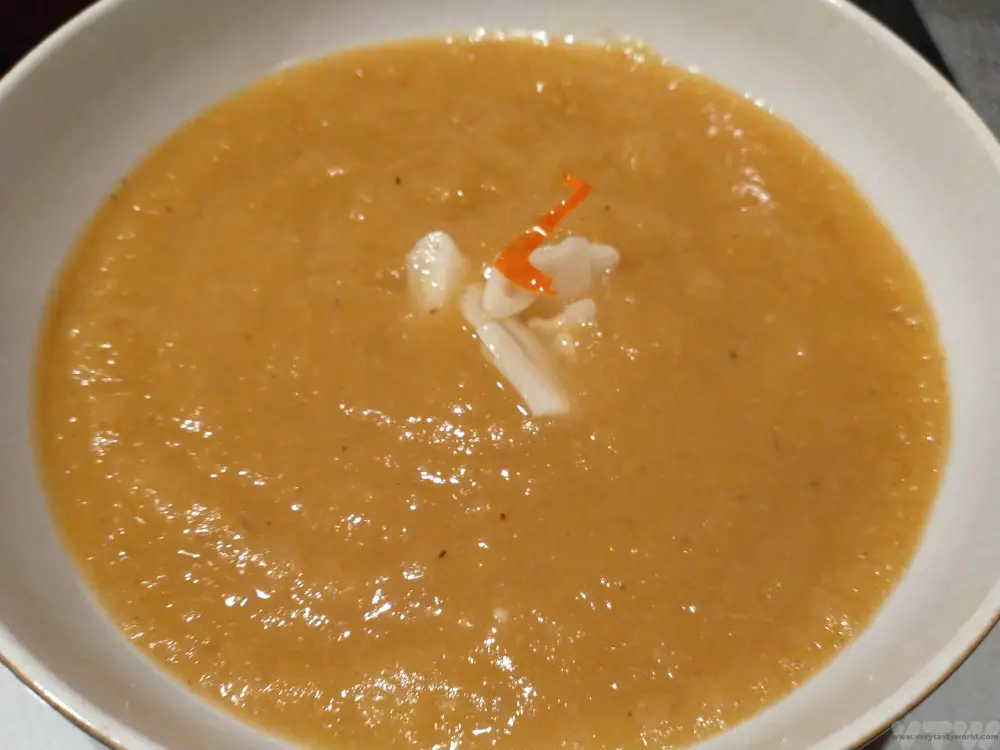
Or it can be used in a meat dish – these are glazed pork belly bites. Just a slice or two atop really cuts through the richness of the meat.
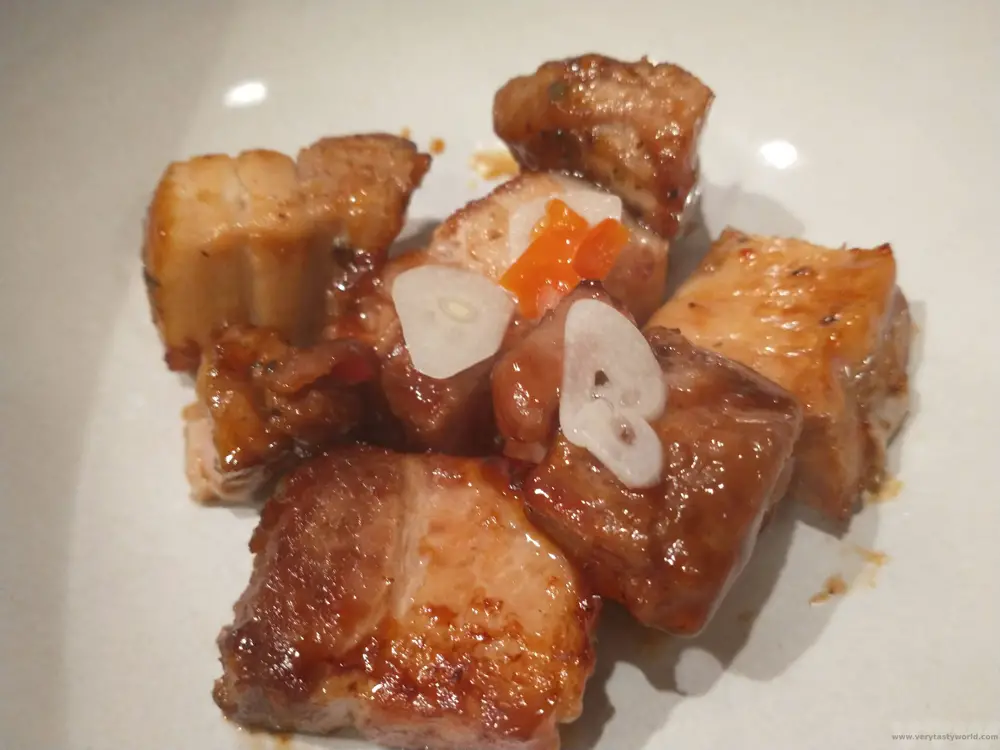
Related Posts You May Enjoy

- RECIPE Oyakodon Donburi
- Zero Waste Recipes Before Your Holiday
- RECIPE: Vegetable Biryani Tamil Nadu Style
- RECIPE: Vegan Wild Garlic Pesto
- Recipe: Venetian Pasta Sauce
- RECIPE: Biryani Raita Recipe
- RECIPE: How to Make Costa Rica’s Gallo Pinto
- Recipe: Japanese Simmered Pork Belly – Buta no Kakuni
- RECIPE: How to Make Umeboshi
Please note that this post contains some affiliate links. If you click the link and decide to make a purchase we will earn a small commission, at no cost to you, which helps towards running this site.

World’s Best Breakfasts -Breakfast of Champions!
….And Why It’s Often Okay to Go Off-Menu When Travelling
Many years ago we were excitedly choosing all sorts of delicacies at the breakfast buffet at our hotel in Yerevan, Armenia, when another guest glanced at our plates, shrivelled their noses in a very patronising manner and exclaimed, “Ugh! Salad? For breakfast?” It’s widely considered to be most important meal of the day but so many people seem to be set in their ways when it comes to eating a hearty breakfast. So much that hotels all over the world seem to offer pretty much the same fare. Western visitors are often offered fried food such as bacon, sausage and eggs with bread-based accompaniments and Eastern visitors are usually offered rice or noodle dishes. All these dishes are generally familiar to the tourist and often don’t reflect the traditional breakfasts of the country they are visiting. Here are some of the world’s best breakfasts.
Maybe it’s because people don’t feel so adventurous first thing in the morning, and that’s fair enough, but they may be missing out. Thing is, we’re British and can have bacon and eggs any time we like. (Although, to be honest, we haven’t cooked a fry-up for years as it’s quite a lot of effort.) We’d much rather eat a typical breakfast using local ingredients from the country that we are visiting.
It’s quite common for hotels to ask their guests to pre-order breakfast. It makes sense, they know what they need to order in beforehand and this can help minimise food waste. There is usually a form with tick boxes and you can choose from a variety of typical breakfast offerings. But if you do want to eat like a local, we’ve learned that many hotel restaurants are happy to cook you a regional breakfast. We’ve discovered that very often it’s absolutely okay to go off menu.
It all started in Uganda when we breakfasted at a lodge with a local guide. We were eating standard fare but our curiosity was piqued when something entirely different was brought out for him. On asking, we learned that it was a rolex – a chapati with a layer of omelette on top, then rolled into a spiral cylinder, perfect for munching on. So the next day we asked the lodge staff if it would be possible for us to have a rolex for brekkie and they were happy to oblige. It’s great – tasty and filling – a good start to the day.
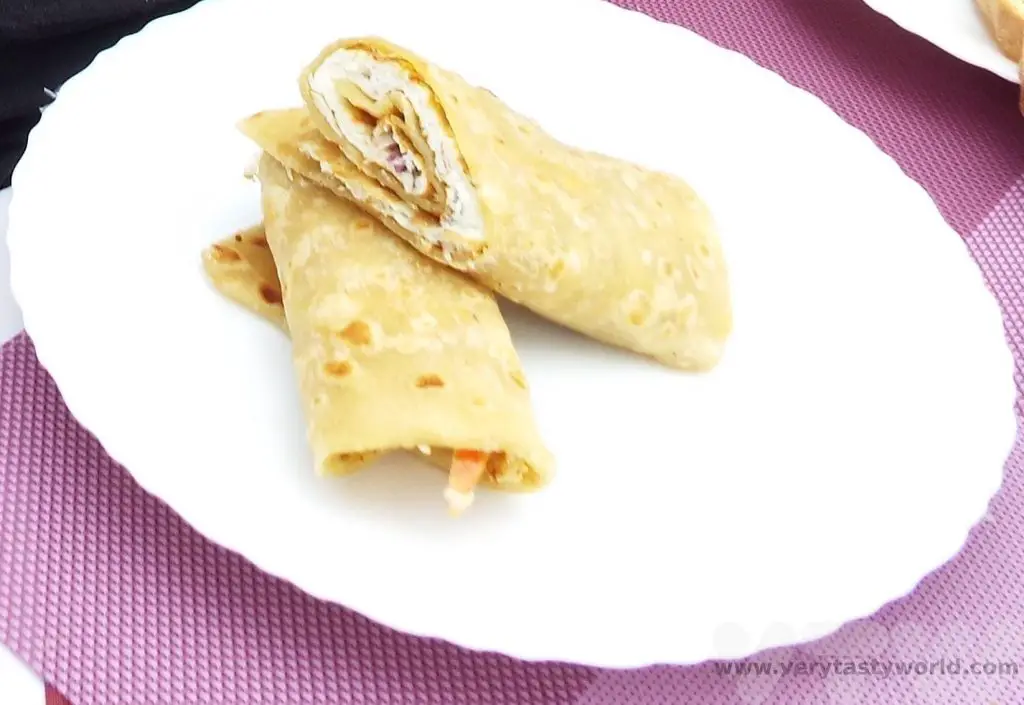
In Nepal we were given a standard pre-order form to complete (eggs, bacon, sausage, toast…) to pre-order breakfast for the following morning. We politely asked whether it was possible to have a local breakfast instead. We didn’t specify any dish – just asked for local food. They were delighted. The following morning we were served a marsala omelette accompanied by a joyous curry and roti with home-made yoghurt. It was delicious.
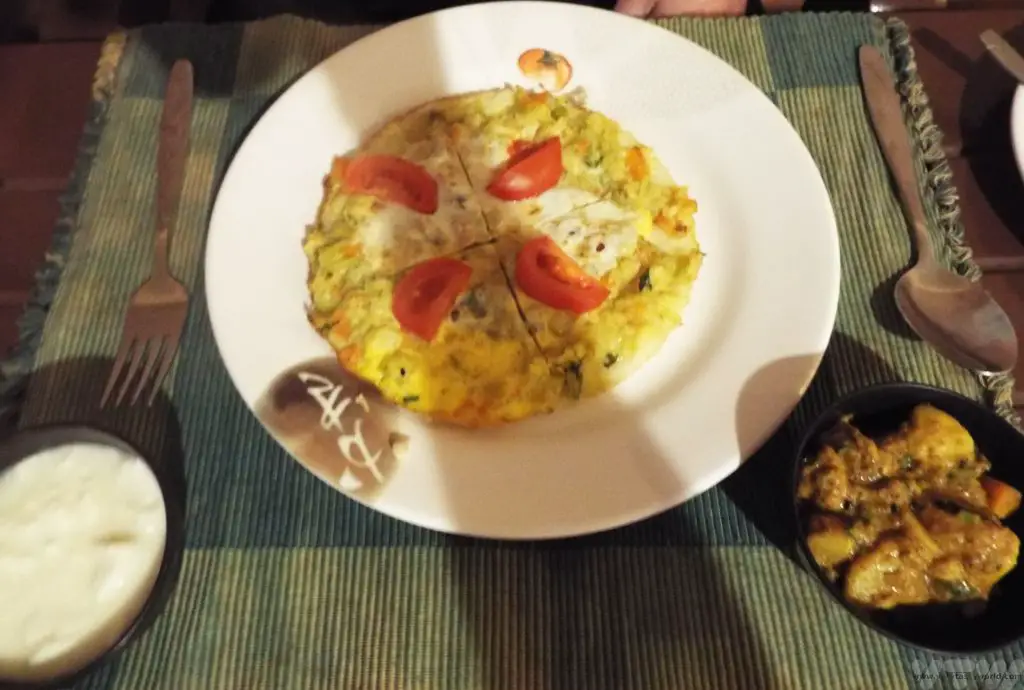
One of the world’s best breakfasts is gallo pinto from Costa Rica. It’s so popular it is often eaten for lunch and dinner as well. Which is just as well because it tastes great and is also really healthy. It comprises rice and beans and is usually accompanied by a fried egg at breakfast. Other accompaniments to start the morning include sausage, fried potatoes and some salad.
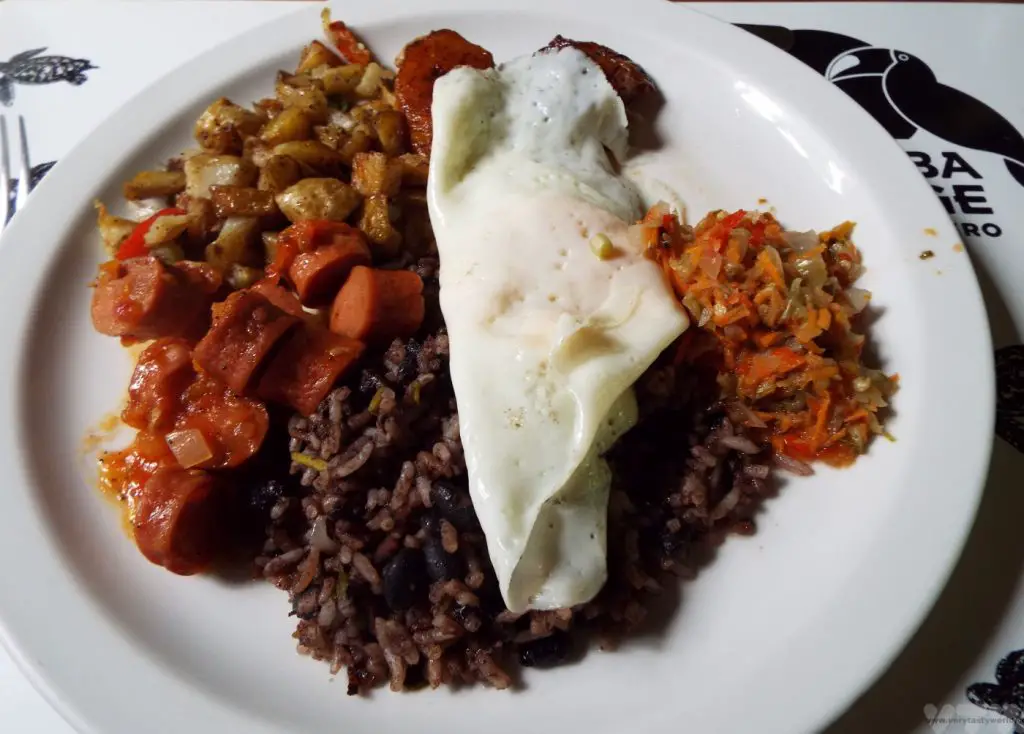
A dosa for breakfast in South India is an absolute joy. This is a pancake traditionally made from rice and dal (lentils) which are ground to form a batter and then fermented. The batter is cooked on a hot plate to form a large pancake and served with chutney – coriander, coconut and tomato are particularly popular.
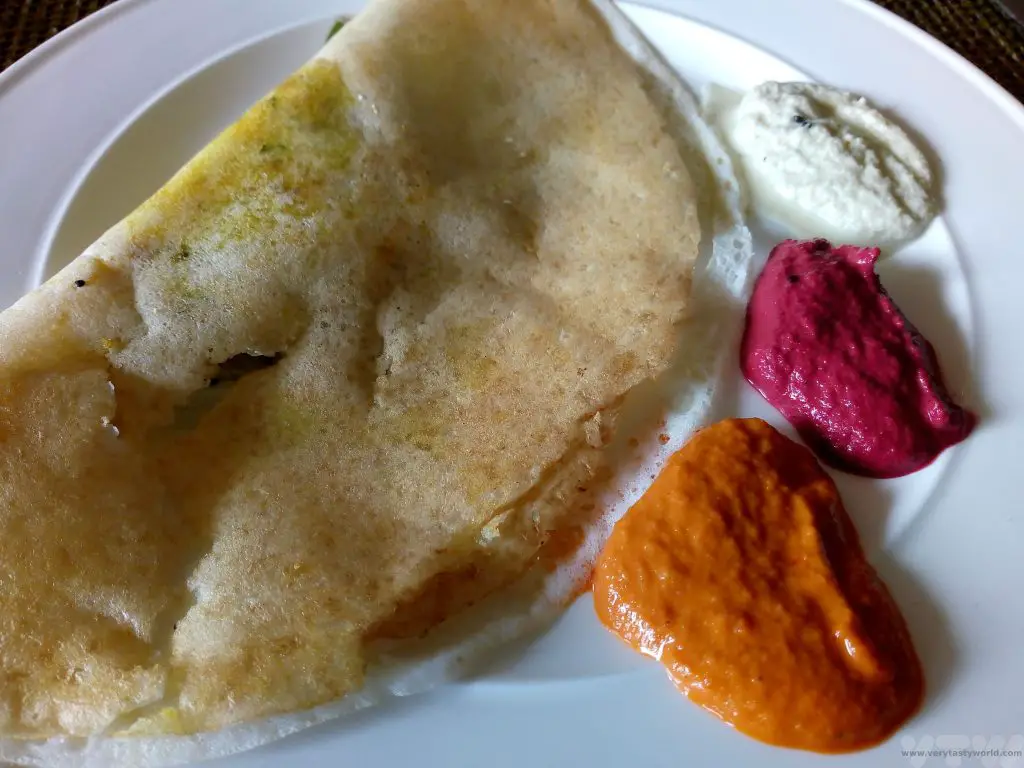
In Vietnam breakfast usually took a buffet form but often there were chefs on-hand to cook some food to order. We were always offered Pho – a tangle of noodles, freshly cooked and served in a yummy broth, topped with meat and vegetables. You pick up a side plate and add herbs, chilli, limes and other delicious items so that you can create your own personalised taste sensation. The liquid of the broth also ensured that we were thoroughly hydrated for the day ahead.
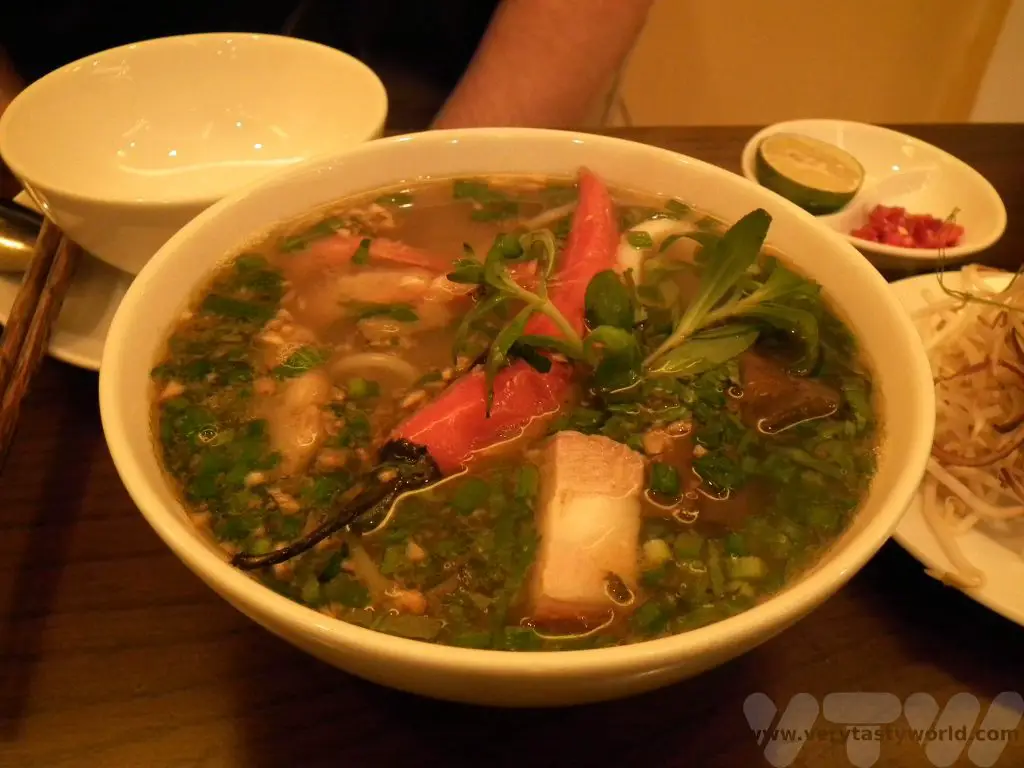
Japan also offers some of the world’s best breakfasts. A Japanese brekkie often comprises grilled fish, vegetables and pickles, maybe with tofu, dumpling and an omelette.
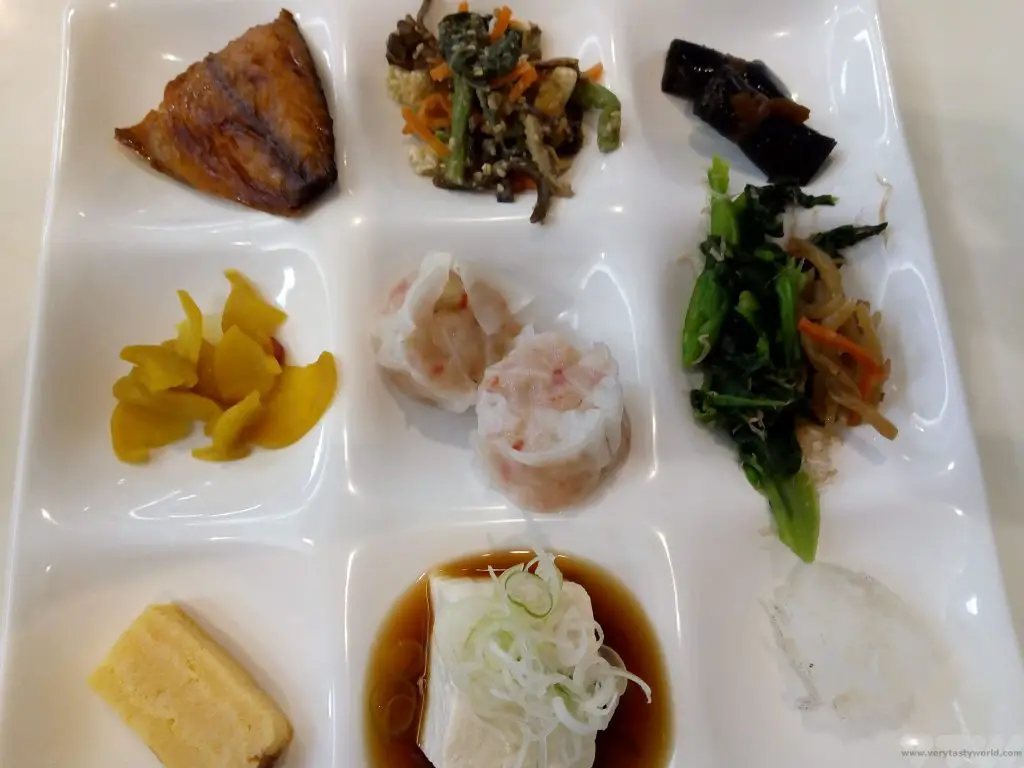
These are accompanied with a bowl of rice, into which you could crack a raw egg mixed with shoyu (soy sauce) – the egg sort of cooks in the heat of the rice – or that famous smelly fermented soybean concoction, natto, maybe with some sliced negi (similar to spring onion). Just grab a slice of nori (dried seaweed), place it over the rice, then using a pincer movement with your chopsticks grab a portion of rice with the nori. Scrumptious. (It’s worth noting that if you are at a breakfast buffet in Japan the eggs on offer may well be raw – be careful when cracking them.)
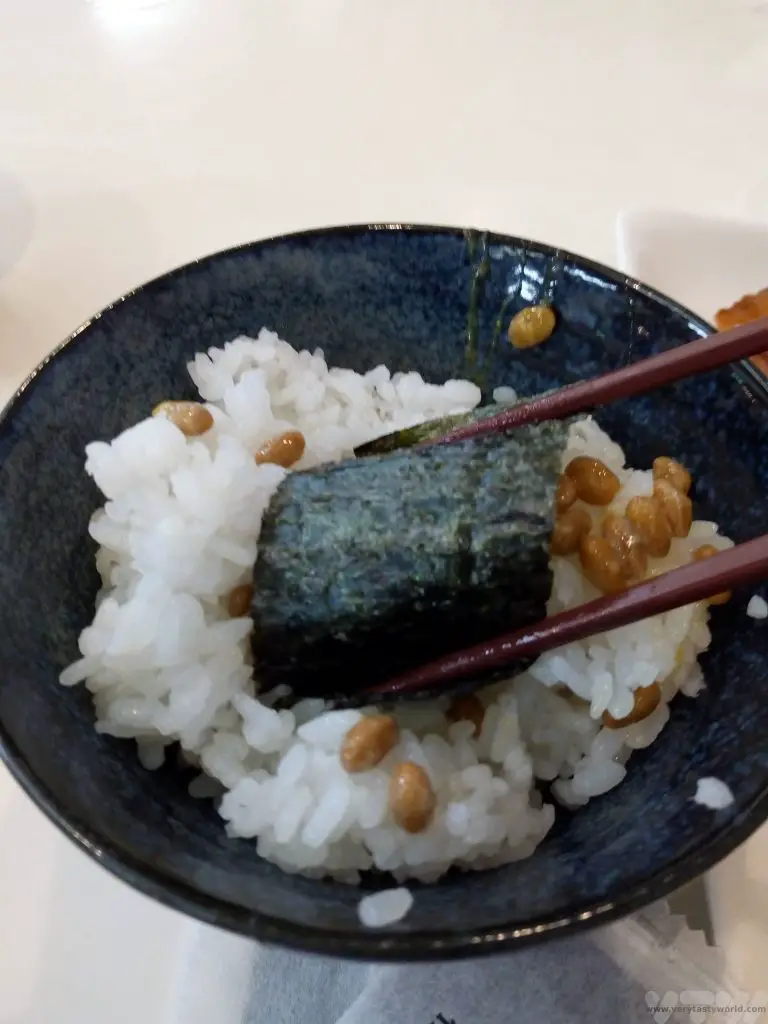
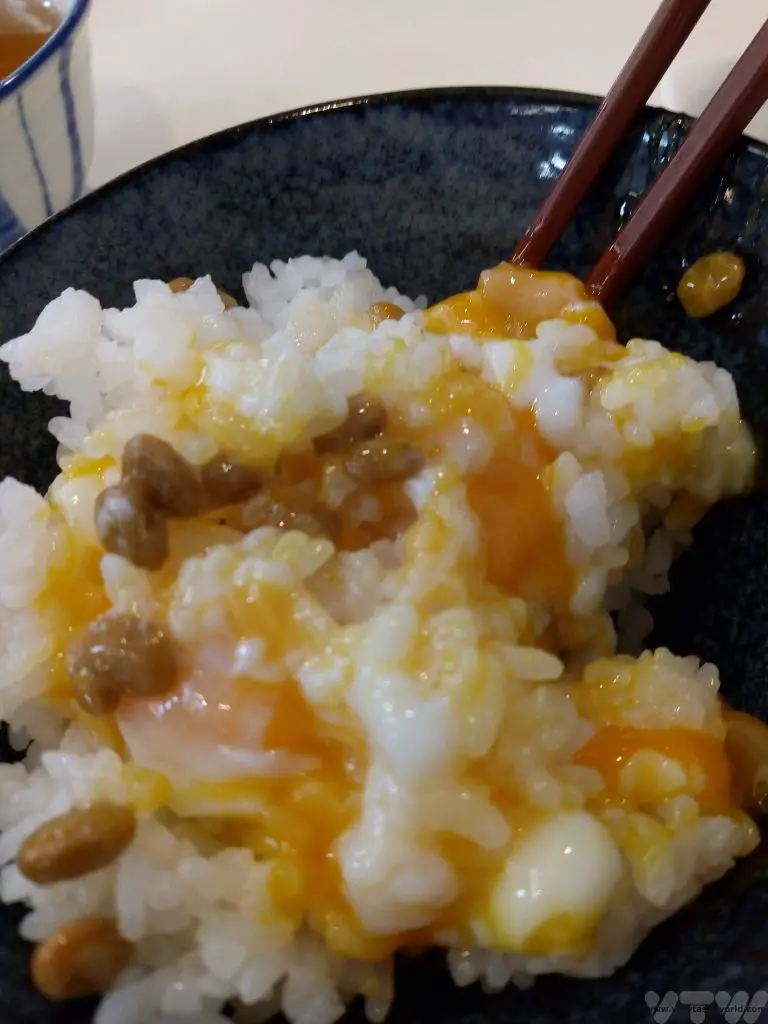
World’s Best Breakfasts – Back At Home
And, of course, whenever we are staying away from home in the UK, we’ll always have an honest-to-goodness fry-up. Sausage, bacon, egg (usually fried, poached or scrambled), black pudding, mushroom, tomato, beans and sometime a hash brown are the usual components.
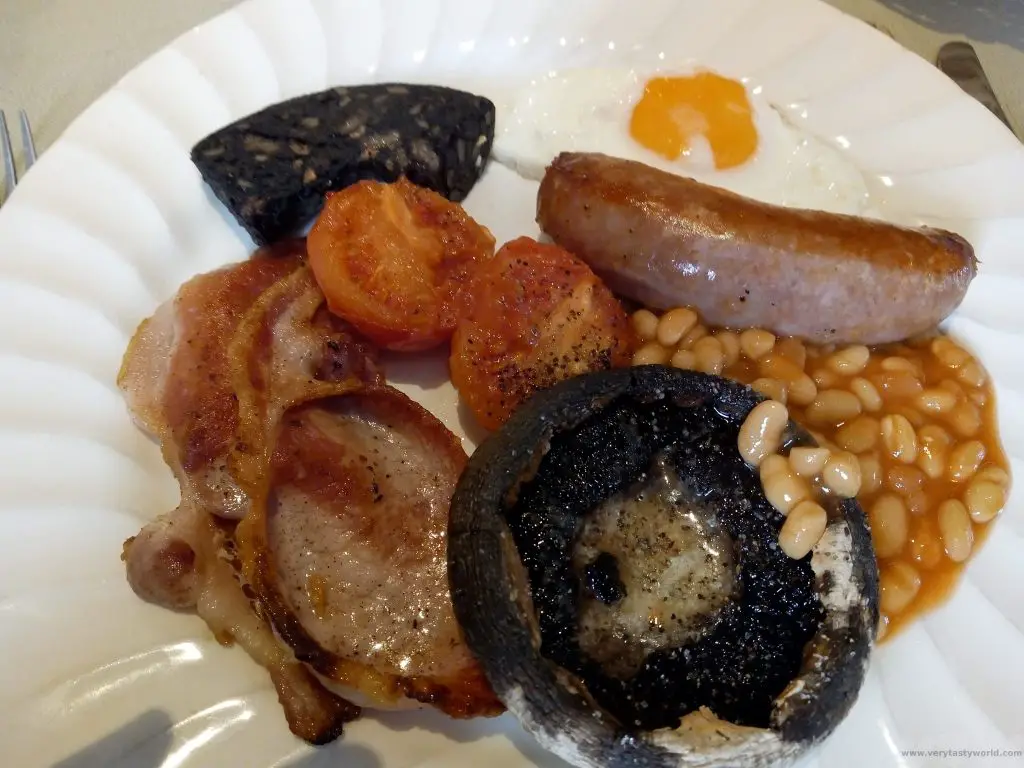
We recently discovered that the best possible place for a full English breakfast that we’ve ever eaten is actually in our home town. While many top breakfast establishments boast locally sourced food (which is, of course, delicious), The Gourmet Food Kitchen in Fargo Village, Coventry go one step further and actually cure their own bacon and make their own sausages and black pudding. And that’s just the start: The hash brown (never the most fabulous component of breakfasts) is a home-made bubble and squeak, a glorious blend of fried potato and cabbage. The beans have never seen a tin – they are home-made baked beans in a rich tomato sauce. Chef Tony even makes his own rich, tangy and utterly delicious brown sauce to accompany the feast.
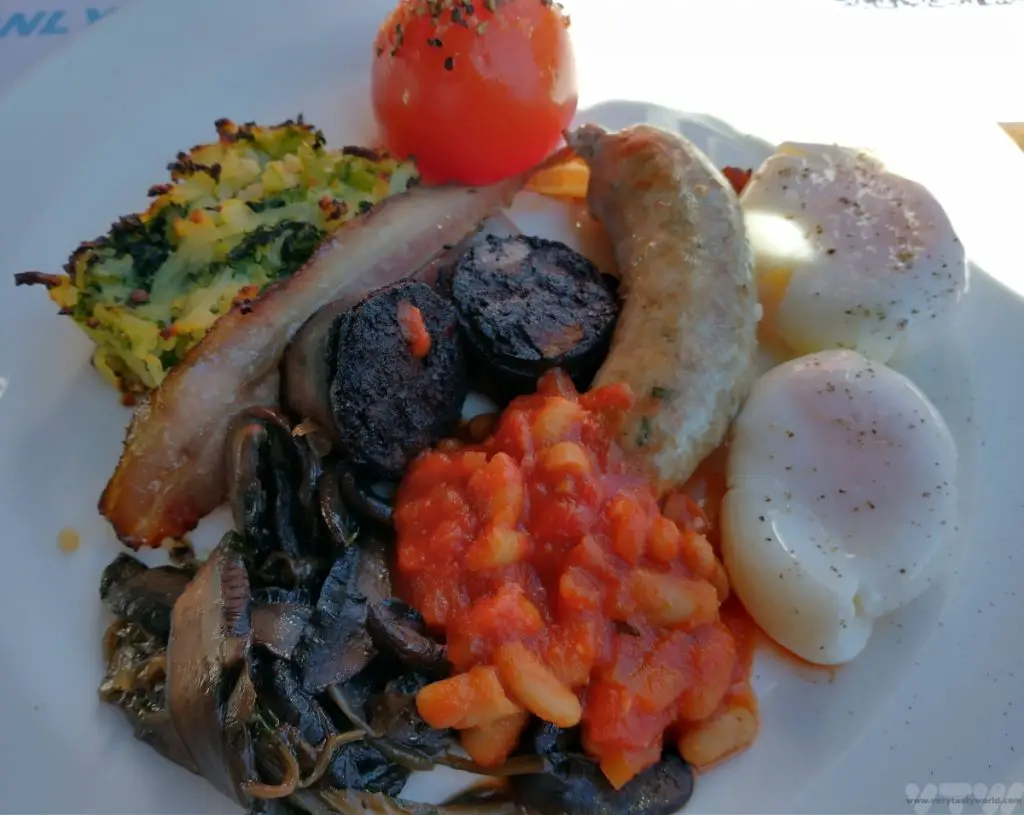
Related Posts You May Enjoy

RECIPE: How To Make Lao Larb
Lao larb, also known as moo larb, is the perfect dish for a hot summer’s day. It’s incredibly easy to make and really refreshing. It’s kind of a meat salad which hails from South East Asia; we first tried it in Lao , where it holds the status of national dish, but we have also eaten it in Thailand, and quickly became hooked. Even better, all the ingredients are really easy to find in our home country. There’s a tiny bit of preparation needed prior to assembling the dish, so worth thinking about making it ahead of time. The following recipe will feed four as a starter or two hungry people.
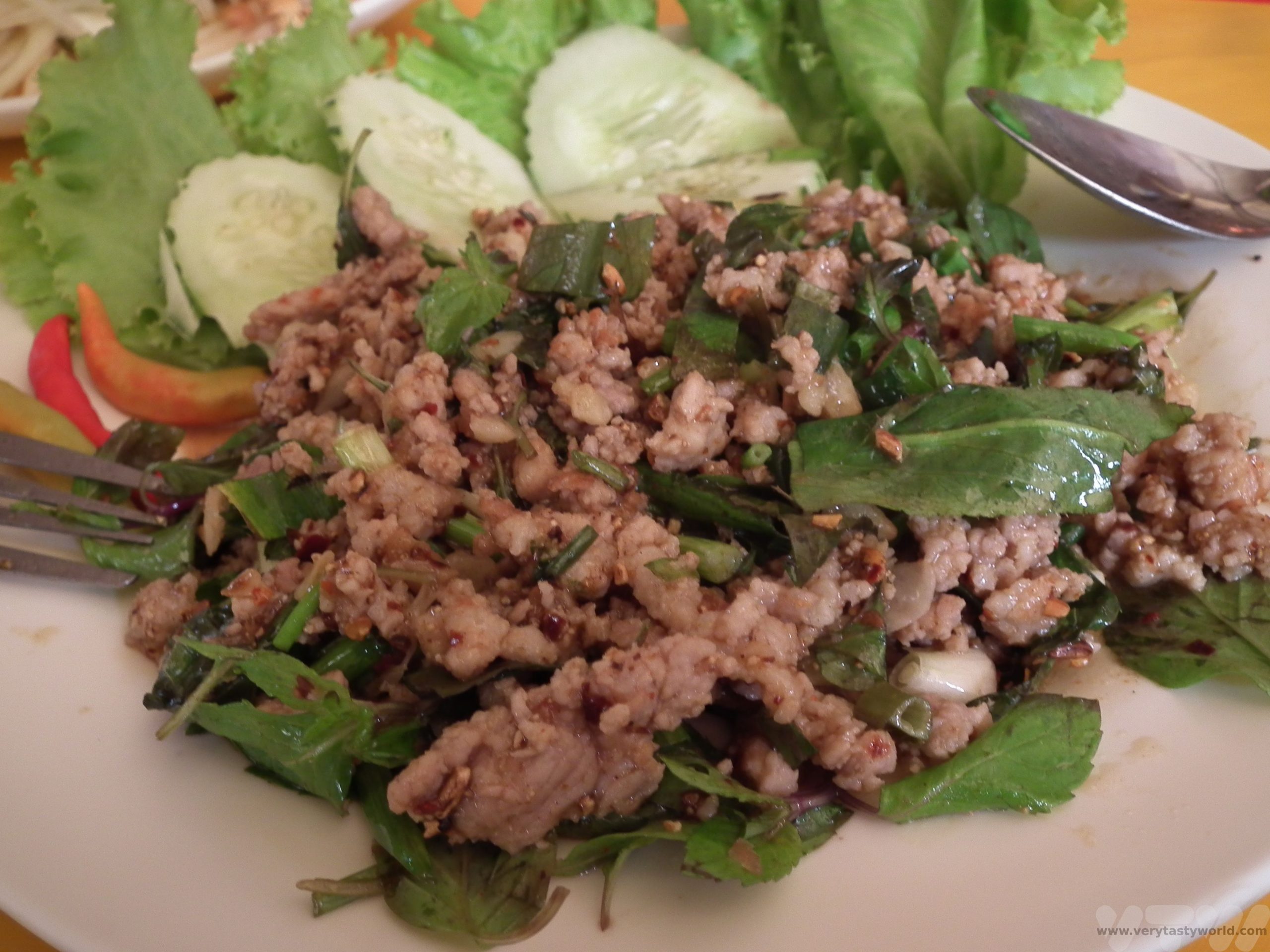
INGREDIENTS
300g pork mince. (The ‘moo’ of moo larb is pork.) Chicken mince also works really well and quorn mince or mushrooms can provides a vegetarian alternative. Lamb isn’t recommended as it’s quite fatty and the fat tends to congeal a little when it cools, which doesn’t provide a very nice texture.
1 large red onion (or 2 small)
Generous handful of fresh mint
Generous handful of fresh coriander
Freshly milled black pepper
1 or 2 juicy limes
Generous splash of fish sauce (vegetarians can use veggie fish sauce or a combination of soy sauce with a dash of vinegar) – around half a tablespoon
Optional: chilli flakes, toasted rice, teaspoon of sugar, Thai basil leaves for garnish
METHOD
You need to allow enough time for the mince to cook and cool before assembling the dish. It’s the perfect ‘make in advance’ dish.
Cook the mince. Pour a little oil into a pan and fry until the meat is cooked through. Allow it to cool.
Finely chop the onion, coriander and mint and add to the mince.
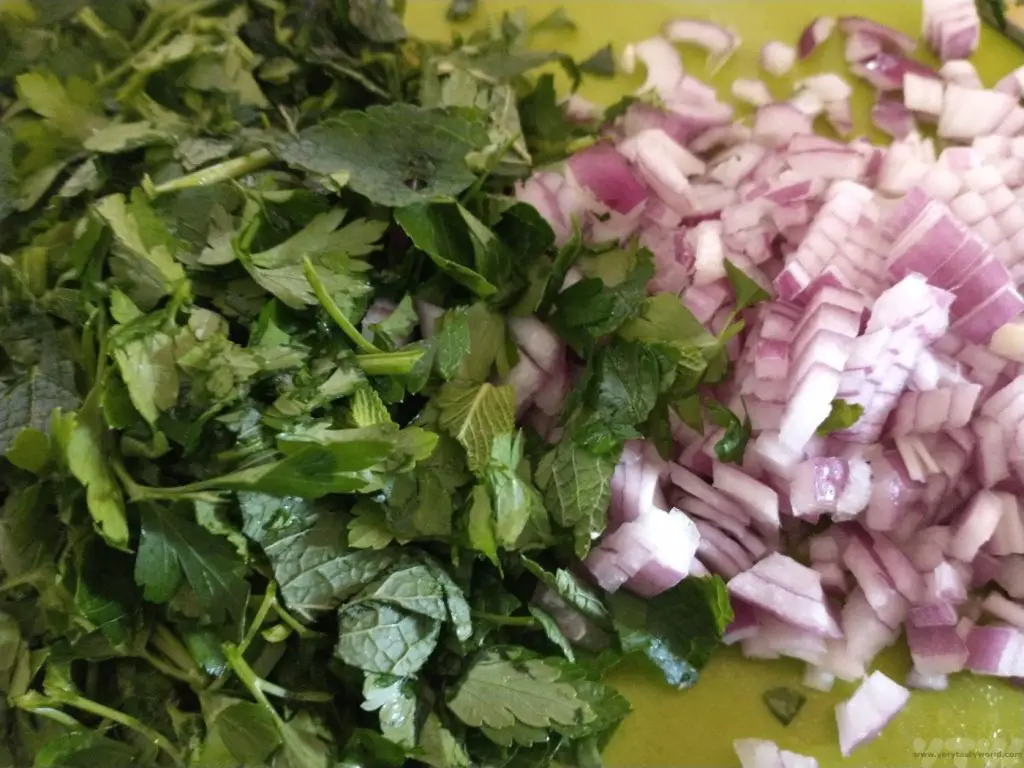
Add the fish sauce, lime juice and black pepper to taste. We really like coarsely ground black pepper so grind ours in a pestle and mortar. This is really where you can adapt the flavour to your personal taste.
Mix well. It’s fine to make in advance and let the flavours infuse.
Serve with steamed rice and a salad garnish.
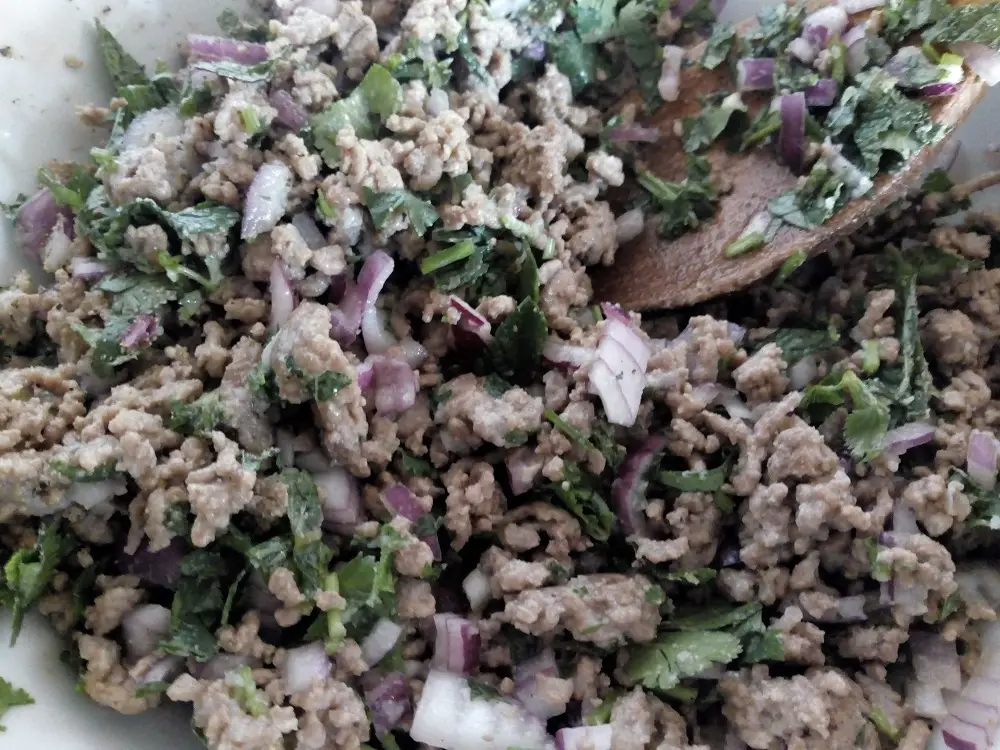
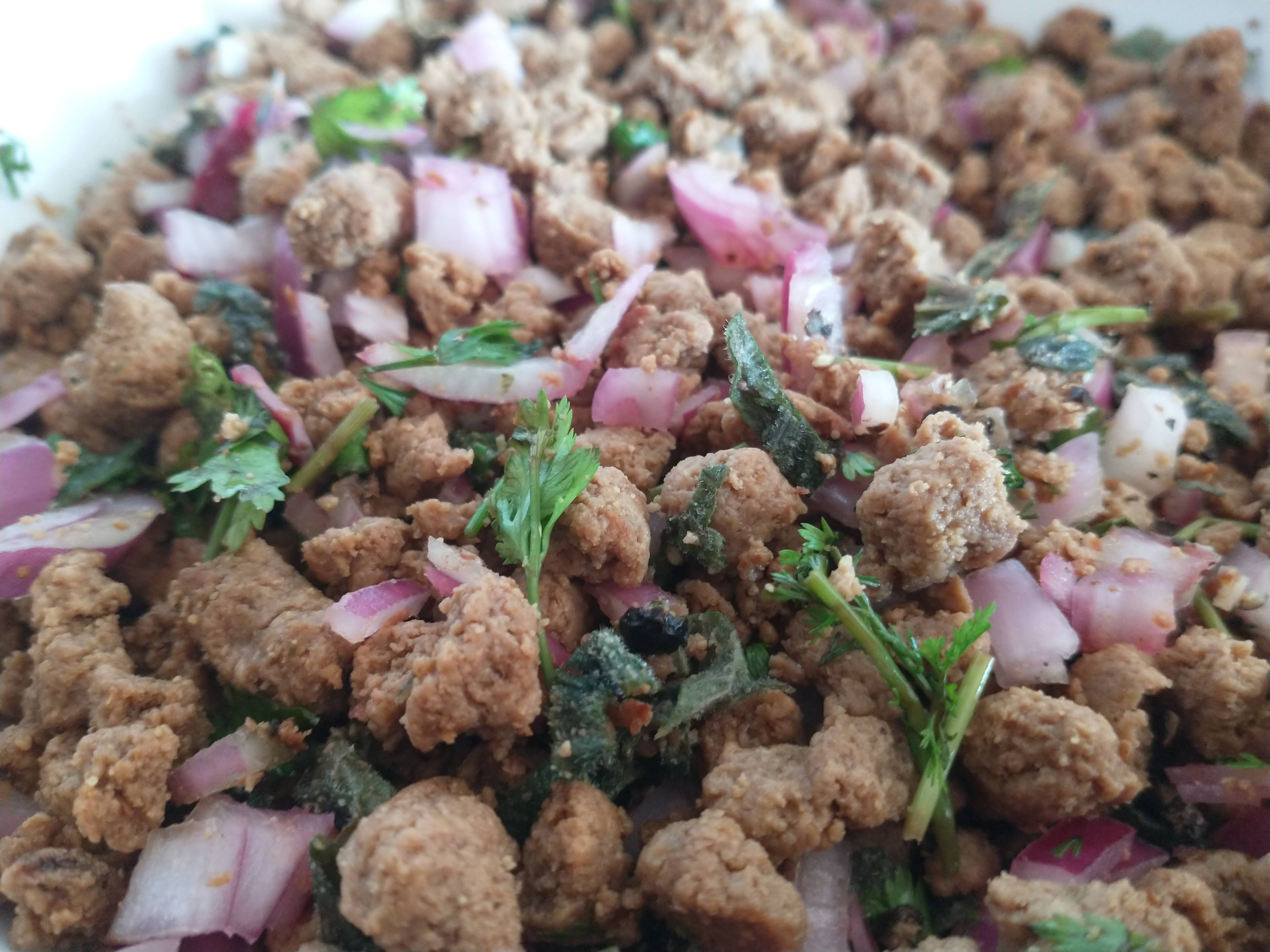
VARIATIONS
One of the lovely things about this dish is that you really can adjust it to your taste. There are some variations. If you like heat, add chilli flakes (flakes are better than fresh chilli). This was one of the dishes we tasted in Lao that wasn’t searingly hot, the spice coming from the pepper rather than chilli, but it’s fine to add more heat if you like it. If you’d like to add some sweetness, sprinkle in a little sugar and mix in.
There is also an important and popular variation where you can add roasted ground rice powder for an additional nutty complexity to the flavour and texture. It’s very simple: place a handful of uncooked Thai rice in a dry frying pan and roast the rice for 10 minutes or so, moving about in the pan until the rice is brown. Then transfer to a pestle and mortar or a spice grinder and grind to a powder.
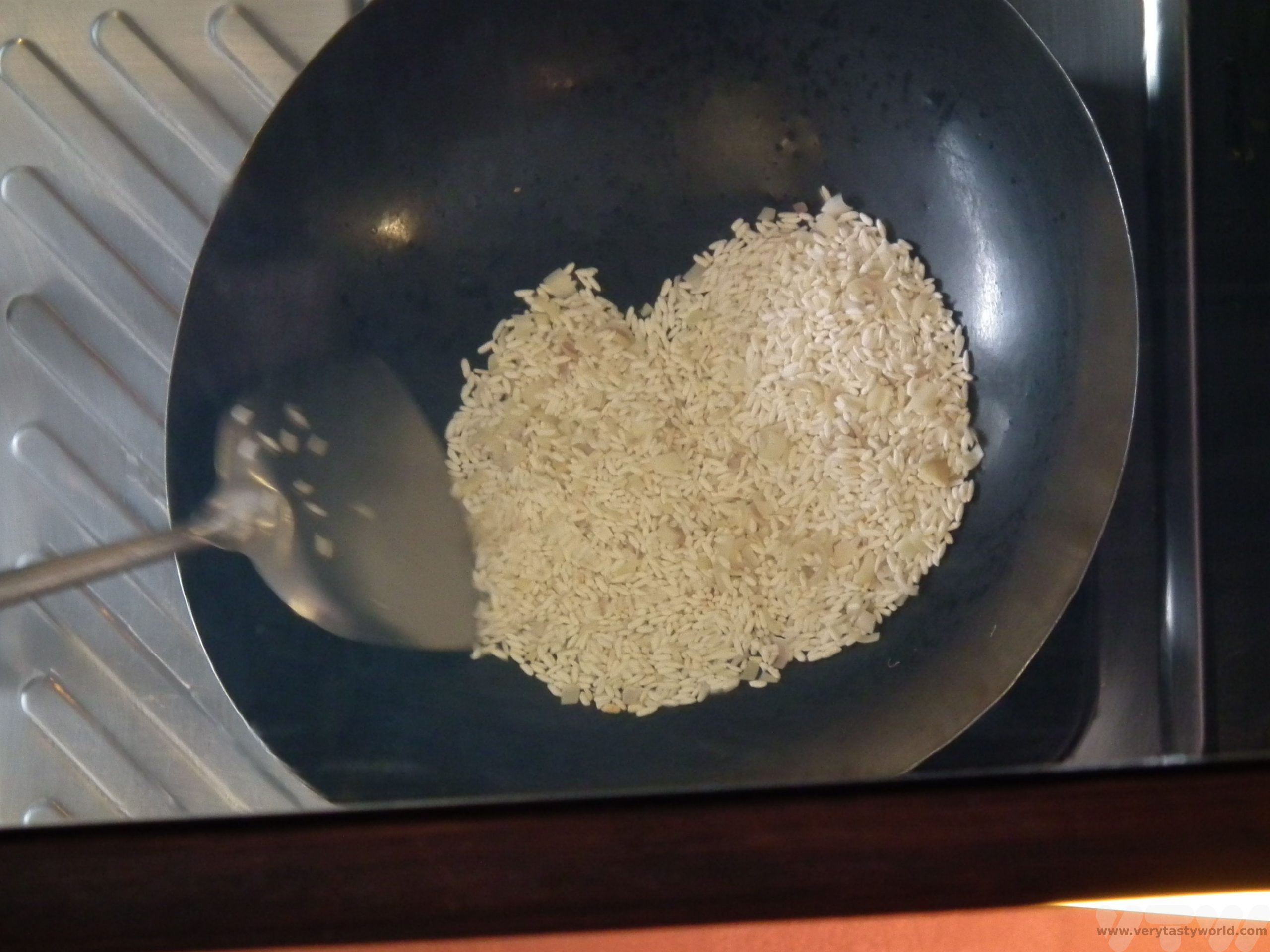
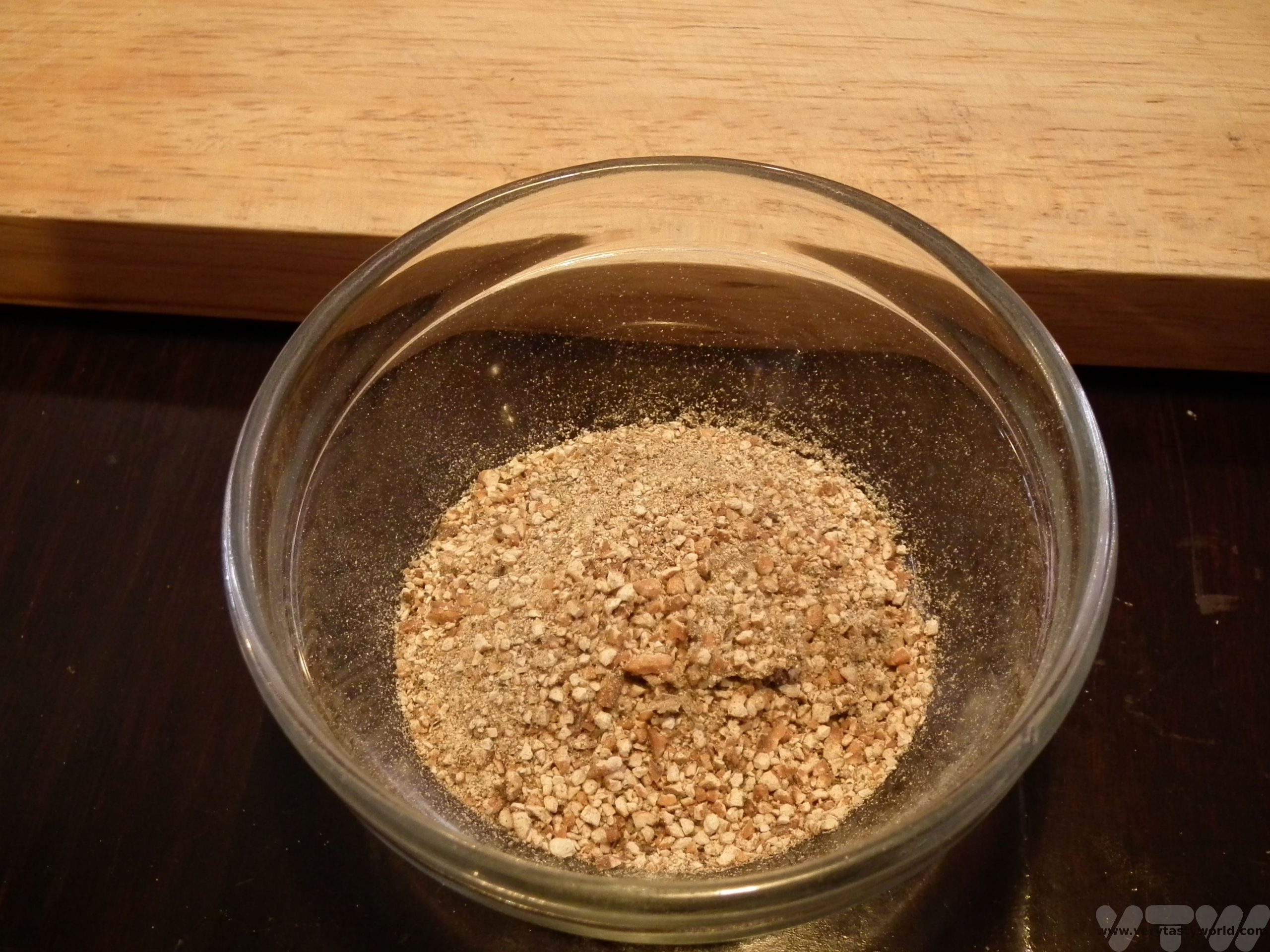
(You can actually toast more rice to make a greater quantity of this powder; it will keep for a couple of months in an airtight container.)

- RECIPE Oyakodon Donburi
- Zero Waste Recipes Before Your Holiday
- RECIPE: Vegetable Biryani Tamil Nadu Style
- RECIPE: Vegan Wild Garlic Pesto
- Recipe: Venetian Pasta Sauce
- RECIPE: Biryani Raita Recipe
- RECIPE: How to Make Costa Rica’s Gallo Pinto
- Recipe: Japanese Simmered Pork Belly – Buta no Kakuni
- RECIPE: How to Make Umeboshi
How to Cross the Road in Vietnam
One of the most striking things that the first time visitor to Vietnam will notice, from the moment you exit the airport arrivals area, is the sheer number of scooters. Motorcycles are the preferred means of transportation for local people – they are cheap, convenient and can carry entire families if needed. It is estimated that there are around 45 million scooters on the road in a country of around 92 million people. It is impossible to visit any city in Vietnam without seeing – and hearing – masses of motorbikes at all times of the day and night.
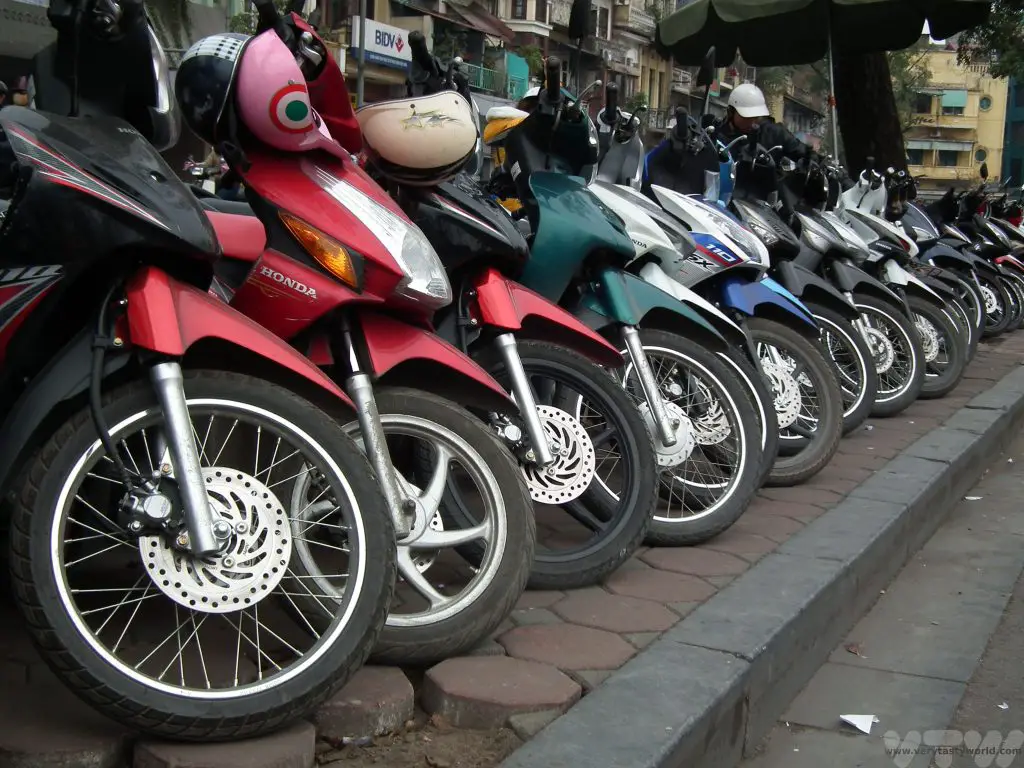
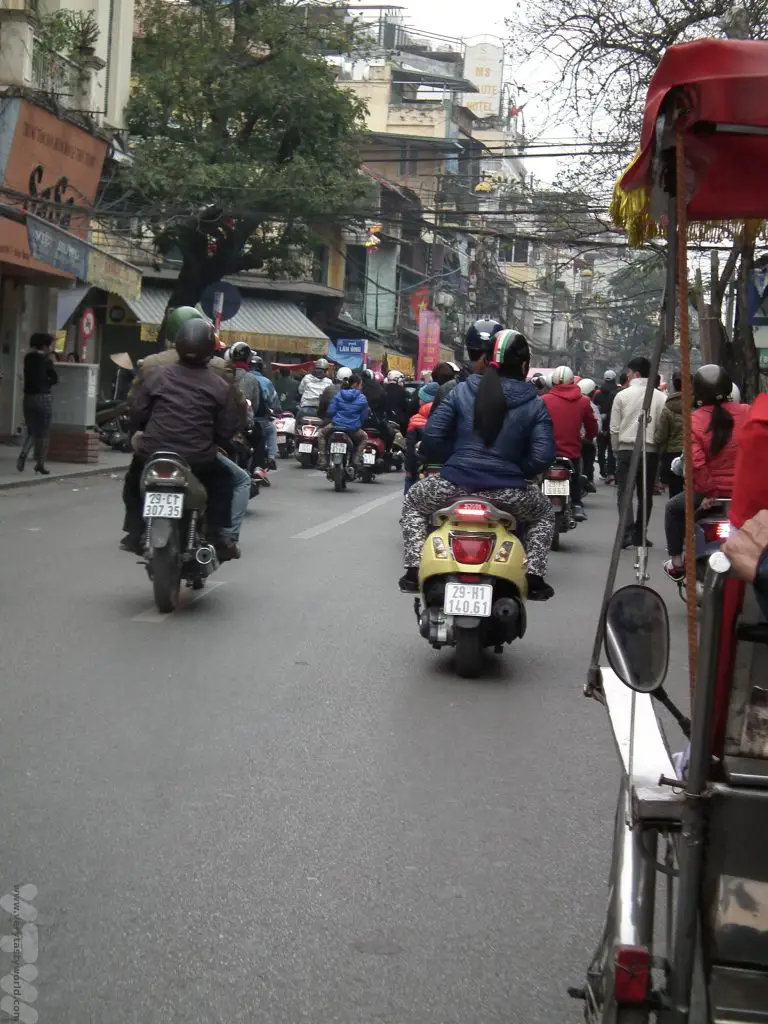
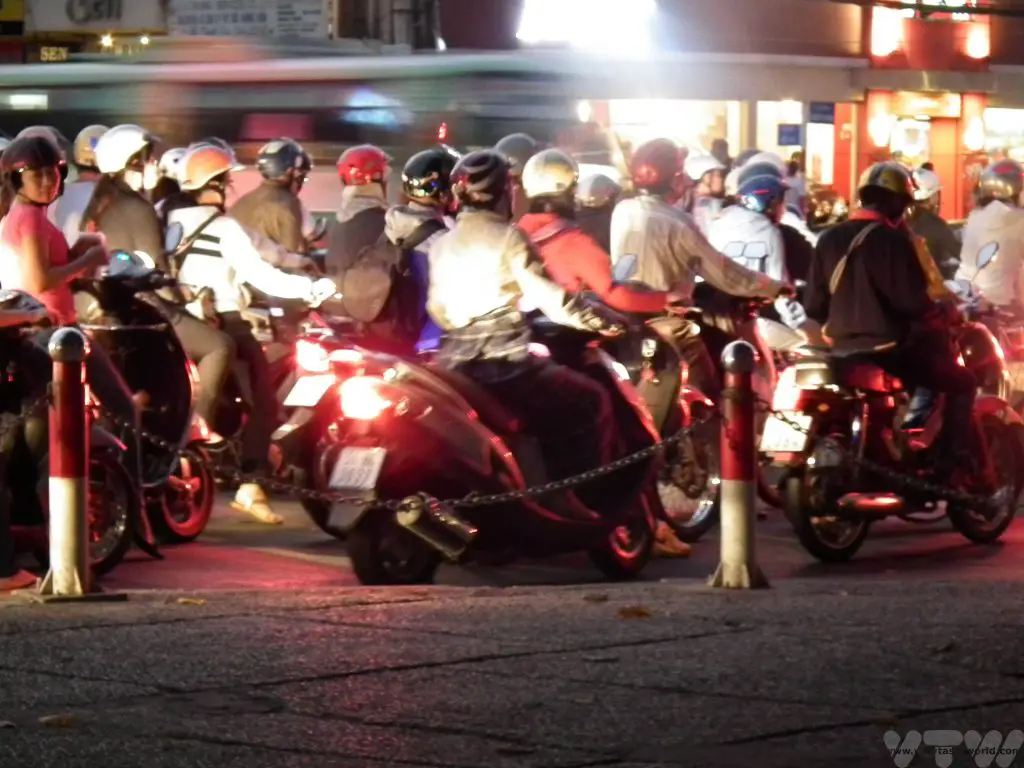
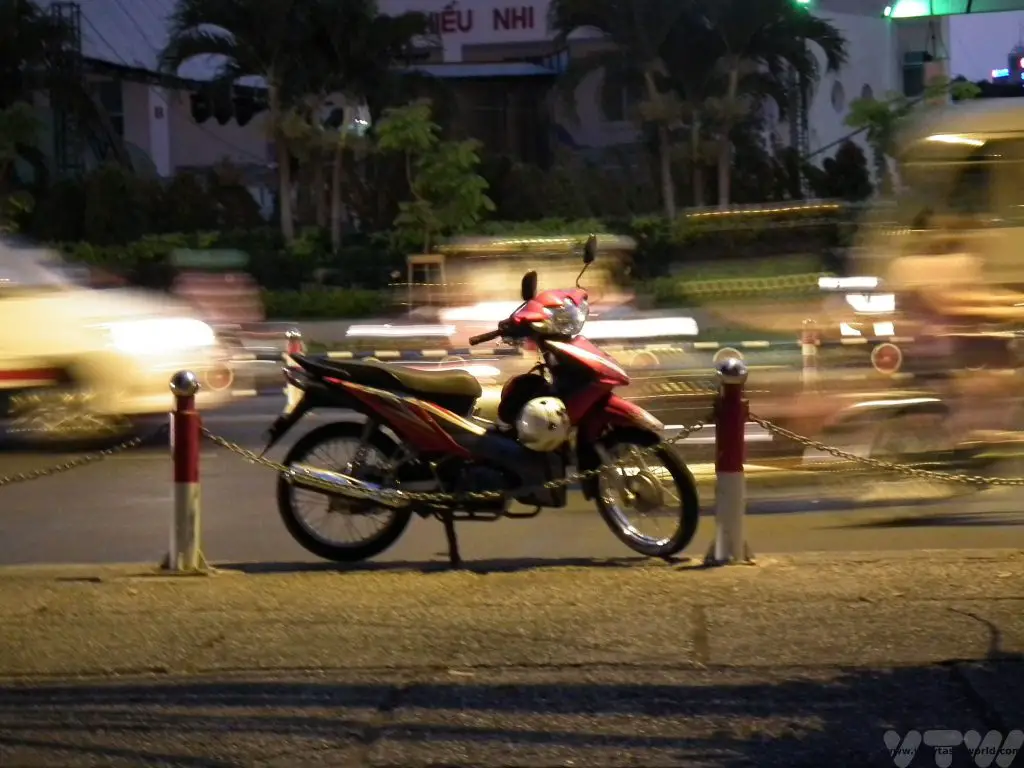
While they are clearly a hugely convenient mode of transport they do present something of a challenge for tourists who want to cross the road. And most tourists do want to cross the road at some point, otherwise they would only be able to turn left and walk around the block. Or turn right and walk around the block the other way. Which would be sad as there are so many amazing sights in Vietnamese cities it would be a shame only to see the sights of a single block of buildings.
How To Cross the Road in Vietnam – A Guide
There are two possible courses of action.
Option 1: See if you can spot a local person who wants to cross the road at roughly the same point on the street that you do. Saunter up to them (without appearing to be creepy, of course), get as close as you can (definitely without appearing to be creepy) alongside them whilst maintaining an appropriate distance and preferably downstream of the traffic direction. Follow them. Try to appear nonchalant.
Option 2: Go it alone. You can do it. There is a convention to crossing the road:
Try to find a suitable crossing point. There are zebra crossings. Be aware that even though there is a crossing, the traffic won’t actually stop. Look purposeful. Develop an expression that says you REALLY want to cross the road. Hold your arm out and wave it slowly up and down. This will signal to the motorcyclists that you are planning to cross.
Take a deep breath, wait for the most appropriate gap in the traffic and step out slowly. Walk forward with arm outstretched. You might need to stop as a scooter goes past in front of you, but that’s fine.
THE GOLDEN RULE IS: NEVER STEP BACK. EVER.
Once you are committed, you have to cross. If you are in the middle of the road, there will be motorcyclists riding behind you. If you step backwards you have a very good chance of hitting one or being hit.
Just keep calm and keep crossing. The traffic will just carry on around you.
Here’s a video to show the full road-crossing experience. Please note that the camerawork won’t be winning any awards, we felt that staying alive whilst crossing took priority.

